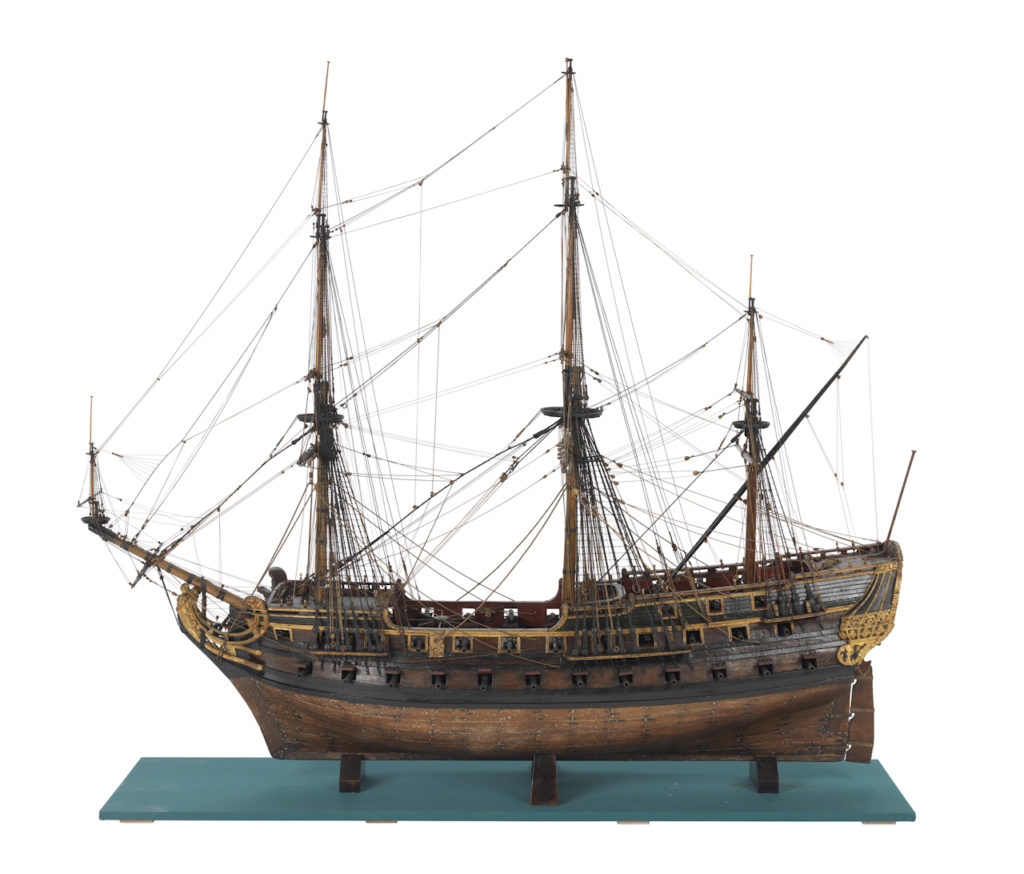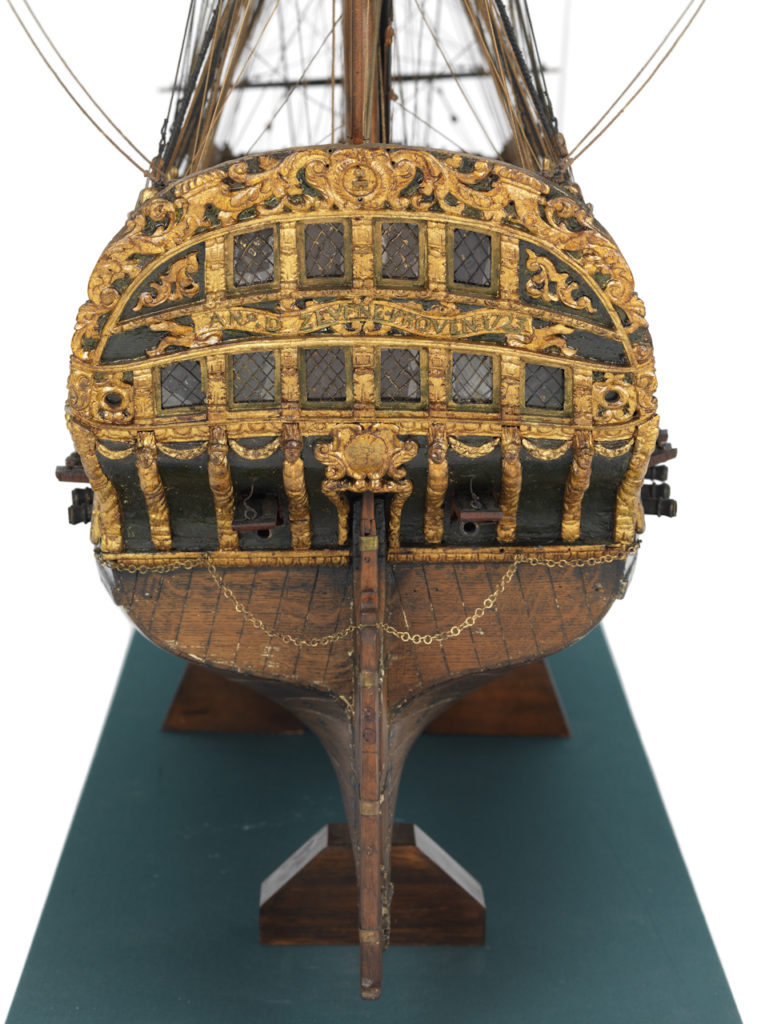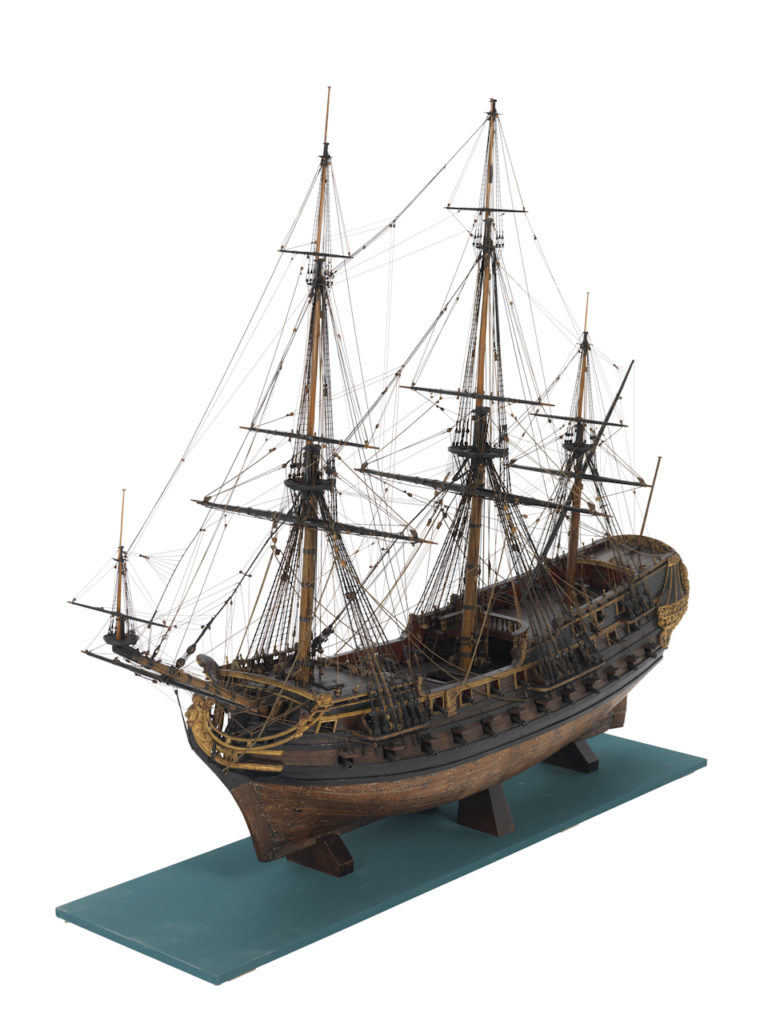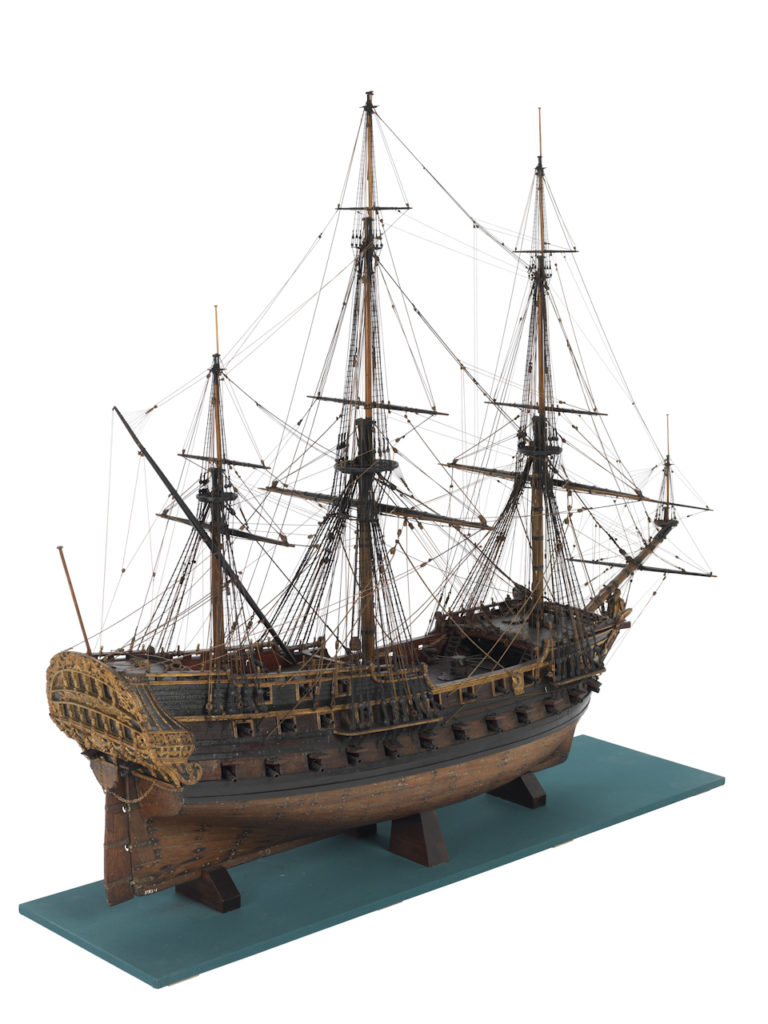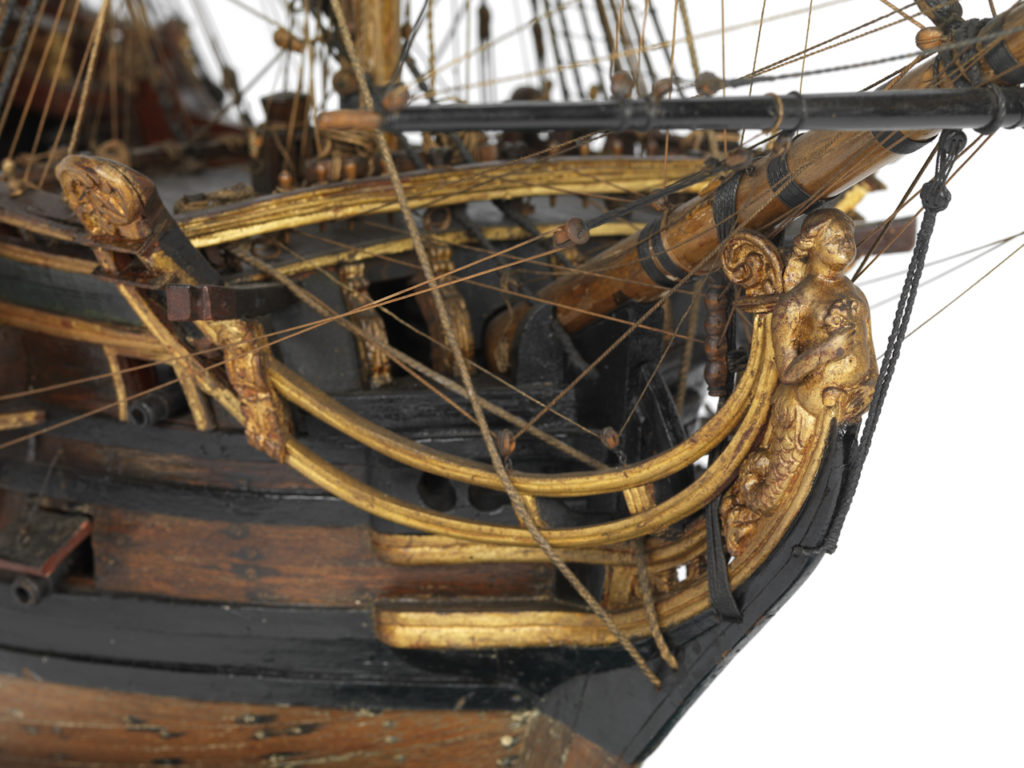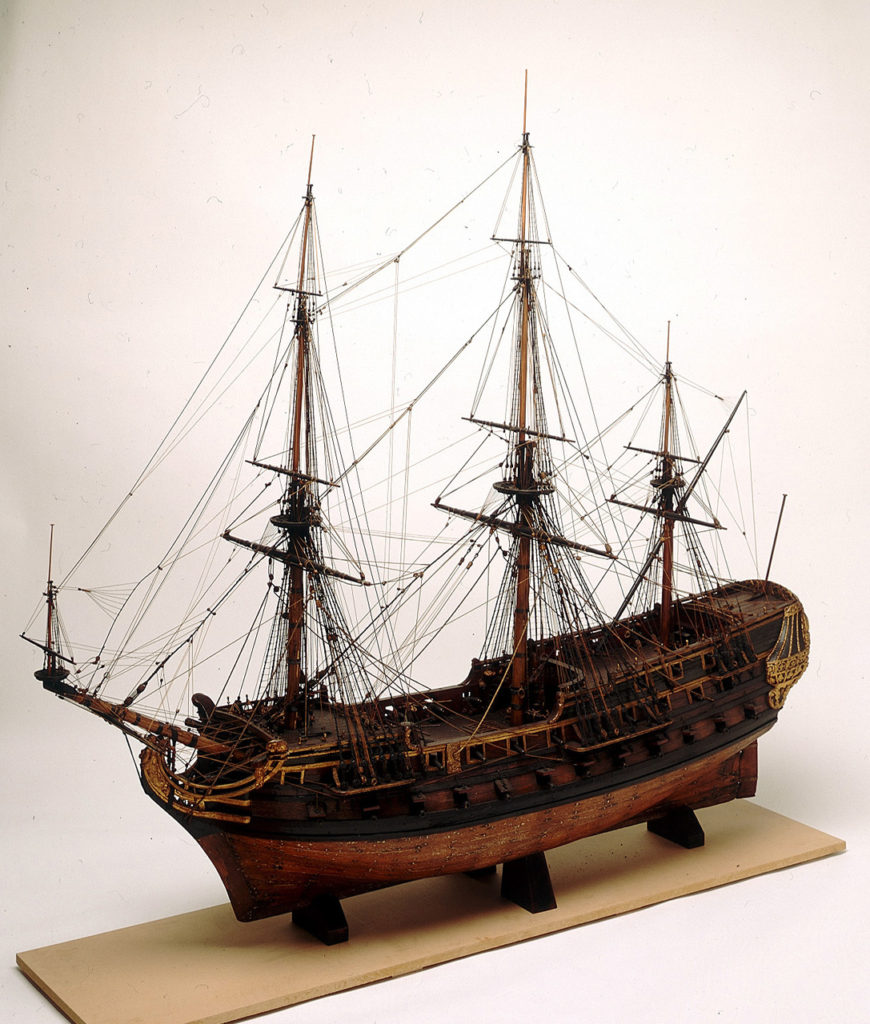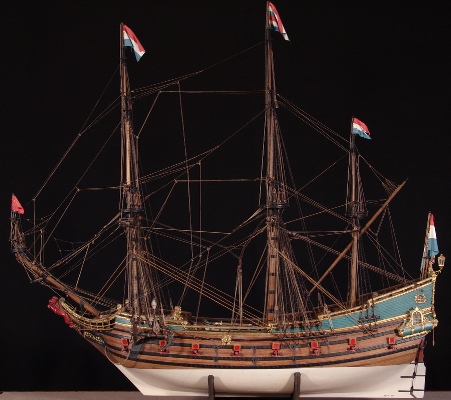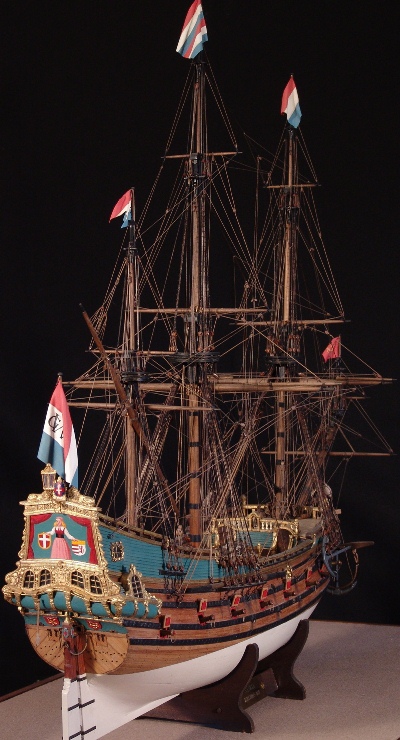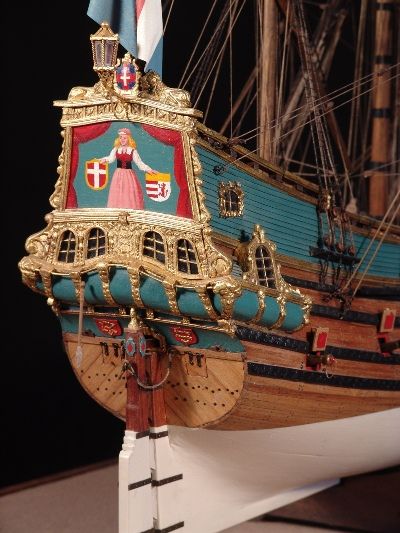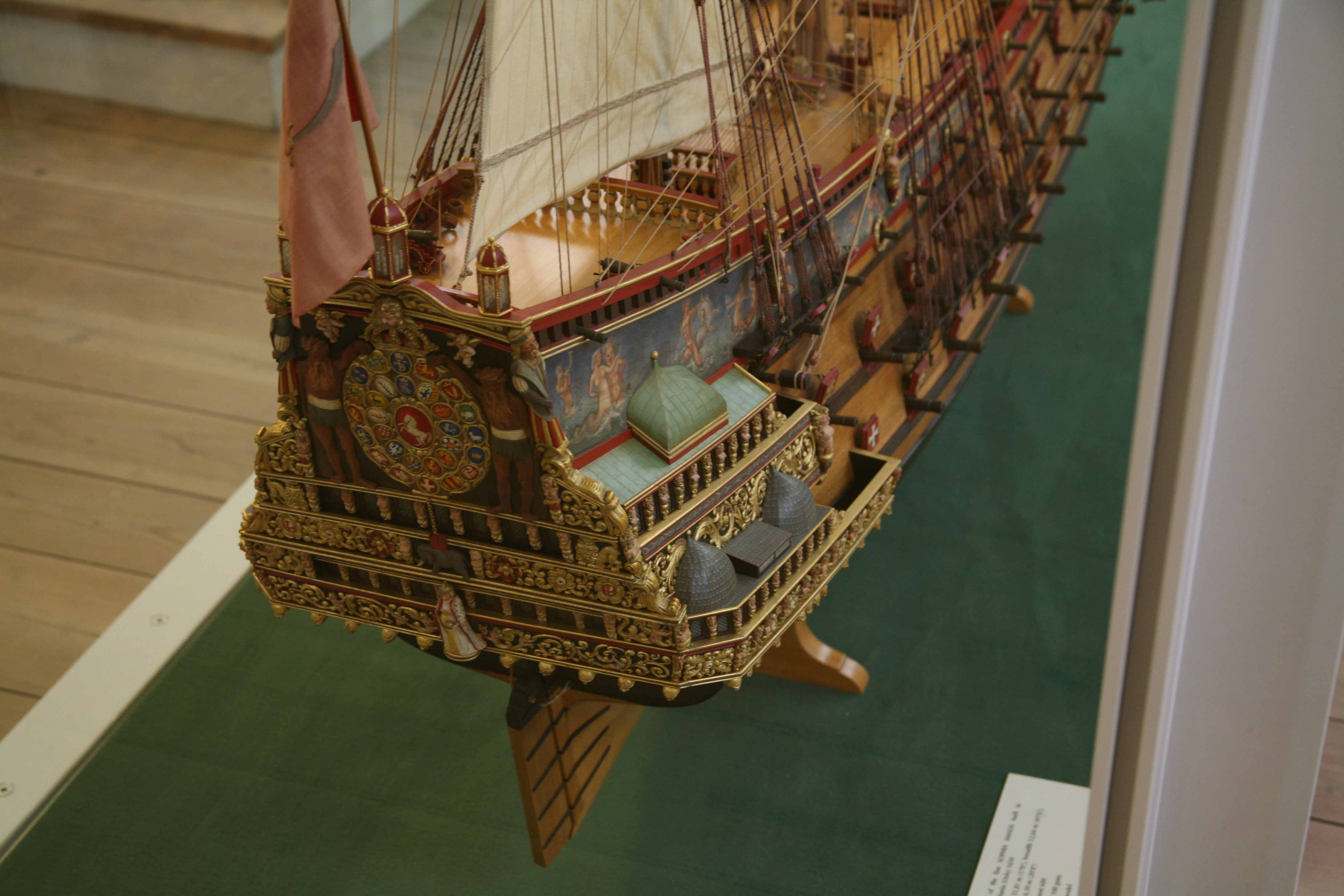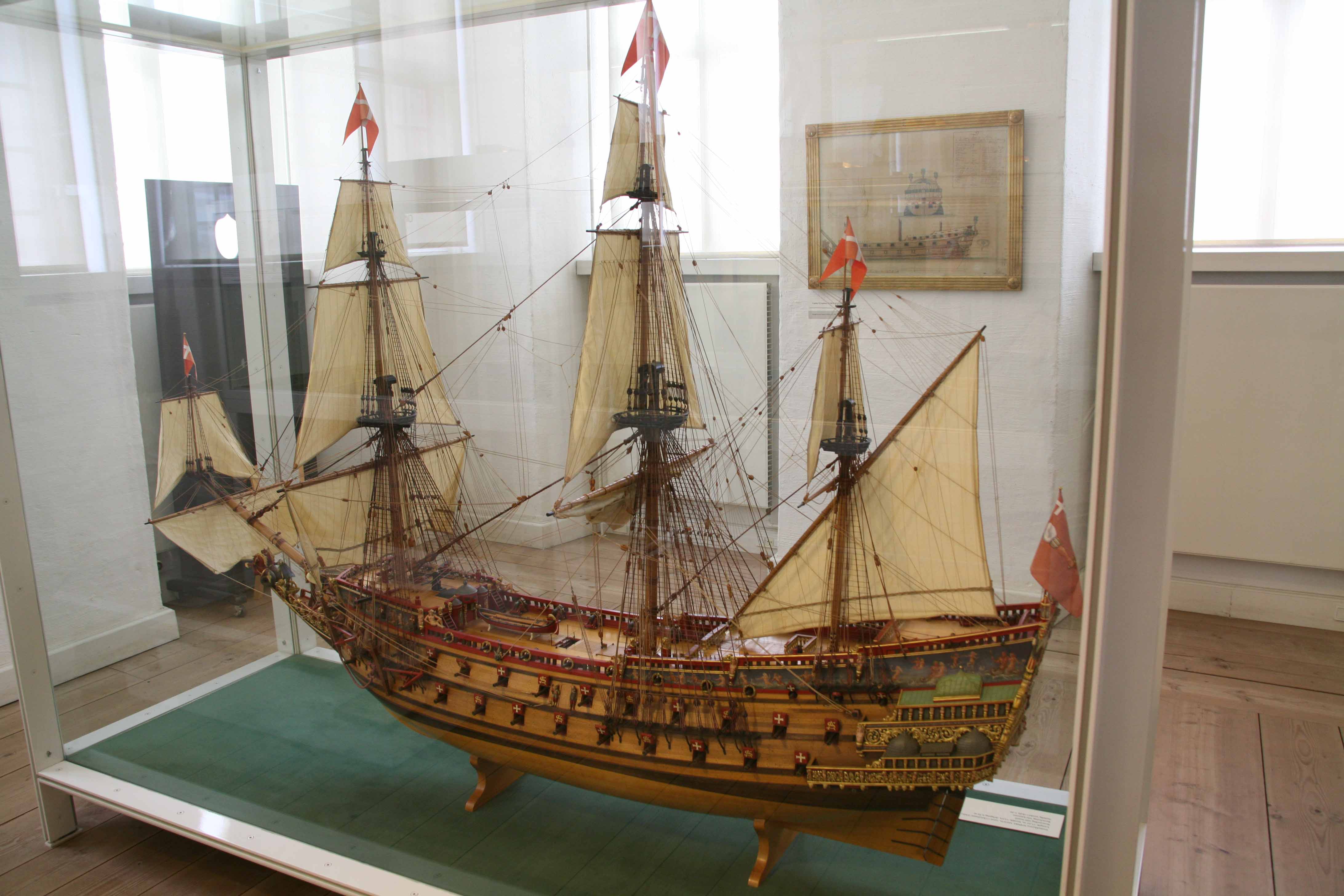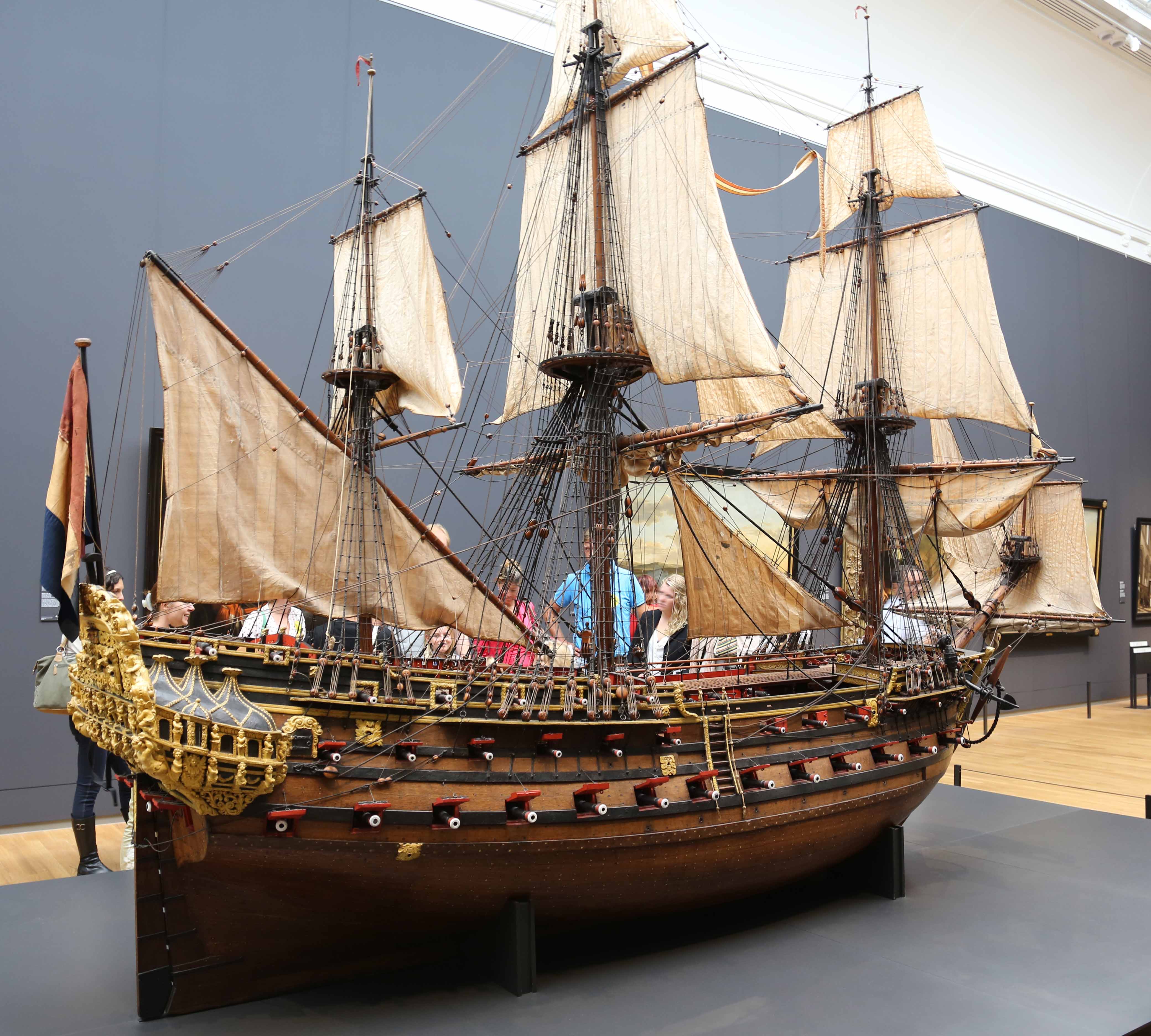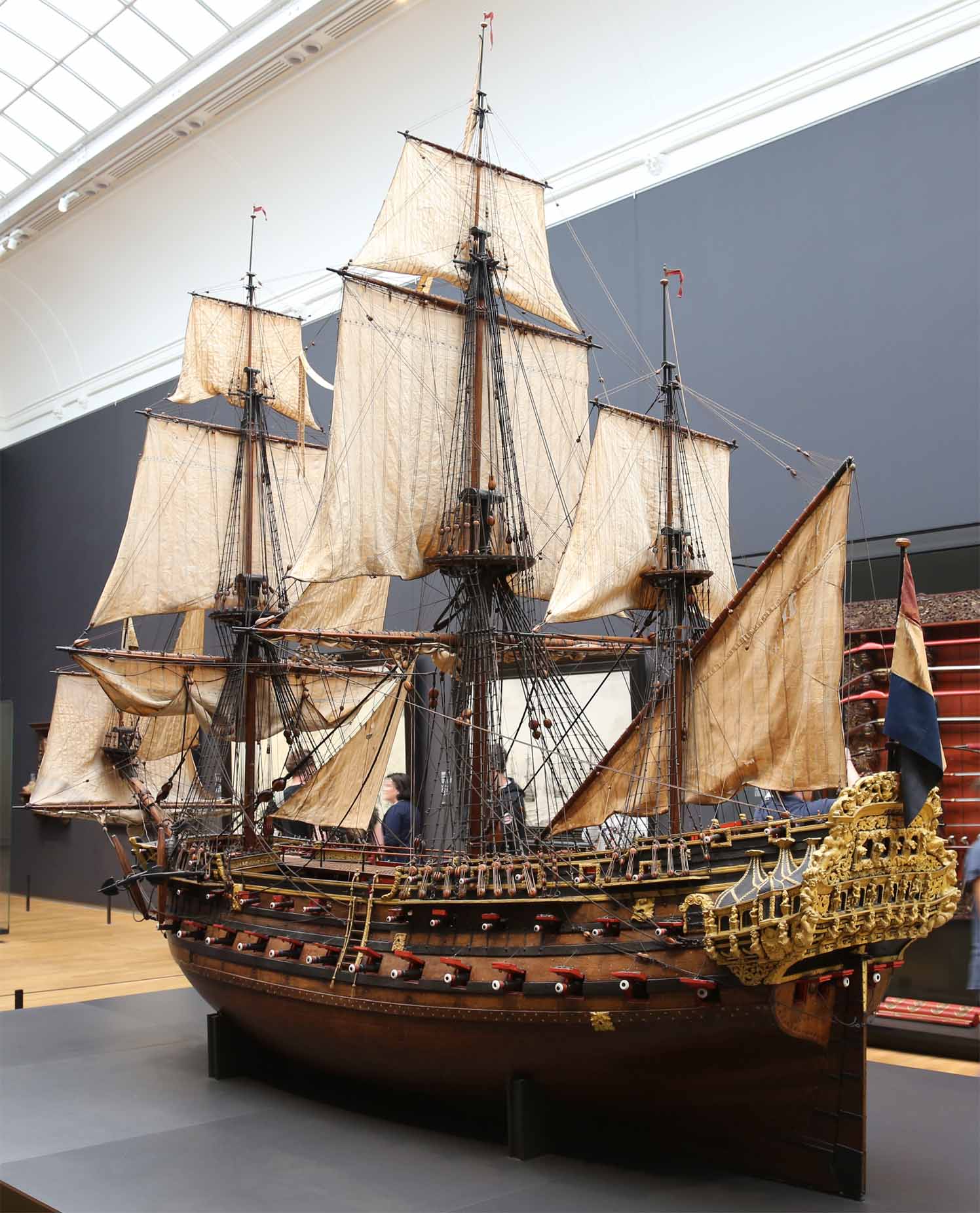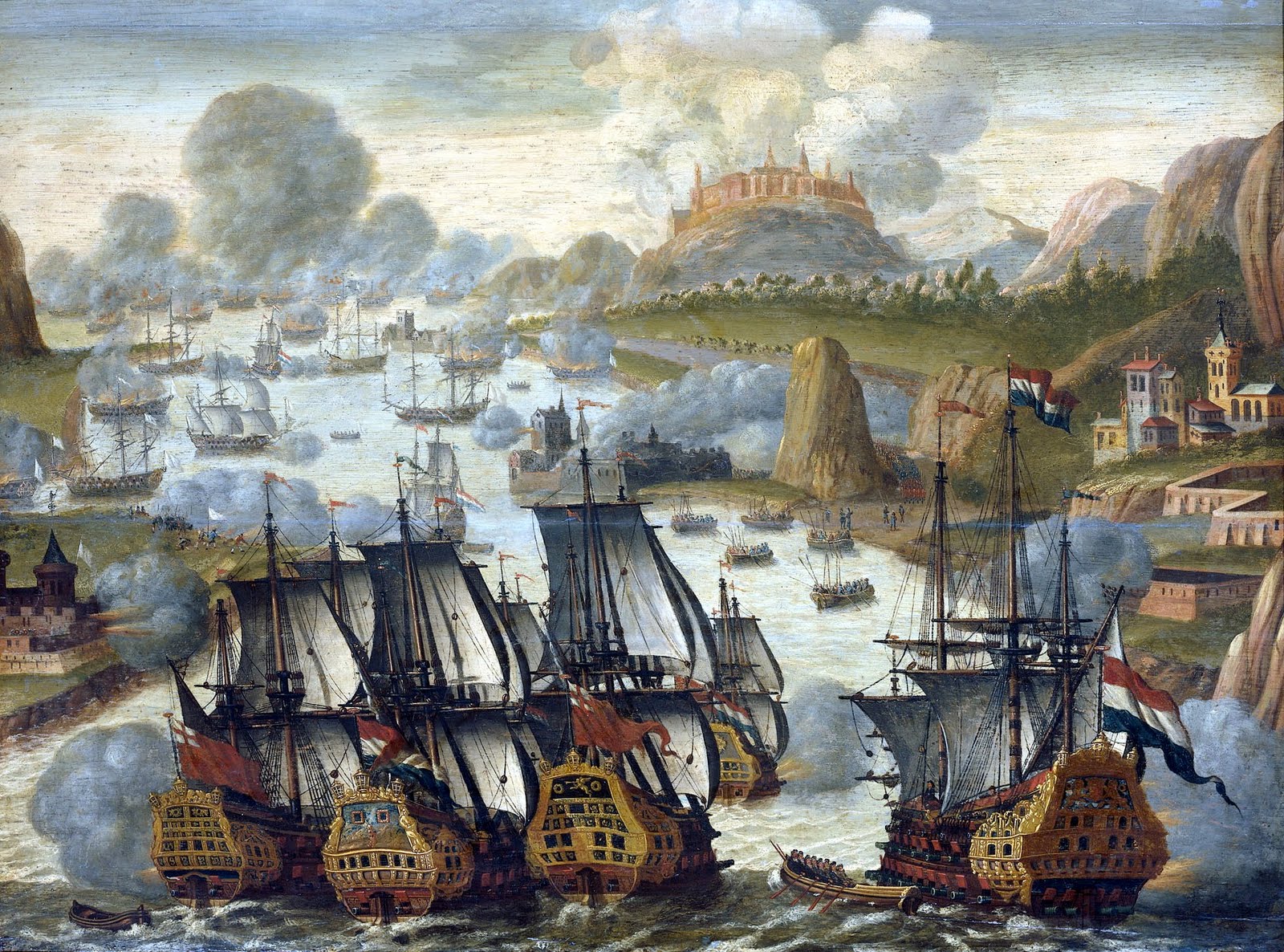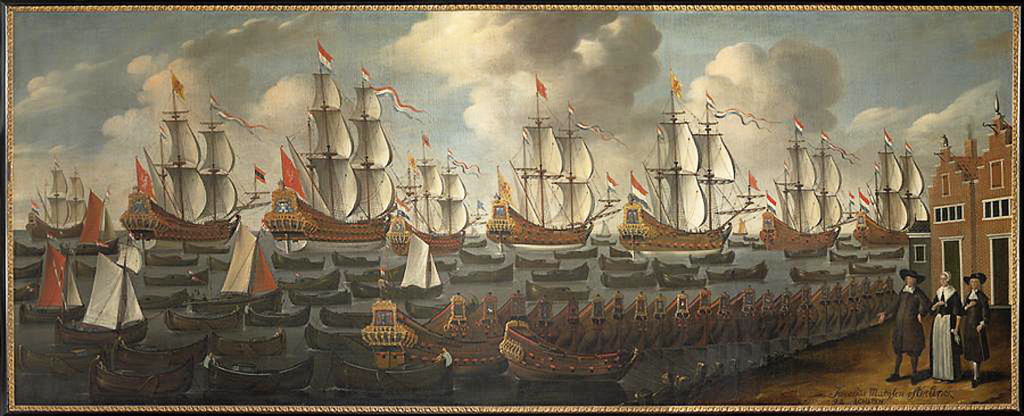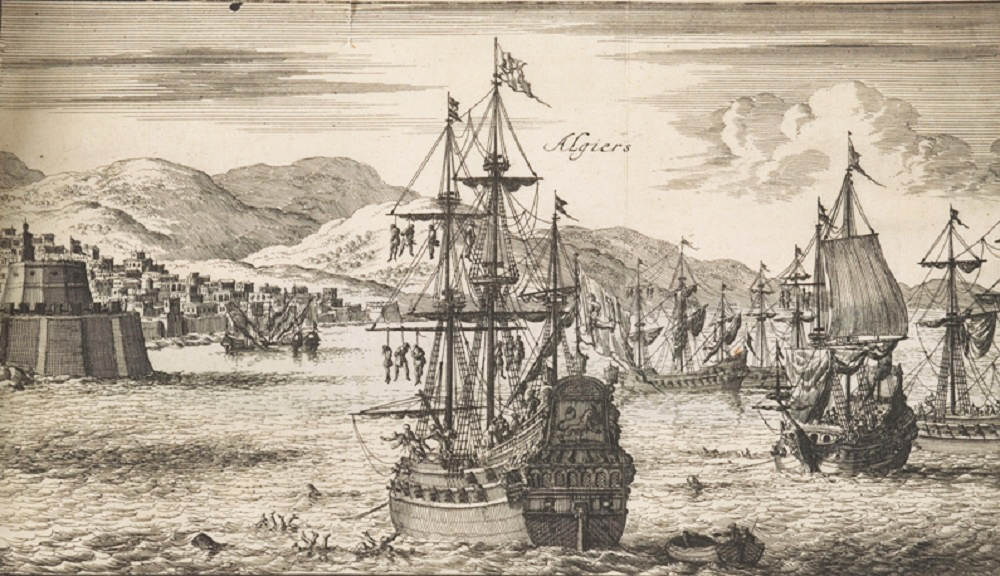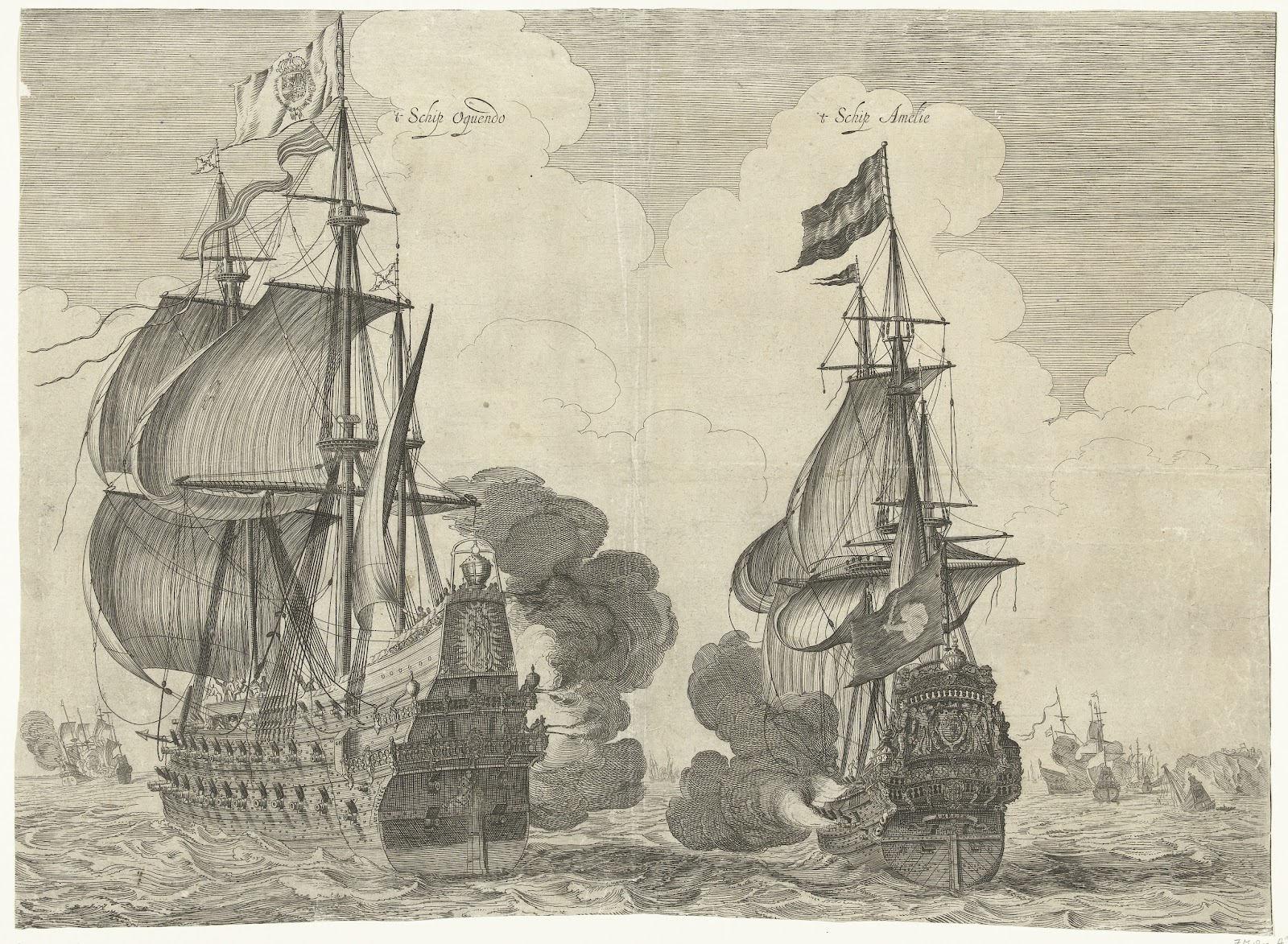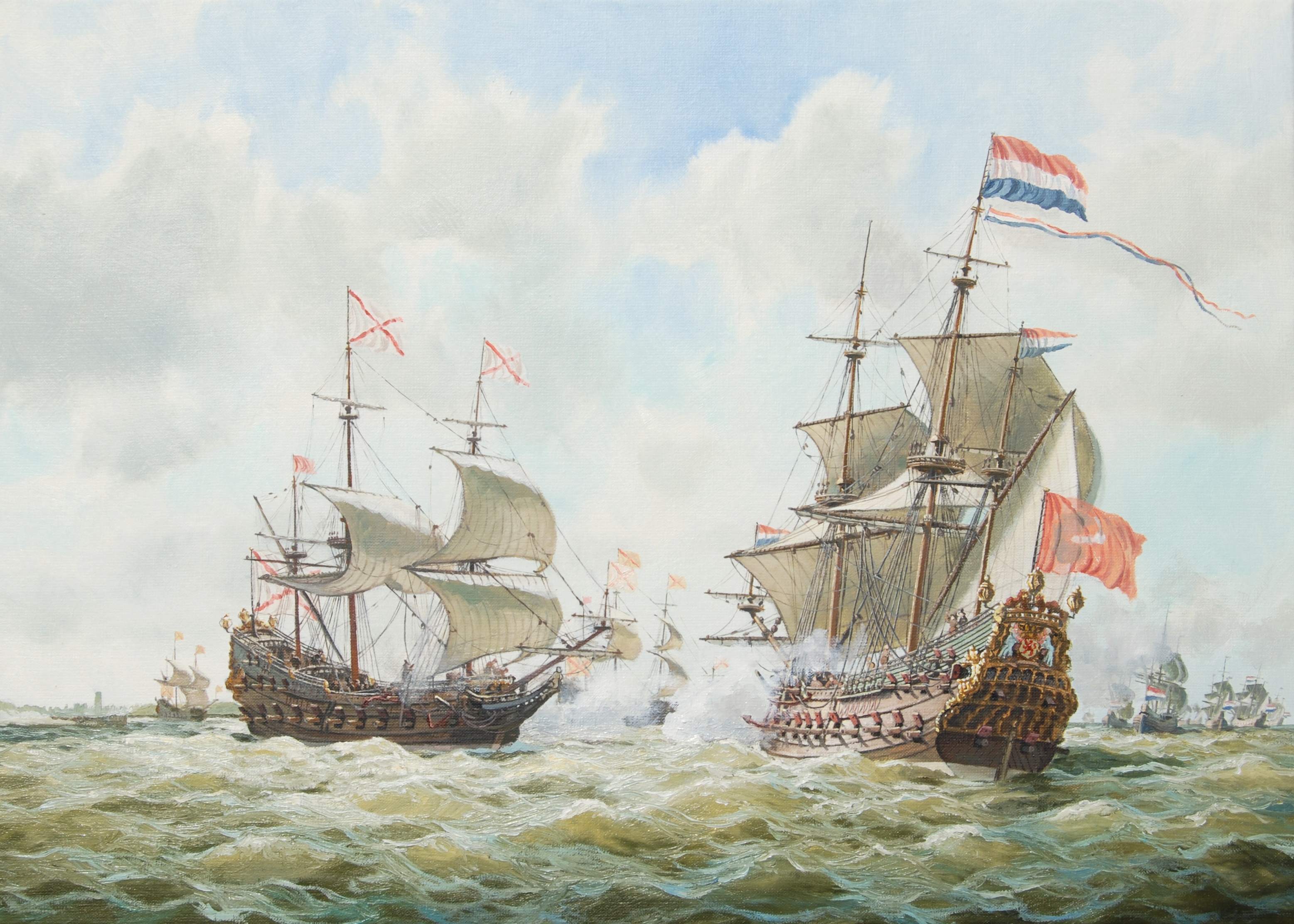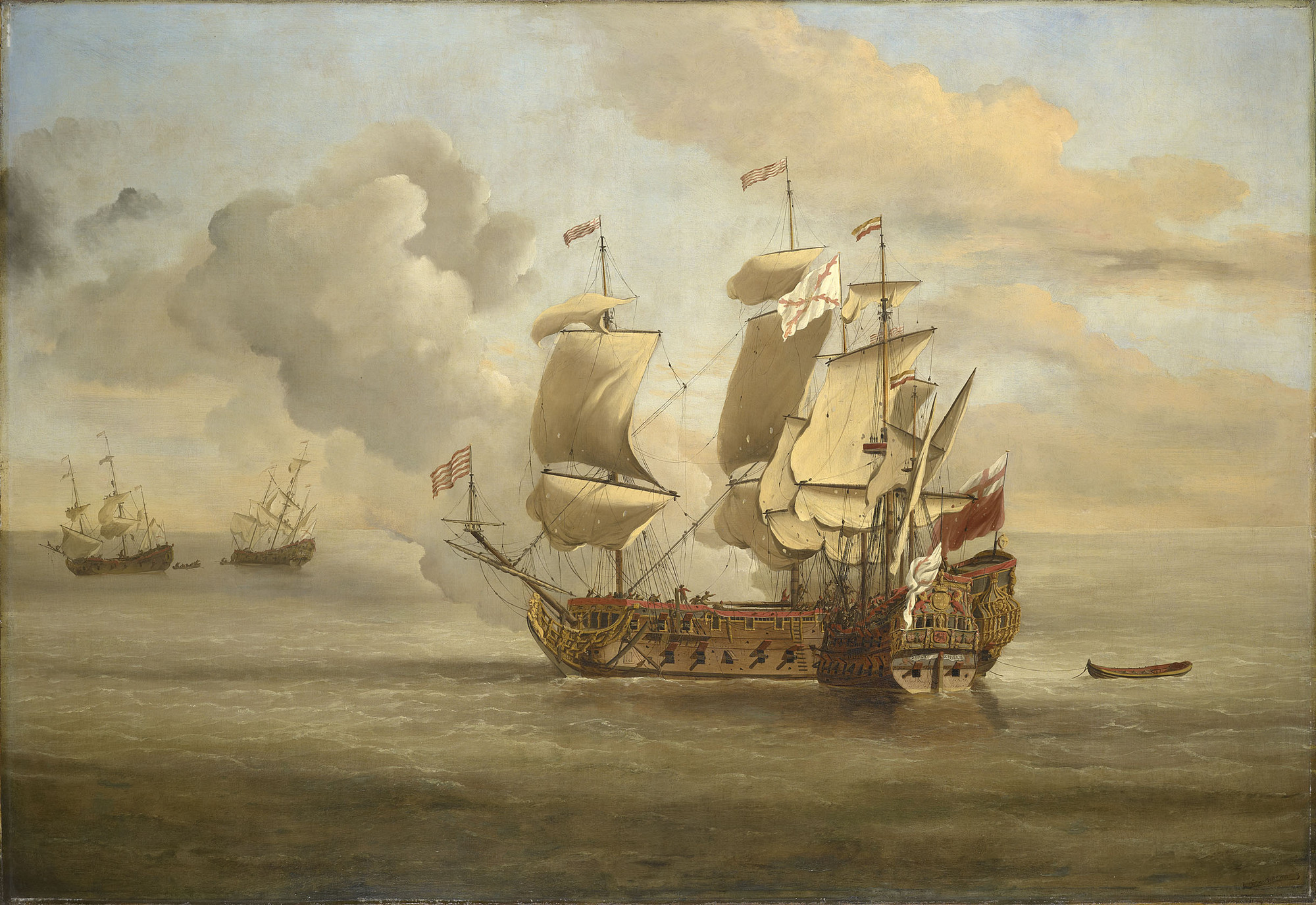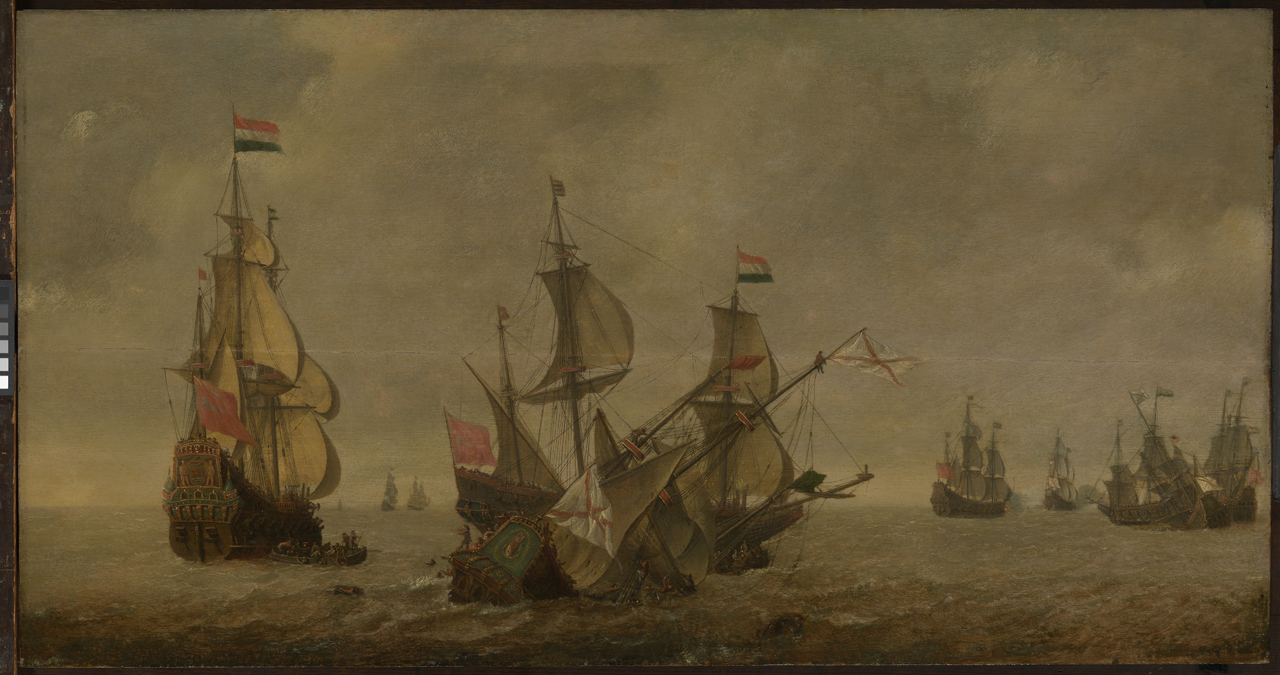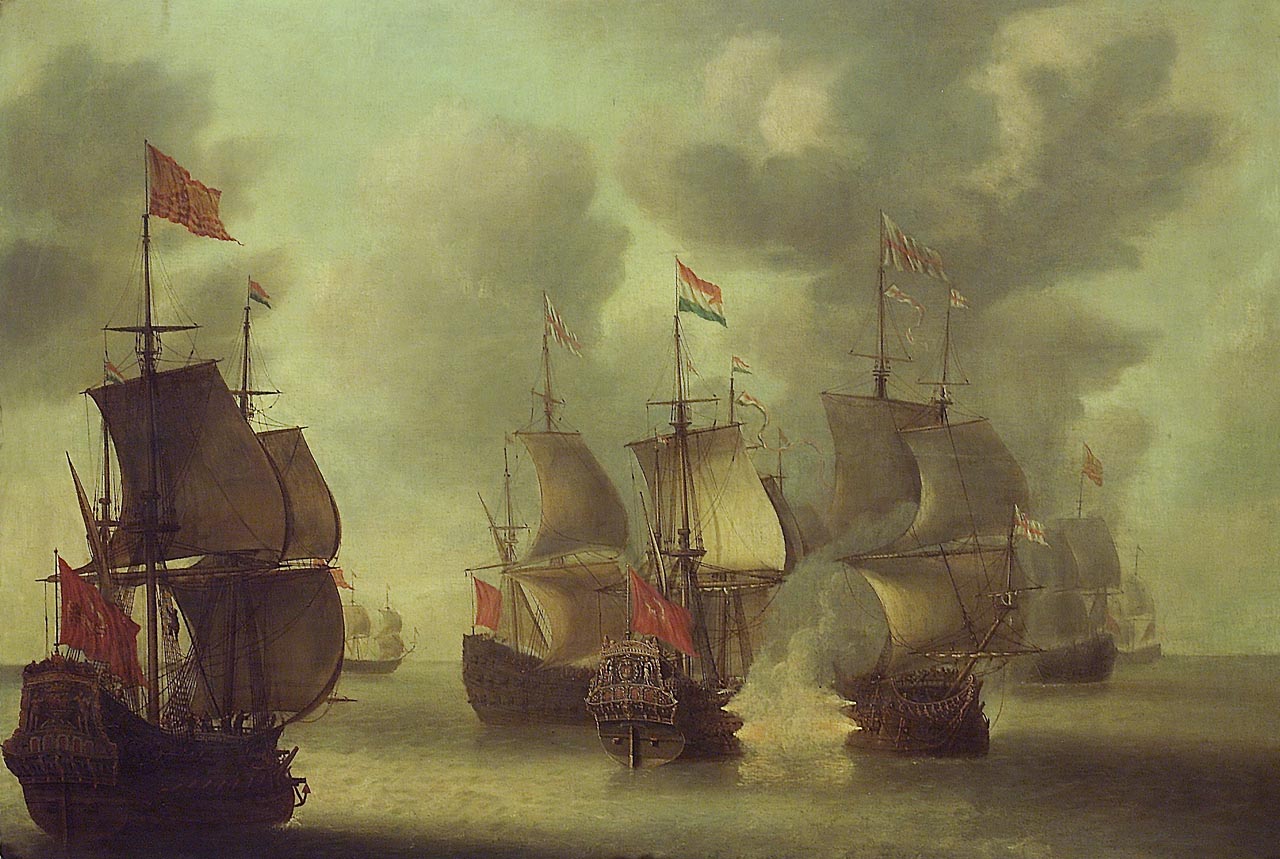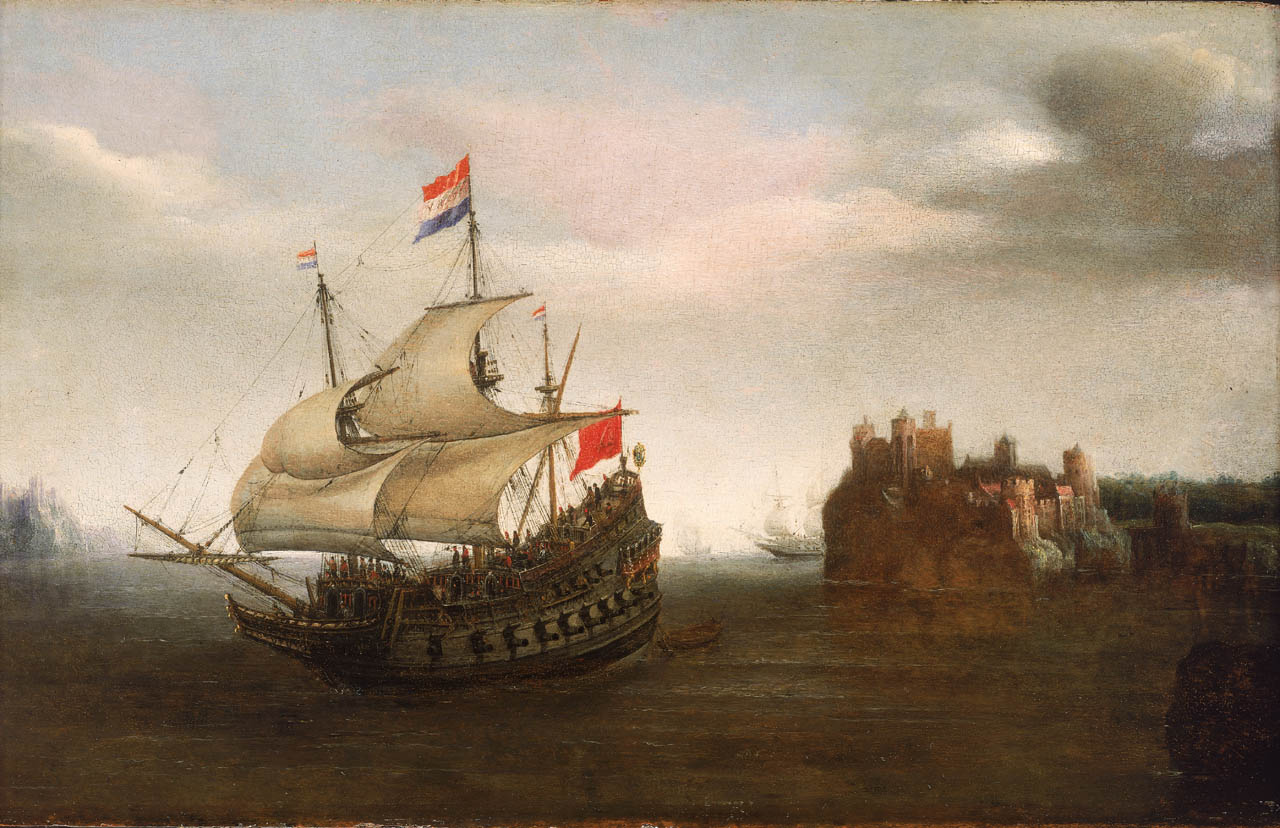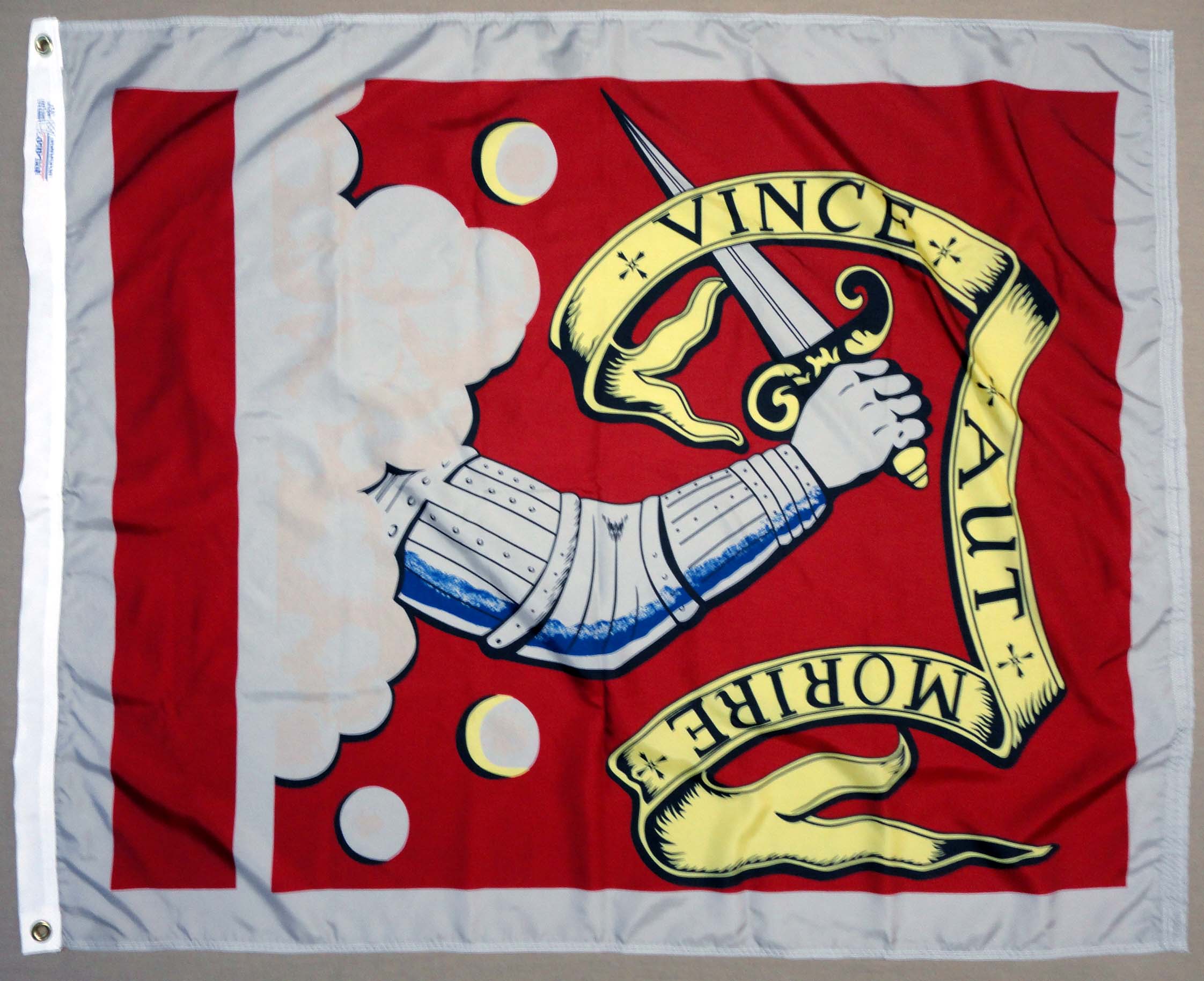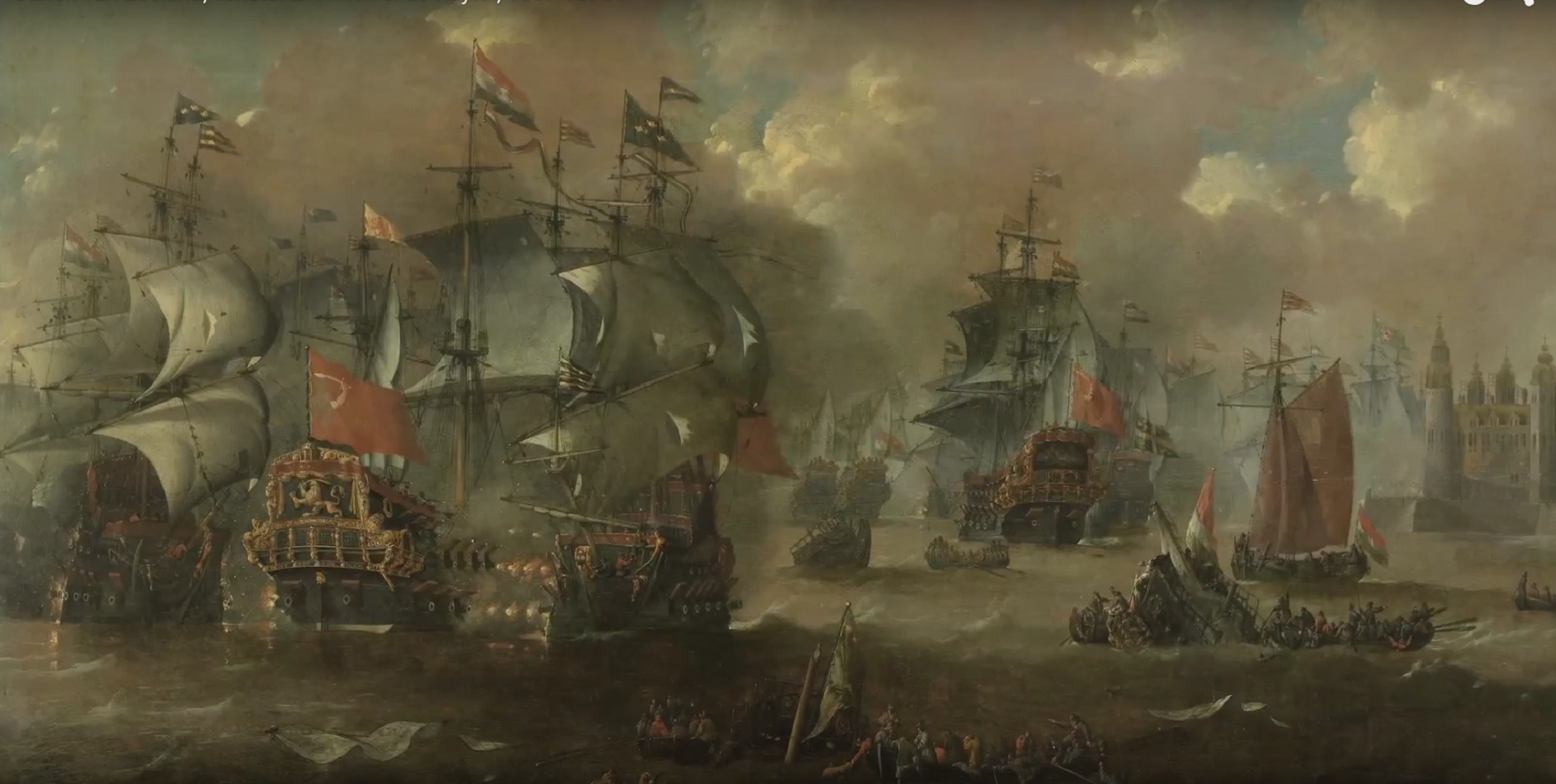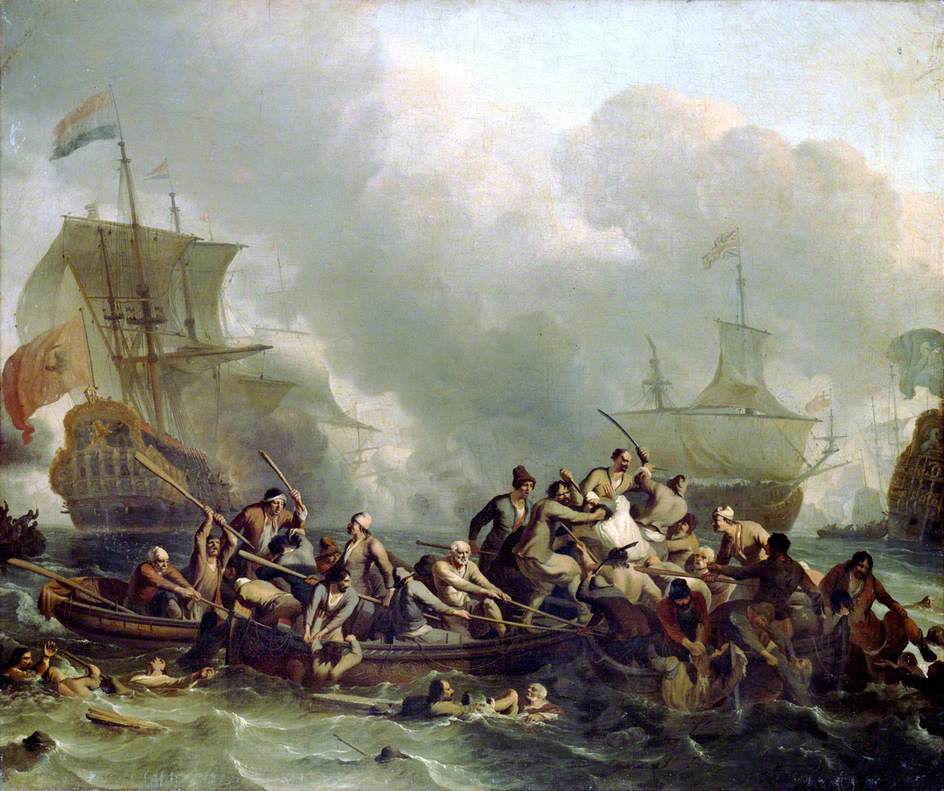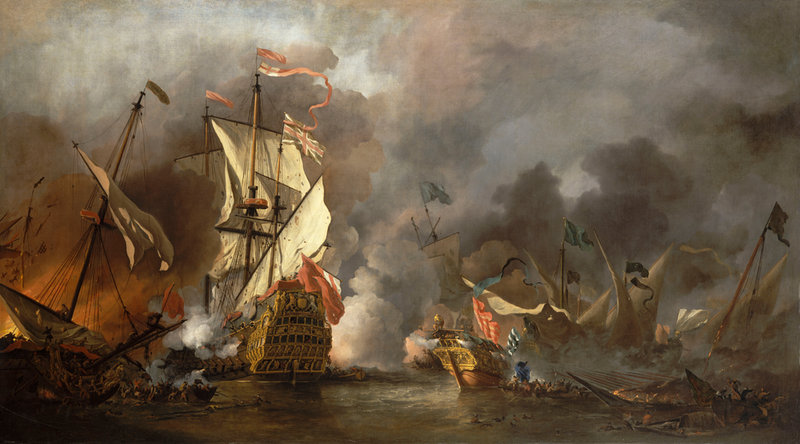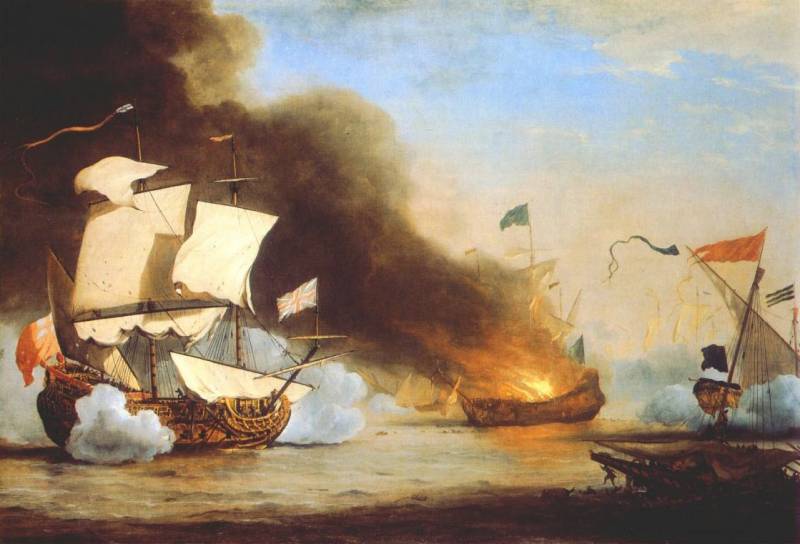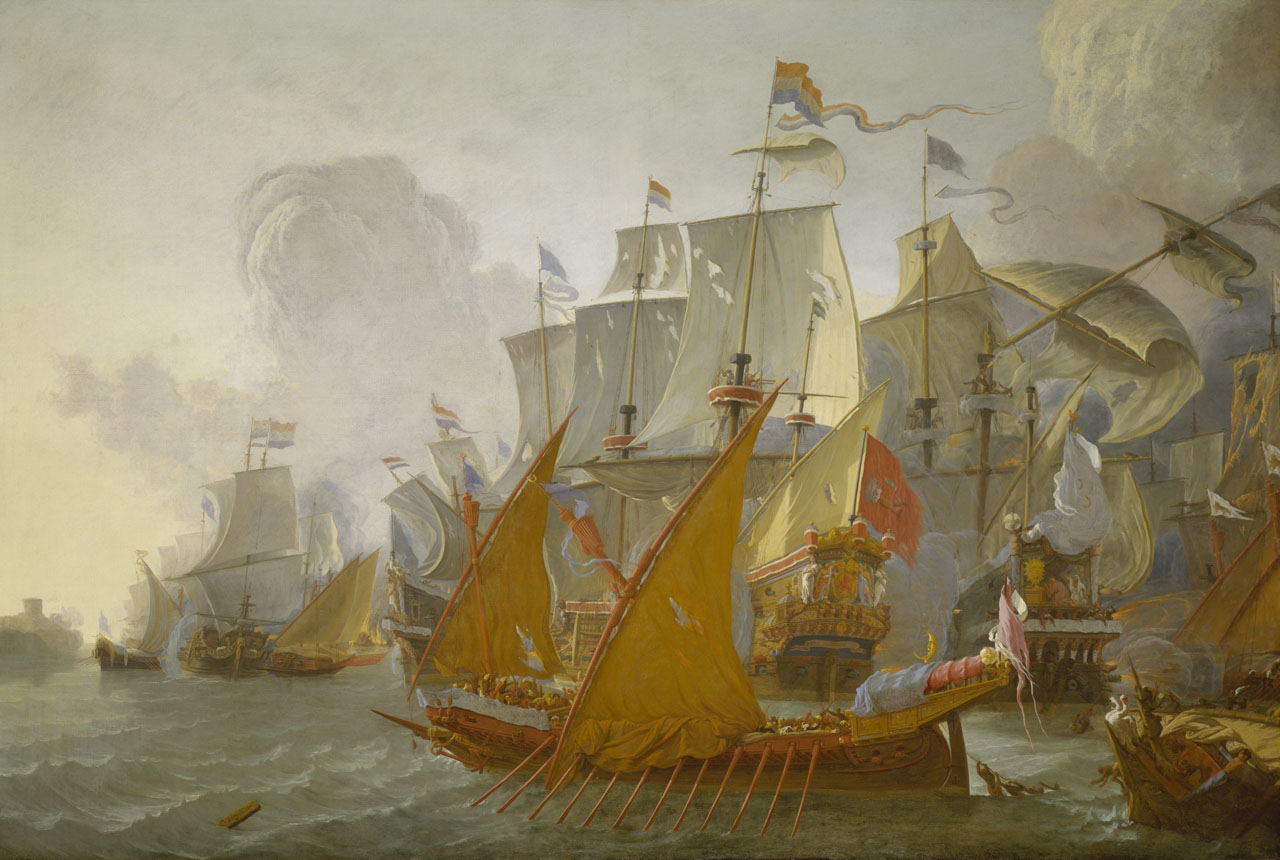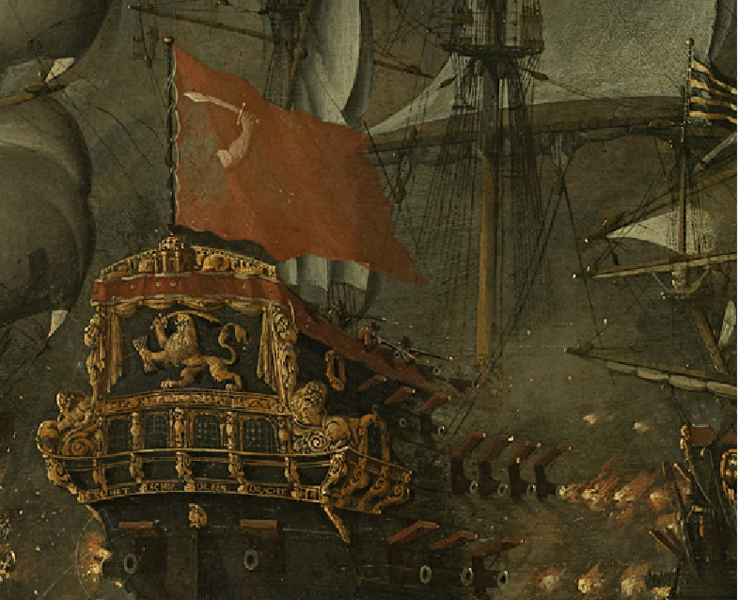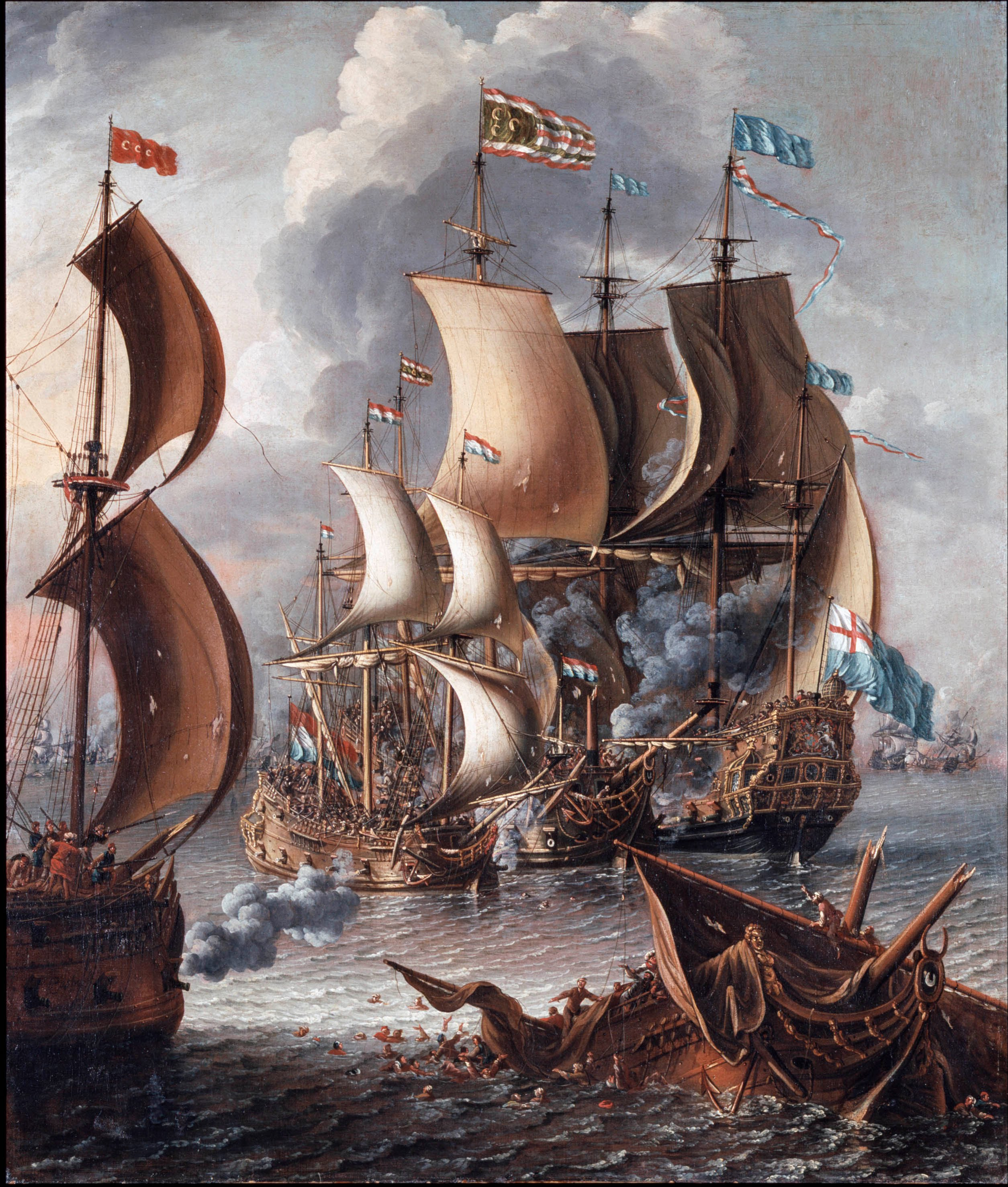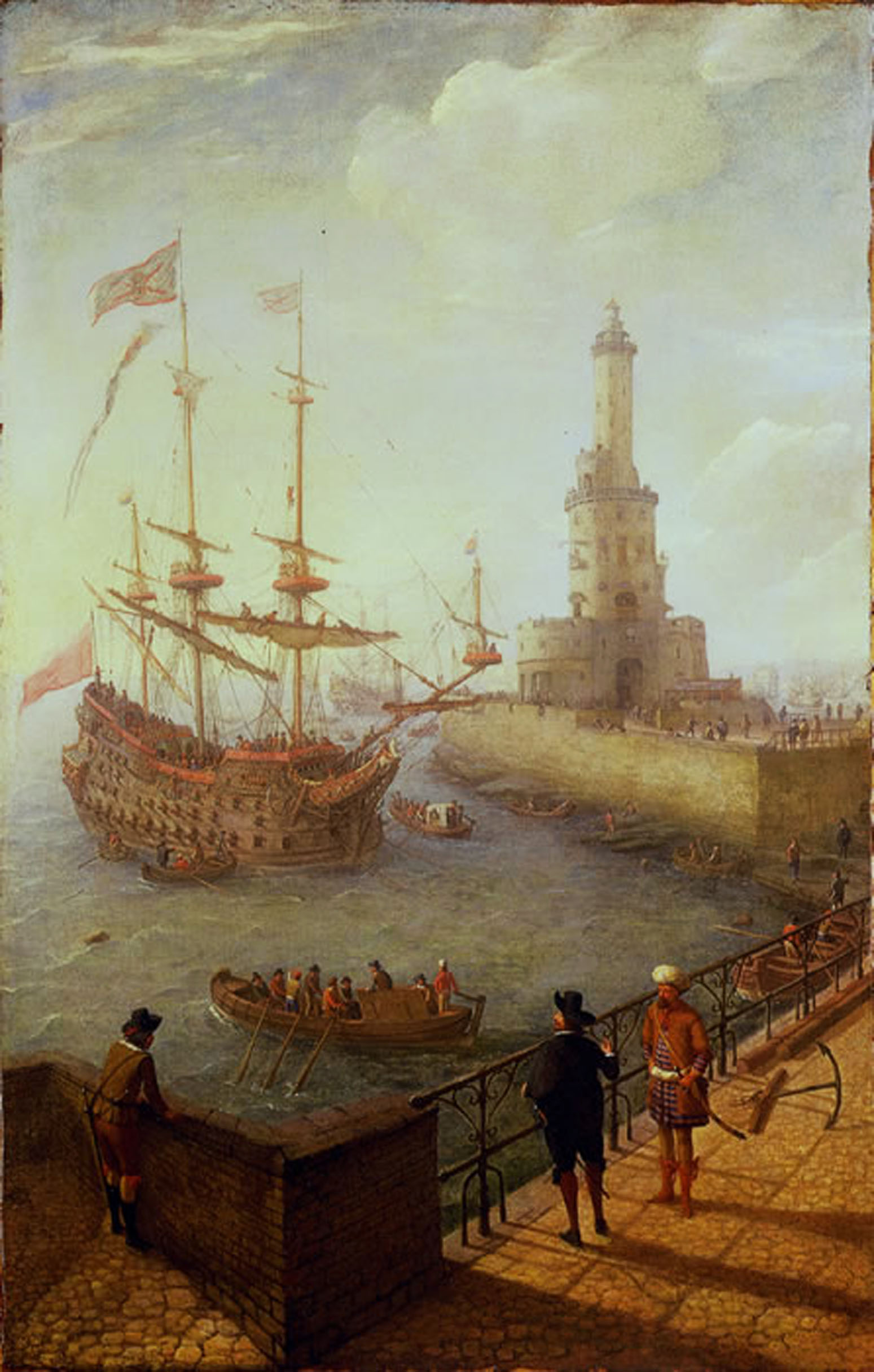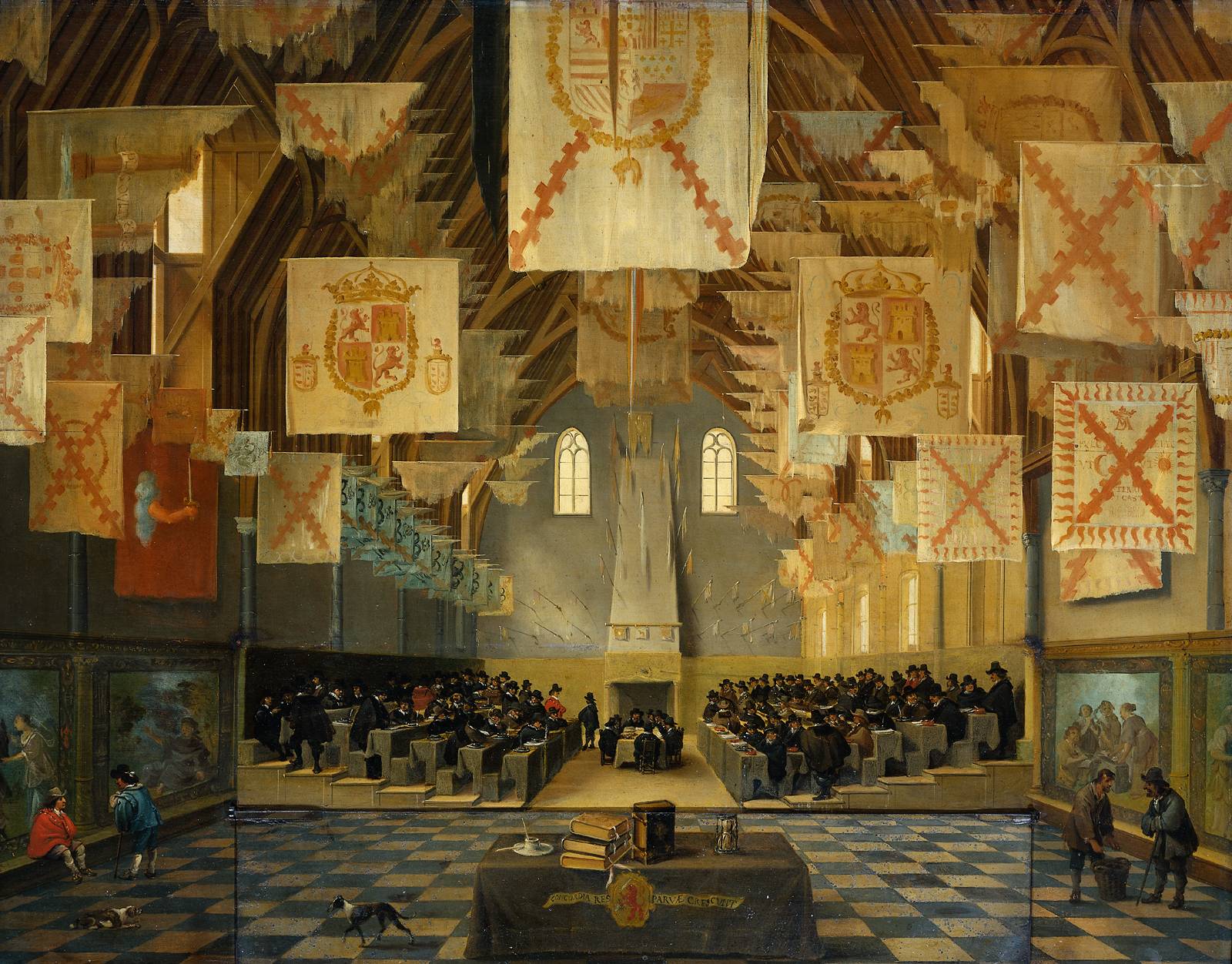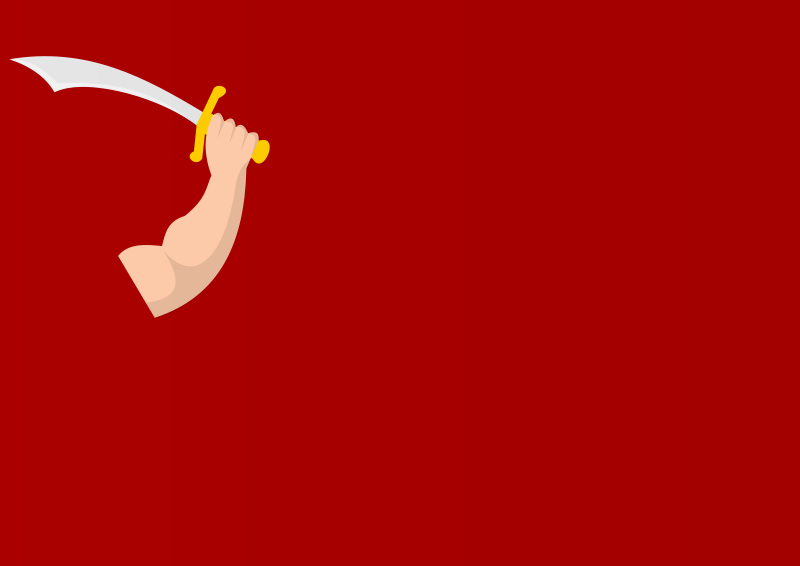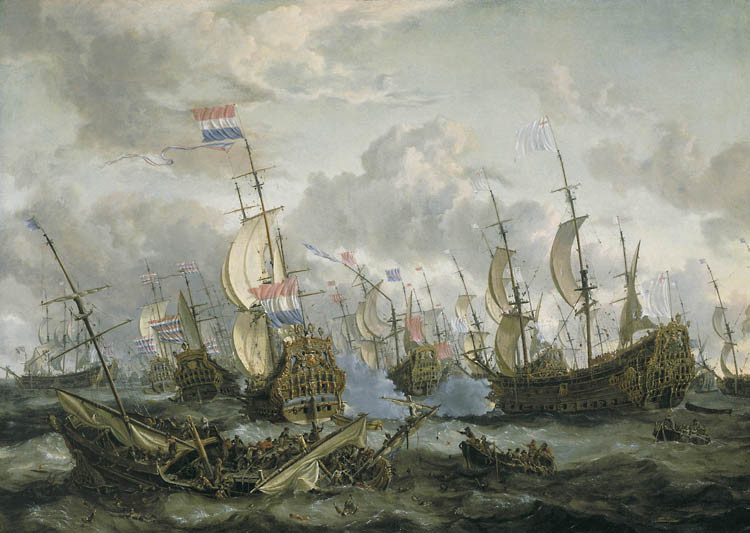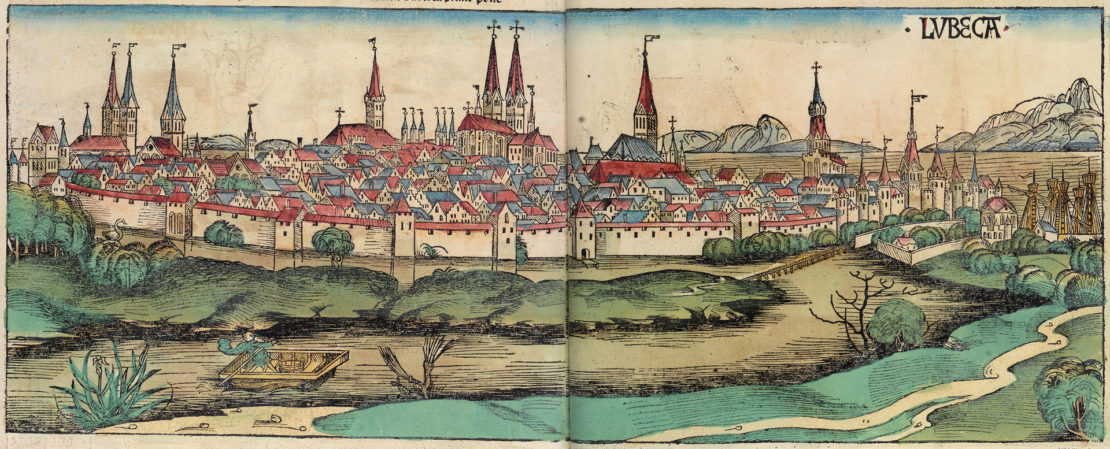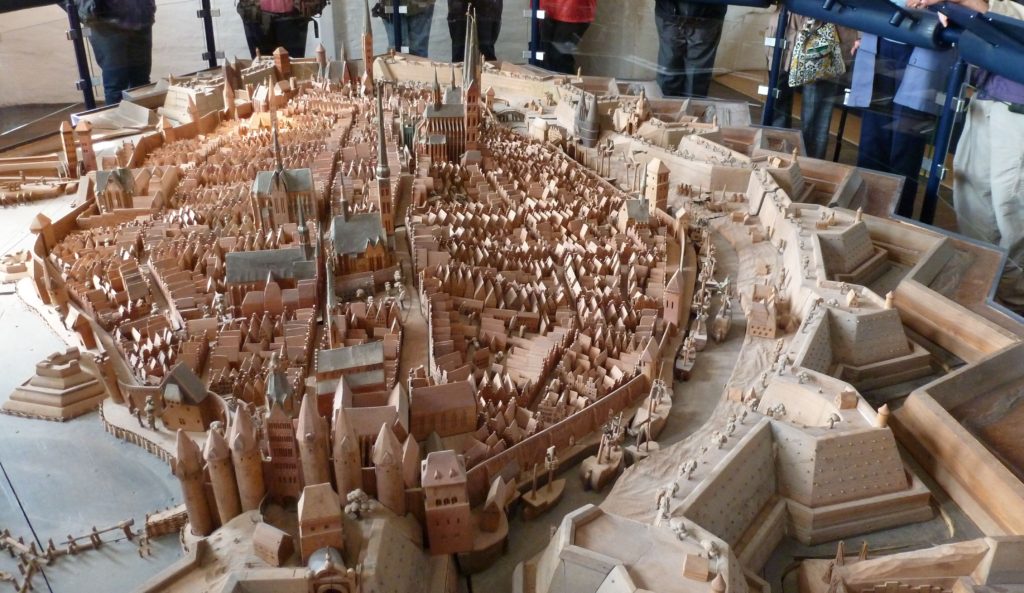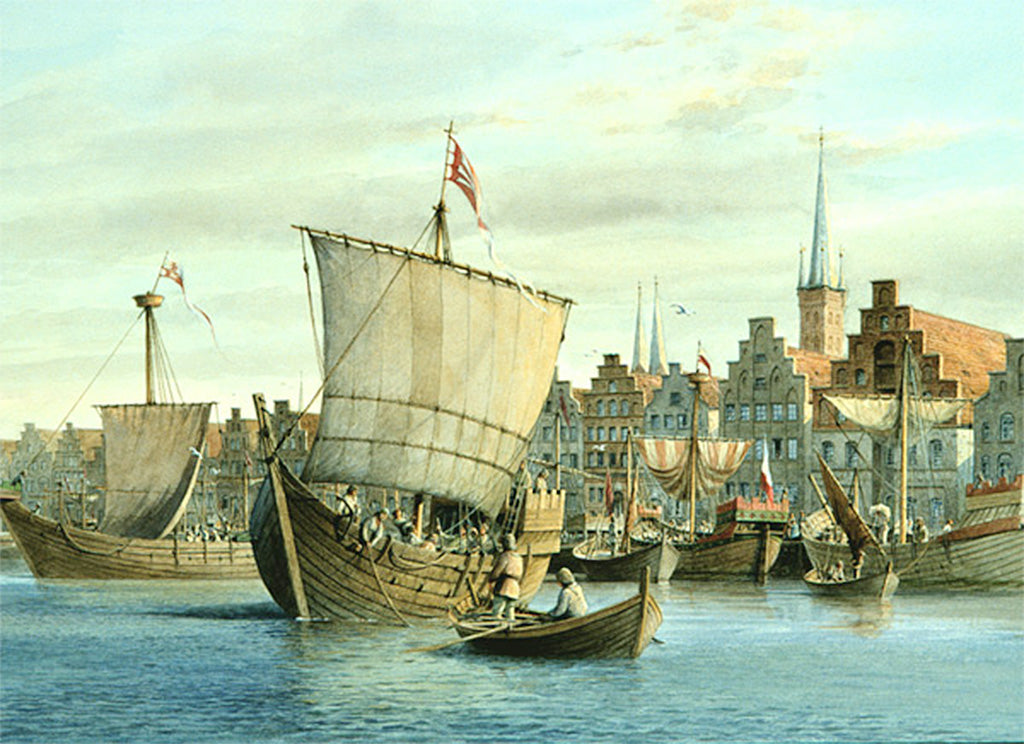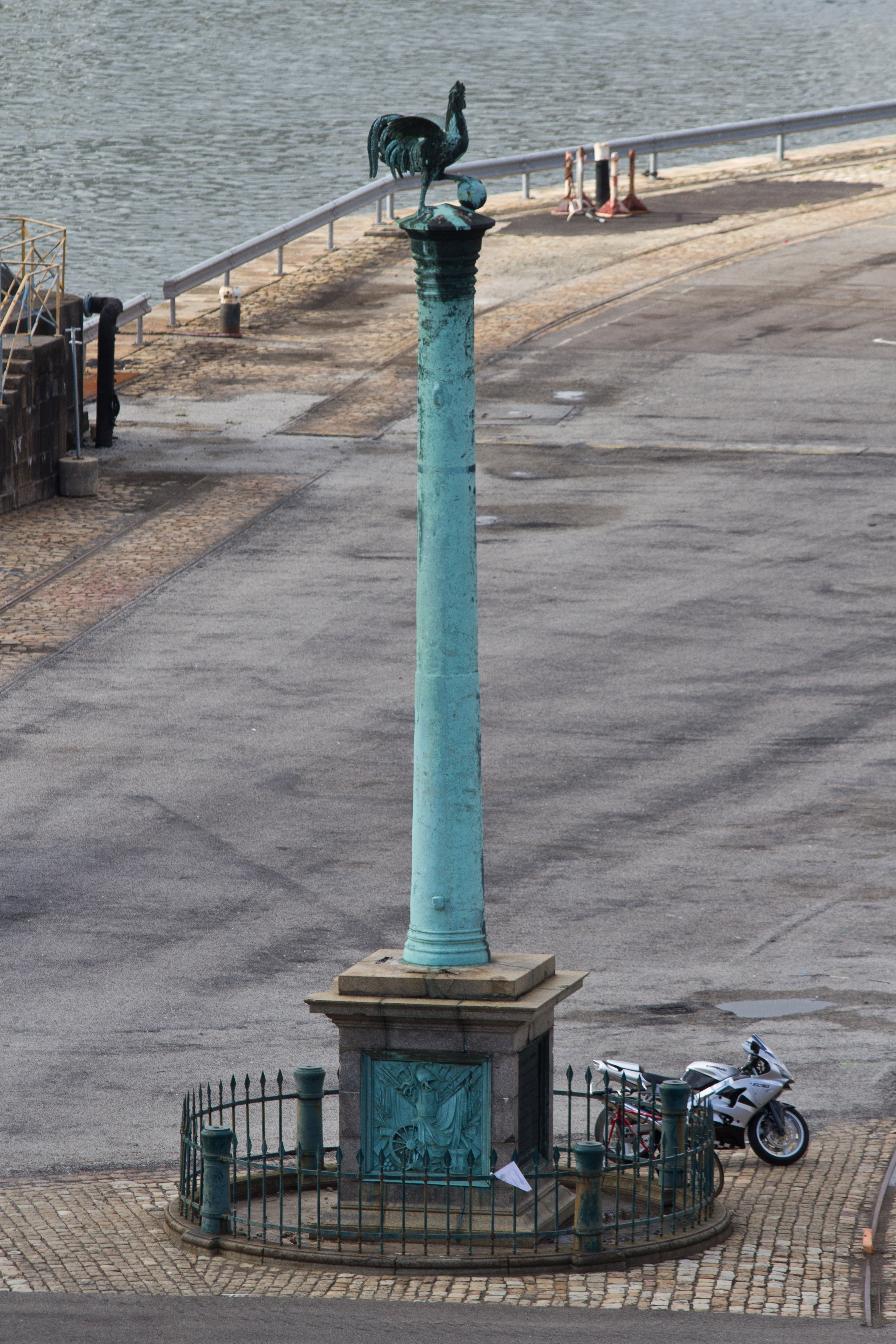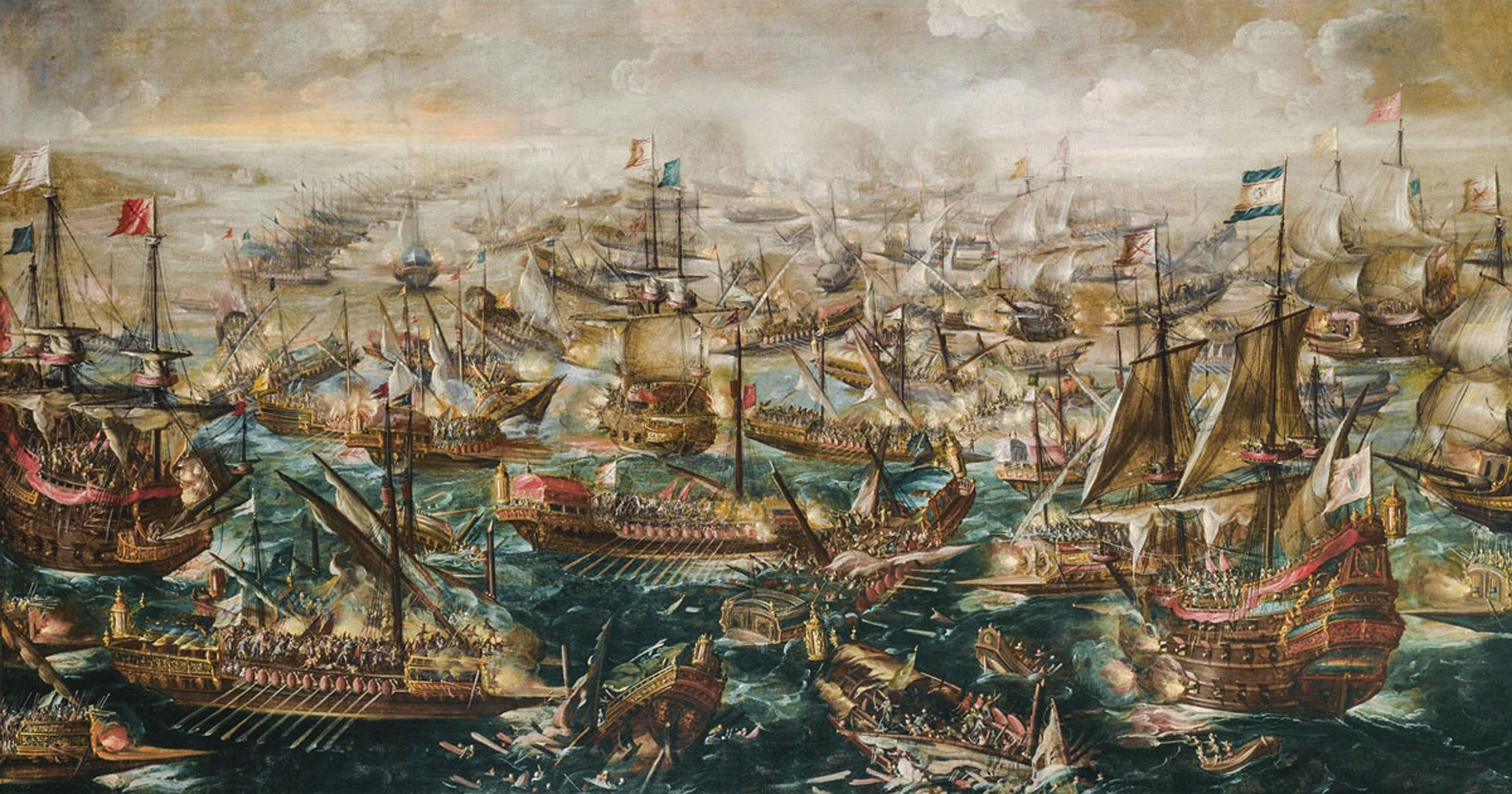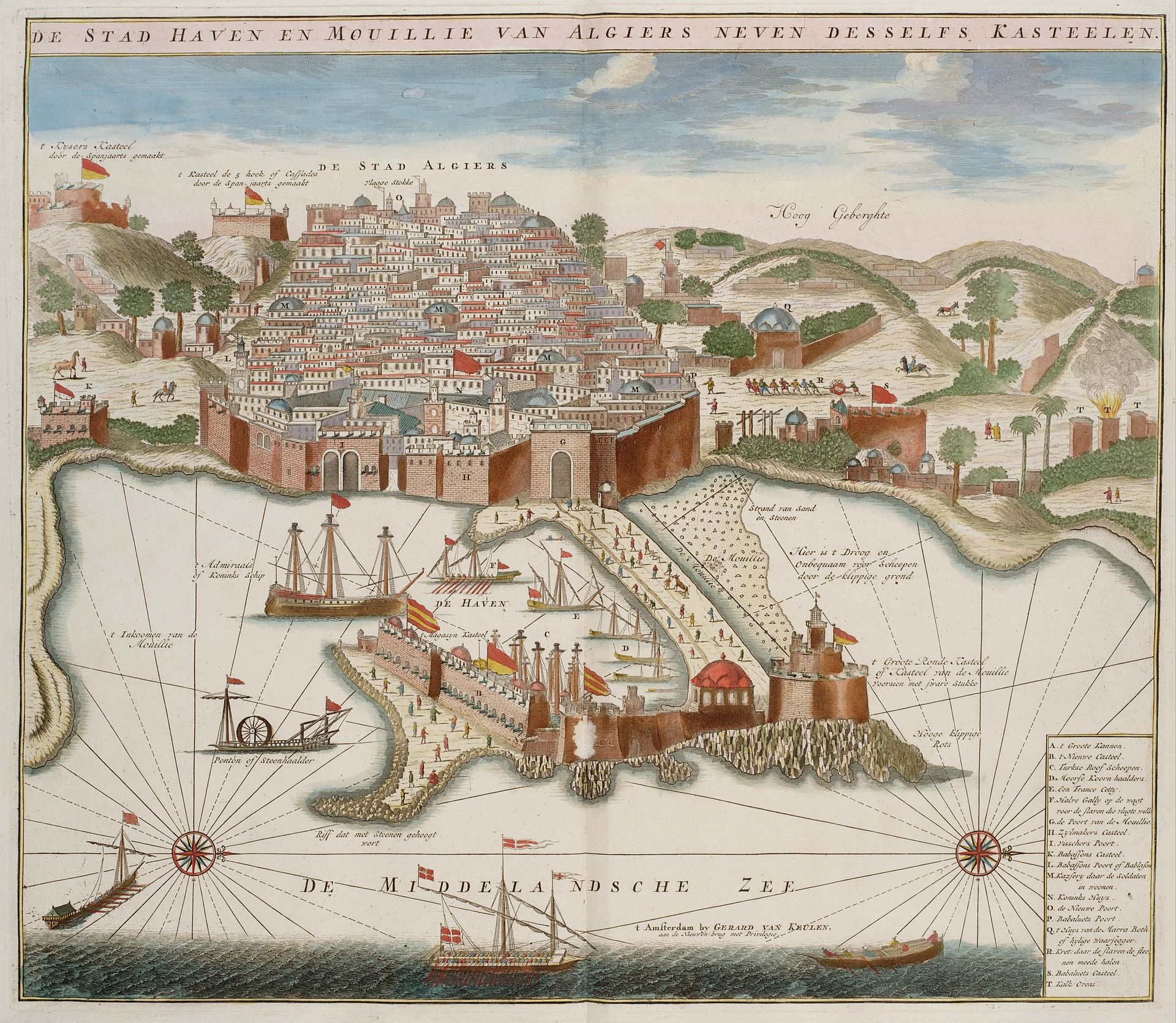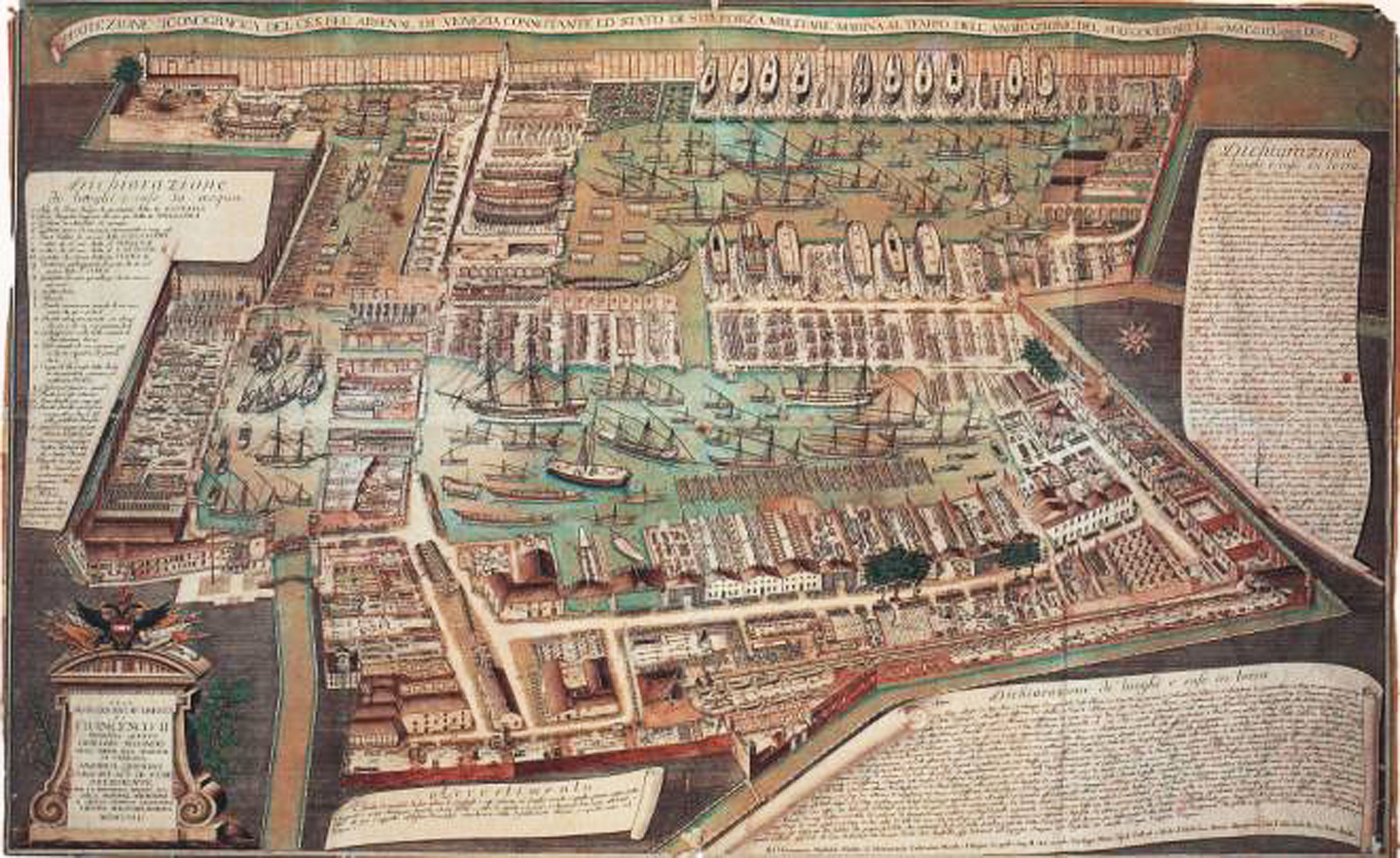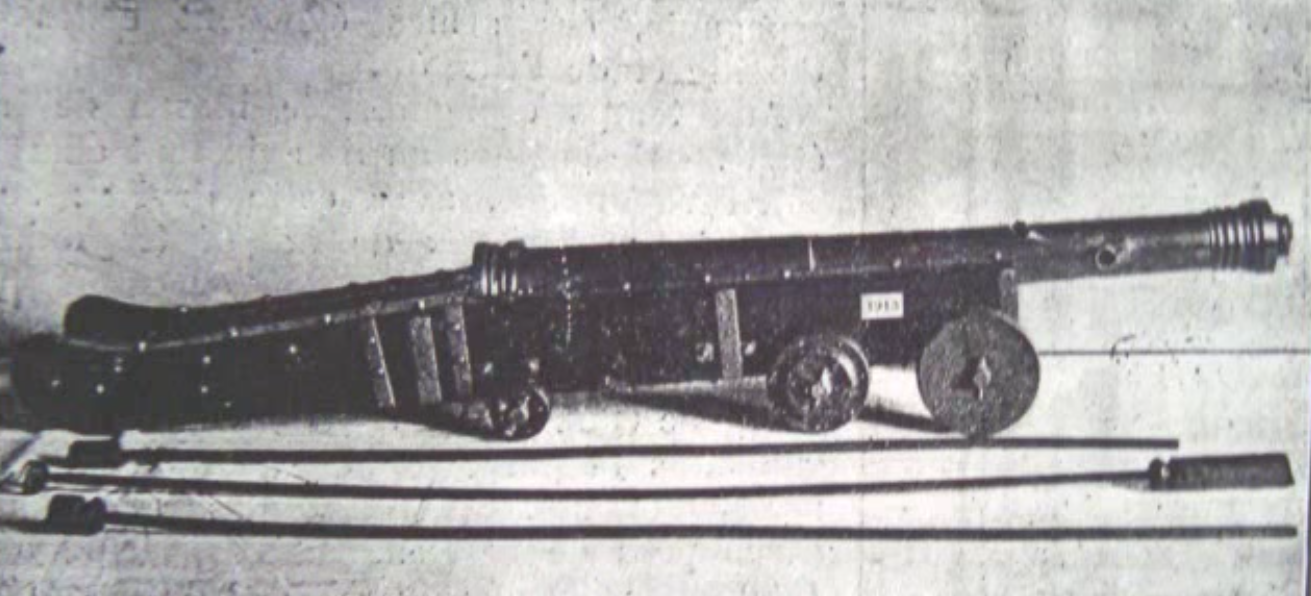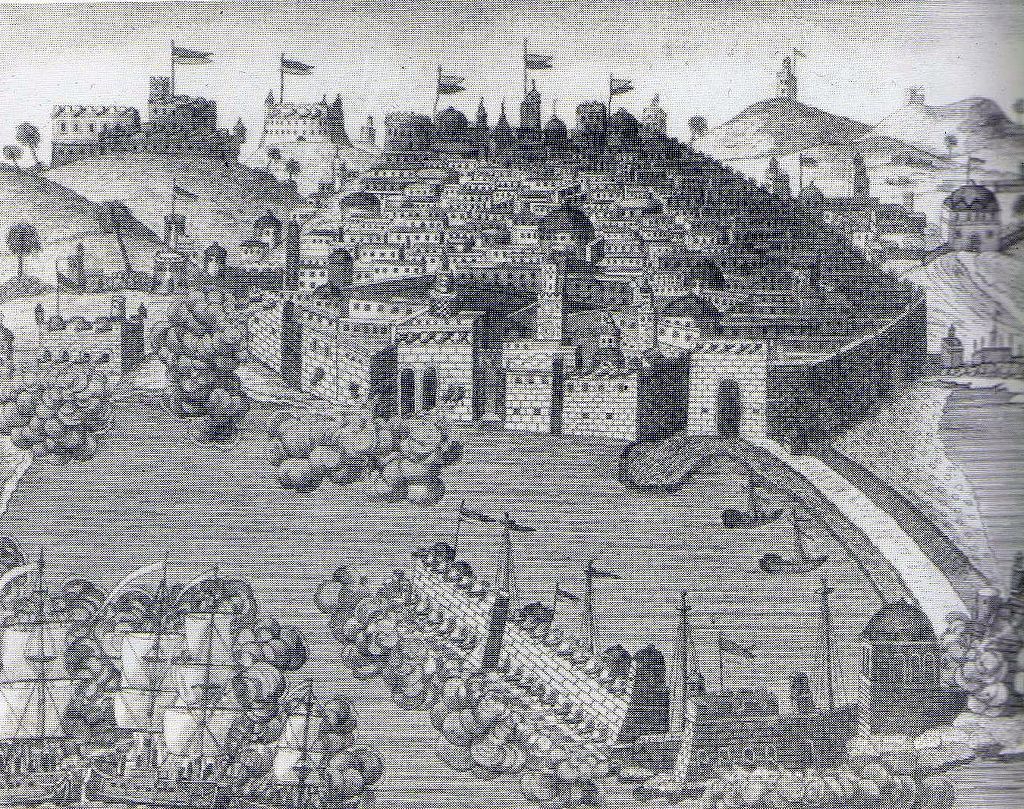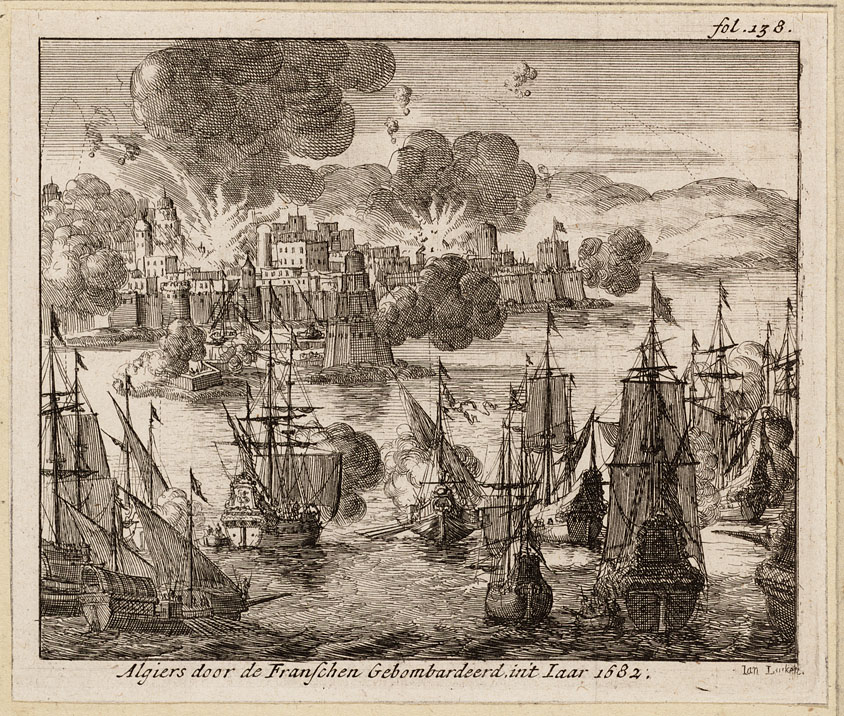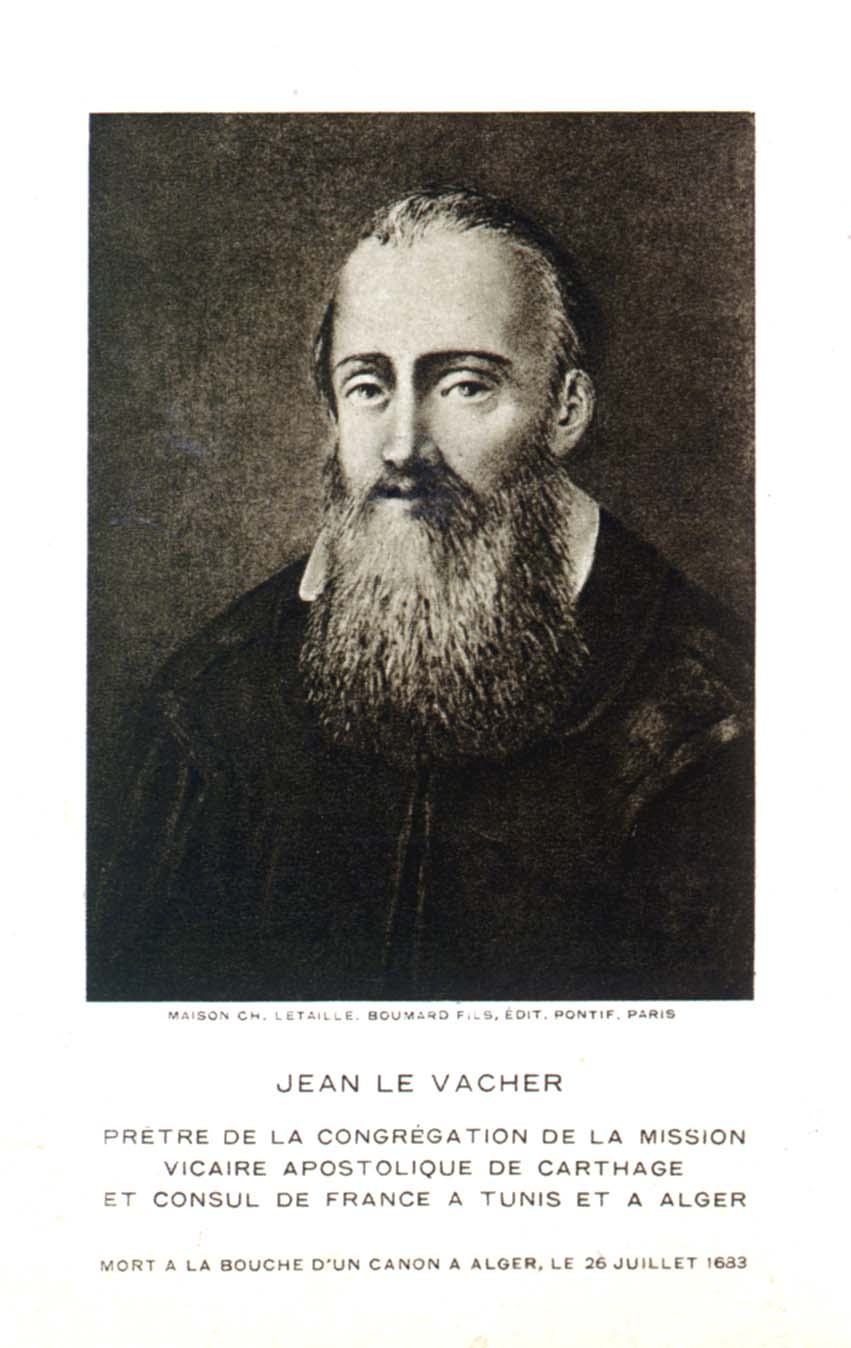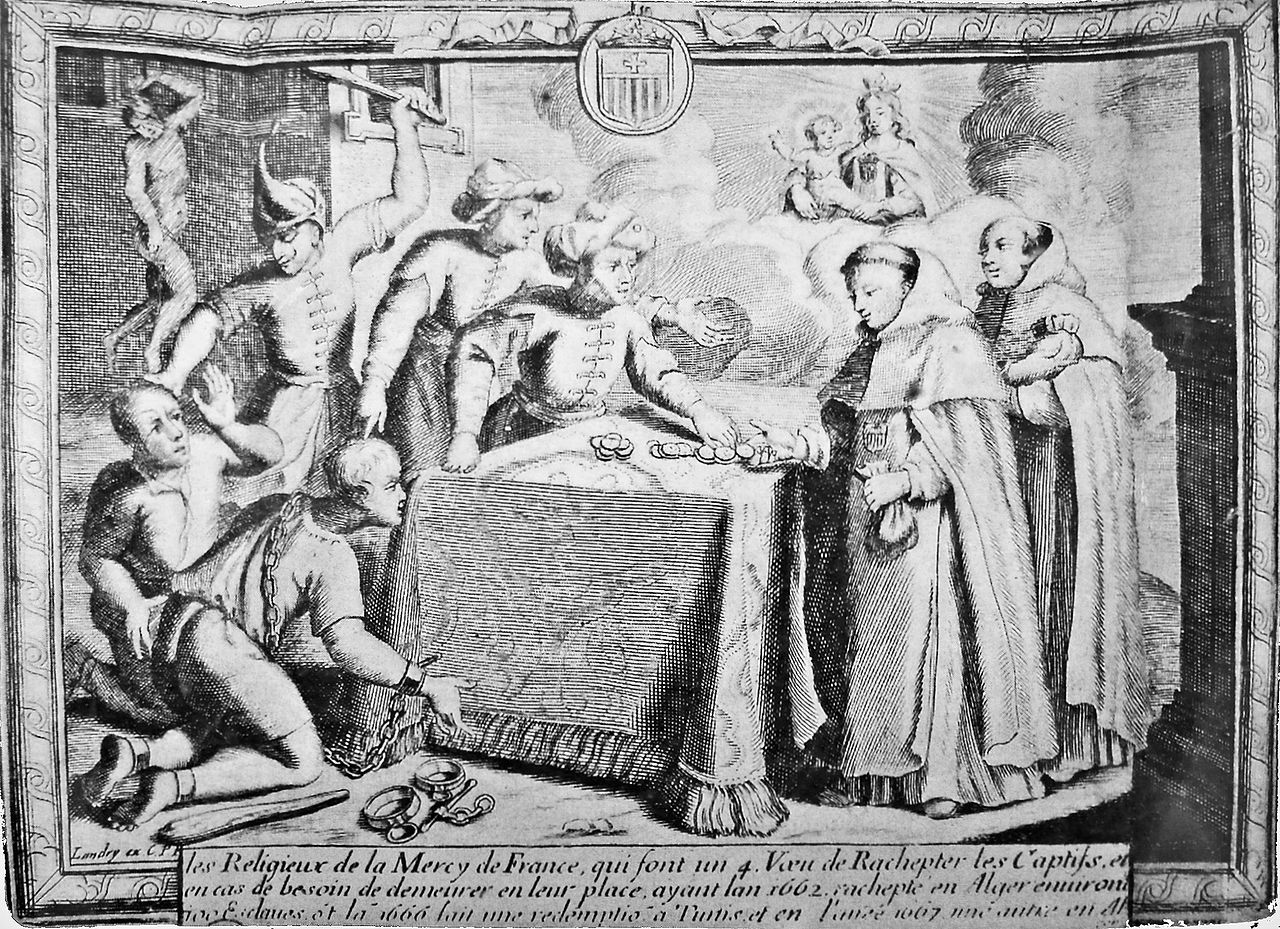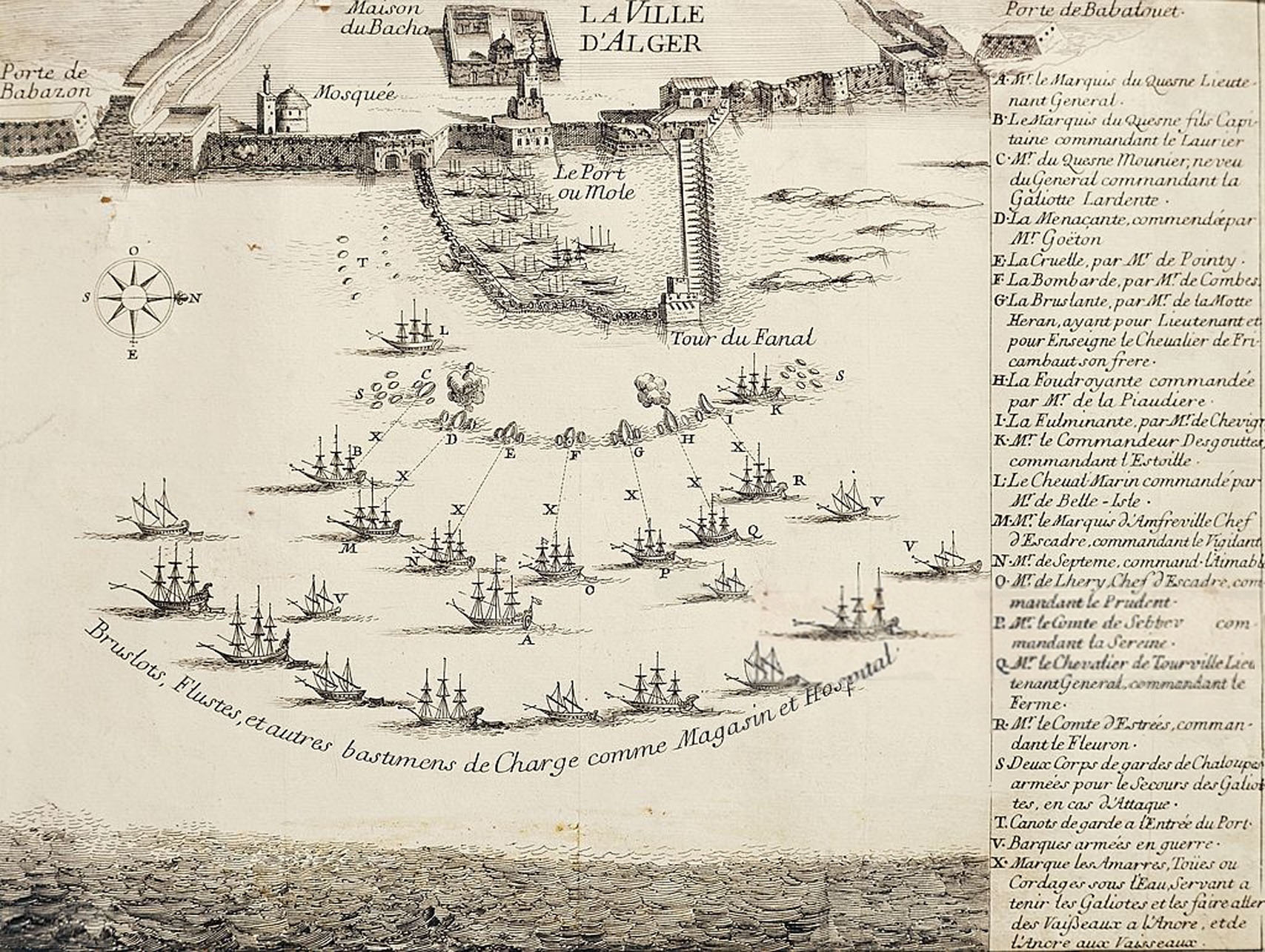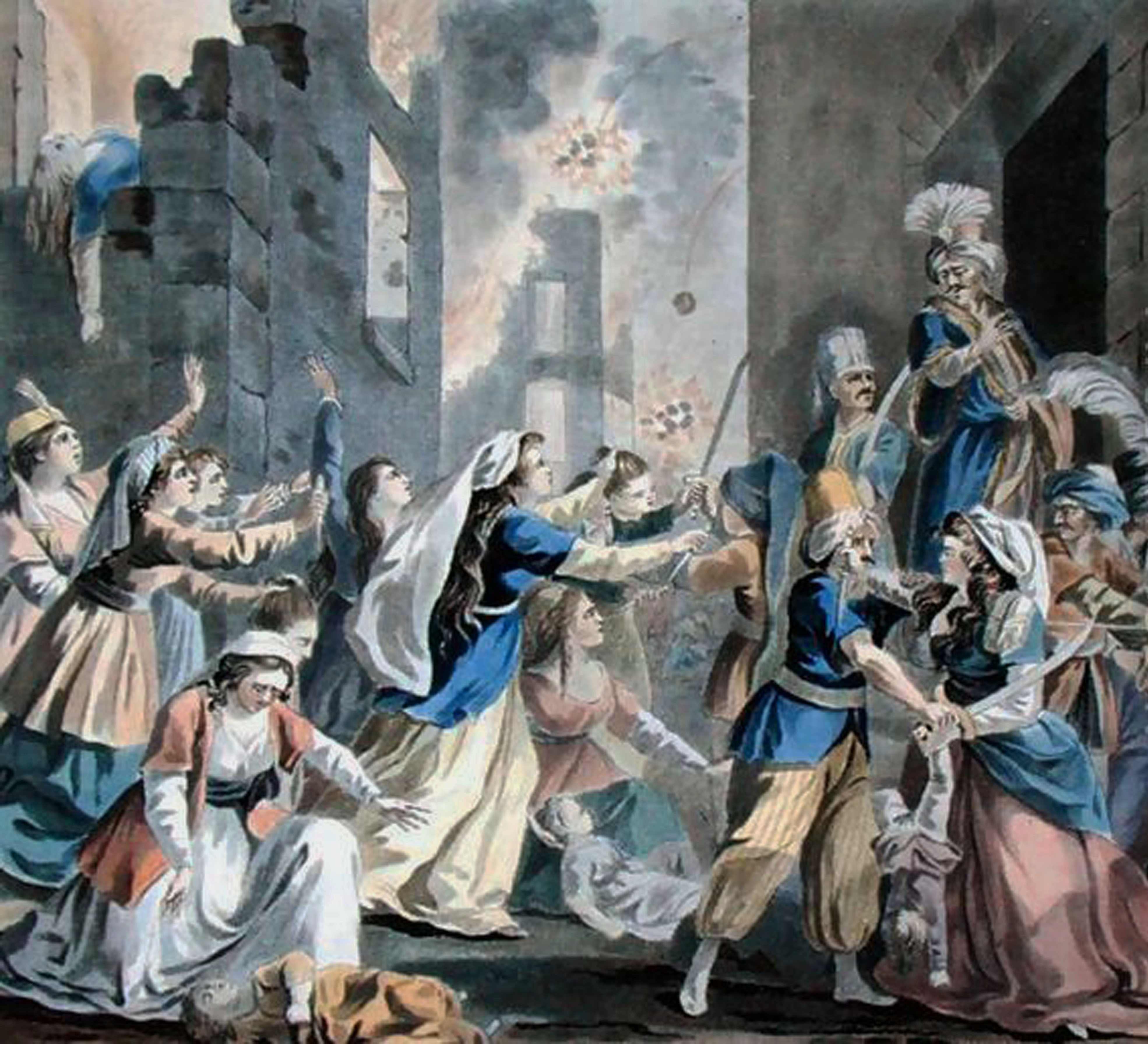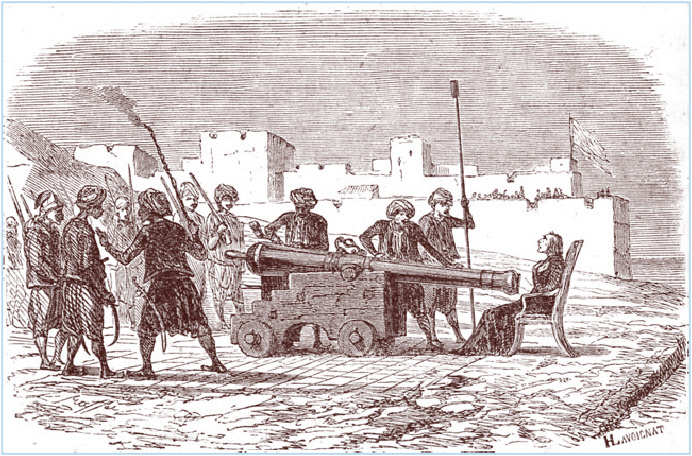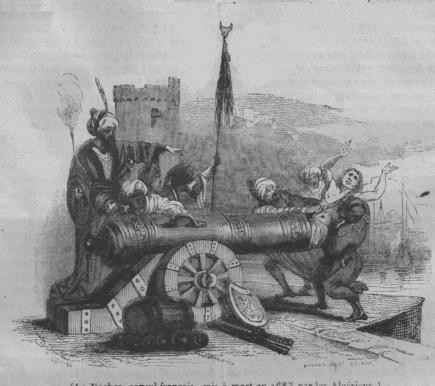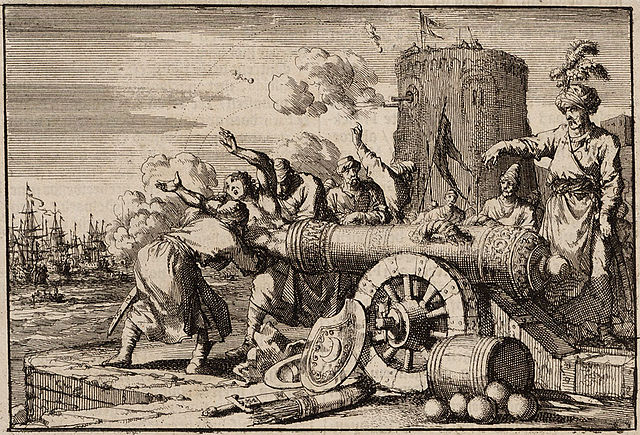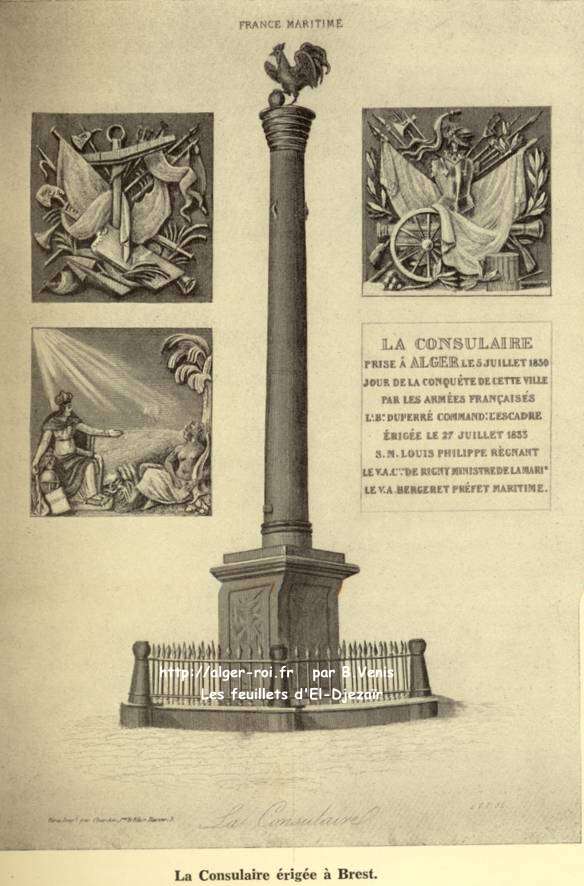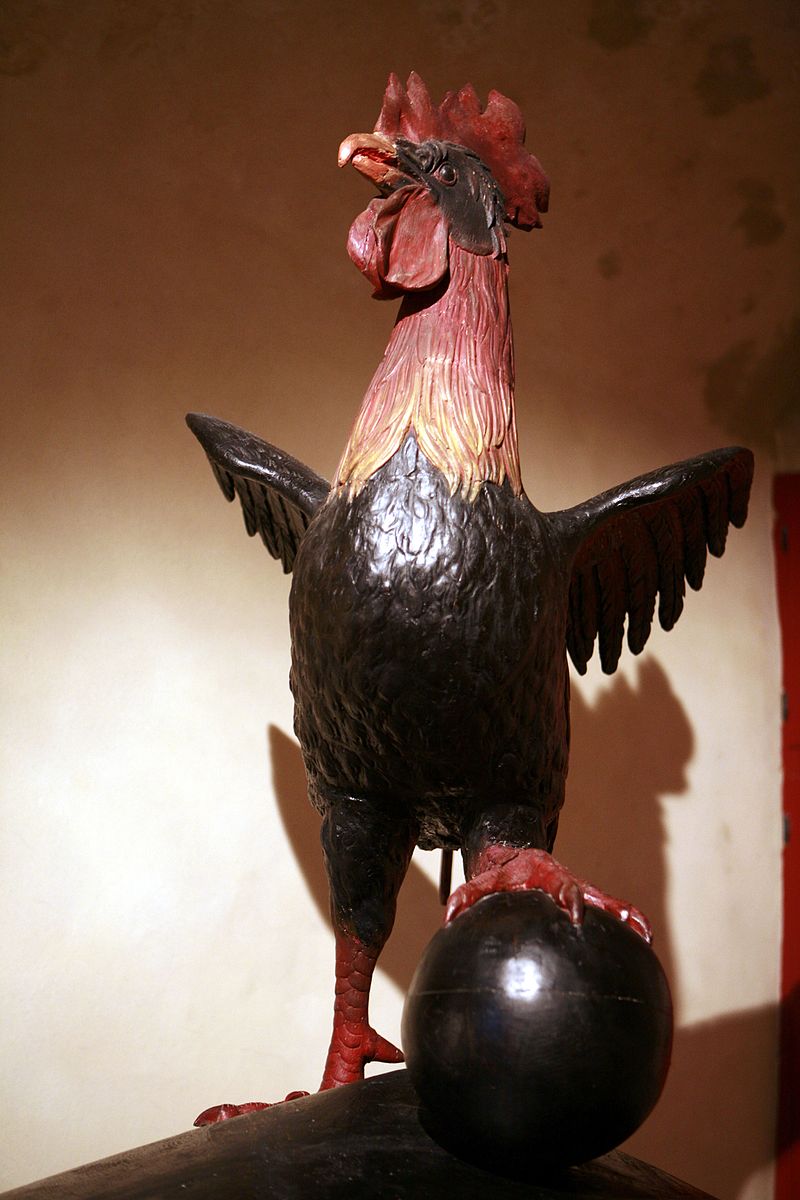Models of the Week
MODEL OF THE WEEK D Zevene Proven (Seventh Province) of 1723
19 September 2017
I thought it was about time I post something here again – especially considering all of the incredible models I’ve come across in the last couple years.
I have always been fascinated by ship evolution and development over time. This is a subject that is both incredibly and meticulously researched in certain time periods and practically ignored in others. Take the last quarter of the 18th century into the first quarter of the 19th – an era where very little can be added in research because of the mountainous volumes of literature on the subject for the last two centuries. I guess this is one of the reasons I find it somewhat boring. There is no doubt that maritime architects had honed their science and art to their apex and achieved efficiency and beauty captured in hundreds of sleek designs that are the epitome of simplicity.
I do not begrudge those who enjoy this era their favored subject of study, I just believe that they have become garden variety scholars in their discipline. I see this among historians constantly – a historian who is an expert on one single decade or war, and mostly ignorant of everything else before or after. To me one cannot be an expert in anything unless they understand the full context of the firmament that their favored area of study fits into.
My last decade in the military I became so sick of military officers who believed they had a little historical knowledge making fun of French military prowess. This has always been one of my pet peeves – something that sets me off so to speak. I knew I had fully matured when I would laugh off the comments and move along without a response, but knowing what sort of idiot I was dealing with. When I was younger, I would go into an Aspergers dissertation on French military history and achievement and how many of those key developments not only contributed to modern warfare as a whole, but also to our own military’s development and evolution.
I digress, but will say that my examination of Chapman has always been kind of a secondary (somewhat dry) pursuit/study when instead I could choose to peruse the many works including illustrations and commentary from Landstrom, Pett, Deane, Witsen, or Cornelius van Yk. I remember discovering Landstrom’s many illustrated works as a boy. I have them all now and most are out of print. I was overjoyed in reading them. Not only did Landstrom research the history of European exploration, he also paid particular attention to the ships. His landmark work “THE SHIP” is still one of my favorites to browse through.
I have used the illustrations and examples and his meticulous notes to find the original sources of the figures. There are so many of these that it could send one on the journey of a lifetime. Landstrom did such a wonderful job in this work of noting subtle changes in shape, form and architecture over time. However, he still missed quite a number of evolving developmental changes which I contend are both mentionable and significant. In my continually expanding manuscript on Piracy: A Story of European Expansion, I have dedicated an entire very lengthy chapter on ship evolution from the mid 16th through first quarter of the 18th century.
I trace the evolution of the sailing frigate much further back than most modern authorities do. I document the evolution of the galleon form into the 18th century as I gave a taste of in my recent Galleons for Dummies post.
One of the reasons I started our modeling contest here was in the hopes I could actually find people who want to be challenged by something different – not the usual easily obtainable late era plans (“low hanging fruit”), and tired ole Chapman. But only a handful have stepped up to show any interest. I am guessing that this may be due to Naval Action continuing to encourage all modelers to churn out easily managed garden variety models. Guess the pay out must be good. Oh well. We will keep going with our own and see what happens.
With all of the above in mind, I present to you a model of the Zevene Proven of 1723 which can be found (but not on current display) within the large NMM Greenwich UK collection. They have incorrectly labeled the ship the Zeven Provincien (or Seven Provinces). This name is particular to warships and what we have here is NOT a warship. The ship is from an antiquated Dutch notation that contemporaries of that time would have instantly recognized as Zeven(d)e Proven(z) (The Seventh Province). In other words, she was a trading ship – a Dutch East Indiaman from the 7th province of Groningen and Ommelande (yes the provinces had numbers assigned to them).
I find this ship simply fascinating in every way. The old retourschip design is now long gone and she is now a clearly recognizable “Indiaman” class ship. When she was built, the glorious age of piracy had less than a decade left before its end. YES she is indeed new when comparing her to her earlier galleon-esque sisters (many of which would have still been seen surviving and working the seas – sailing in and out of all of the world’s great ports during her own first decade at sea). She is lower, more simply decorated, her stern has been cut down and her lines are more modern, HOWEVER – just look at all of the earlier era’s influence and design cues in her construction.
Yes her decoration is less and arranged in the now popular wide rounded-top tafferel/taffrail. However, it is still much more significant than that found on ships just a decade later. Also note the gilding and sculptural forms – clearly more at home on her earlier sisters than upon her sisters yet to be built. In many ways she is the last of her kind in this respect. She also still has a “galleon-esque” flat tucked “notch back” stern instead of the rounded dove-tailed sterns popularly seen on other Indiamen built by other nations (French/English) at around this same time. While she may be lower and her stern cut down, she still has a noticeable difference in vertical height from her much lower waist in comparison to a significantly higher foc’sle, quarter-deck, and poop. One could almost get away with calling her a galleon and some architects would even argue that SHE IS.
Variety is the spice of life my friends. I would welcome such a ship in Eras. I bring you these awesome pictures for education and your consideration. I love vanilla. But I love Vanilla and Chocolate even more. What’s that? You say that Baskin Robbins has 84 flavors! Damn – I’m goin man – as long as no one messes everything up and mixes all the flavors up into ice cream slurry! MK
MODEL OF THE WEEK The Dutch Pinasschip
10 October 2015
Well I have run onto a bunch of great models in the last 6 months, but this one is my current favorite and I just happened on to her a couple days back. She is a gorgeous little Dutch pinnace that won the gold medal at the Nautical Research Guild in 2011. Here’s the link: Dutch Pinnace
…and here are the pictures. Enjoy. MK
MODEL OF THE WEEK The Anne
25 February 2015
A couple years ago I had the good fortune to explore the wonderful coasts of Georgia and I had a chance to stop in at Savannah for a couple of days to visit it’s historic charm. During this sojourn I was able to spend a couple of hours in their fine “Ships of the Sea” Maritime Museum. It’s always such a thrill for me to find one I didn’t know about or haven’t been to before – even if on the small side.
The Savannah Maritime Museum is a gem of historic models, fine art, and nautical artifacts that all tell the story of Savannah’s rich maritime heritage. Its housed in an old mansion, the Scarborough House, once belonging to the original owner of the first steamship Savannah. The price of entry is a little steep in my opinion, but there are numerous discounts, for military, senior, and AAA members.
I especially enjoyed their sampling of figureheads. There are some really nice examples here and I always study every detail and wonder at all the places they’ve been, seas they’ve spanned and the things they’ve seen when they were still attached to the prows of their long departed vessels. If you’re into clippers, then you need to take a look at the paintings in this place. There is an excellent collection of paintings by numerous artists of every shape and size of yankee clipper.
The artifacts and nautical displays are also quite good and tell the history of navigation. From astrolabes to hourglasses – octants and sextants, its all here. Also the museum boasts a really nice and fairly extensive ivory and scrimshaw display to include a really nice 18th century bone and ivory model brigantine.
Understandably, I most enjoyed the ship models. I am more favorable to the earlier eras of exploration and the Golden Age, so one model particularly held my fancy. The Anne is a large scale model of the first ship to bring settler’s to Savannah in 1732. She is an English merchantmen of about the 1710-20 timeframe and typical of English or Dutch Guineamen built at that time with only the weather-deck designed and rigged for armament. I love this ship with its clear 17th century influence still prevalent in her rake, lines and decoration. She is probably very close to what Blackbeard’s famous “Queen Anne’s Revenge” would have actually looked like before the pirate pierced the “slave/cargo deck” for twenty more guns acquired from other ships.
Her claim to fame is that she is the ship that brought the first colonists to the Savannah area in 1733. She was 200 tons, 87 feet long, and 26 feet at the beam. Here are some pictures. Unfortunately there was a lot of glare on the glass case around her. I did my best.
And a little more about the museum for those that are interested….
A late 18th century French ship of the line adorns the center of the main model room. She is typical of ships of this era and type. Several early steam era models are also in this room. All the models are in large glass cases which made it really difficult to get good pictures of anything with all the glare from the windows and lighting reflecting off of the glass. I only included the pictures that turned out decently. I had to delete dozens that just didn’t make the cut due to the lighting.
The house has a spacious central hall with a skylight above skirted by the banister railing of stairs and floor above. In this space is what I believe to be the museum’s largest and most impressive model. The mid 19th century model (pre-Civil War era) U.S. frigate Savannah – and she is a sight to behold. Her large guns are all proudly run out and she has the distinctive circular track fore and aft guns with crews at the ready. An excellent example of ship evolution into the modern era. The guns are pre Whitworth or Parrot, but I would wager could hold a six pound powder charge. I commented to an observer that they would have had 10 times the power of the large 36 pounders on the French Ship of the Line in the previous room.
Almost all of these impressive models were commissioned from the famous modeler Joseph Gallettini. However there is a very large and conspicuous model upstairs that was originally built for the British Admiralty in 1803. This model is of the HMS Shannon. I was at quite a loss when I saw her. I was not expecting to see this vintage of model there and wondered how she came to be in America and even more – in the South. At any rate she is there. For anyone modeling the Shannon, I recommend a visit. Most of my photos of her didn’t turn out so good. I did the best I could.
To my shock the time just zipped by and I barely had a chance to visit the book store and buy a few books and souvenirs before the museum closed. The staff were friendly and helpful and this place is clean, well maintained and has very easy access with excellent parking in the rear.
If you ever get down Georgia-way, I highly recommend a visit to this treasure of a museum. You won’t be disappointed. website: Ships of the Sea Museum
The complete set of Photos I took of the museum can be viewed HERE
MK
MODEL OF THE WEEK 108gun Sophia Amalia (1650)
01 February 2015
The beautiful ship of the line, Sophia Amalia was constructed for the Danish Navy under the English shipwright James Robbins at the Hovedøen dockyards in Christiania (Oslo) Norway in 1650. Traditionally a shipyard for merchant ships, only four warships were built there between 1646-1700. She was commissioned by King Christian IV specifically to surpass the great English ship HMS Sovereign of the Seas. It is VERY clear when you look at her that James Robbins seems to have almost copied the great Phineas Pett’s design for Sovereign of the Seas. They almost look like they could be sisters. The English and Pett influence is clearly evident. Upon her completion, she was largest ship built for Dano-Norwegian navy up to that time. She was 51.8 meters long and at that time one of the largest naval vessels in the world. She was named after the German Princess of Brunswick – Sophia Amalia, the wife of King Frederick III.
Originally her dimensions were 165 x 38-6 x 17-6 ft. , but she was rebuilt in 1673 (165 x 40-3 x 20 ft). Her displacement was c.2000-2200 tons. For armament Sophia Amalia carried 86-108 guns at different times of her career:(She originally mounted 108guns with twenty-eight 24pounders on her lower gun deck surpassing the Sovereign by eight guns at the time. She was lightened to 100 guns in 1662, but received 102 guns in her final refit in 1673. She was manned at different times in her career with 571 to 643 men.
During her career she took part in the numerous battles of the Second Northern War, the Dano-Swedish War of 1658-1660, and the Scanian War, however she is conspicuously missing from the line-up at the great Dutch-Danish victory over the Grand Swedish Fleet at the Battle of Oland(1676). I have not been able to find out why??? She would have been the largest ship there. Instead the 68gun Churprindsen is recorded as Admiral Niels Juel’s flagship and the 80gun Christianus V as Dutch Admiral Cornelis Tromp’s flagship. I know from a study of the battle that there had been a lot of bad weather preceding, so perhaps part of the fleet fell behind? Sofia Amalia was finally condemned and broken up in 1687.
This beautiful model of this great and powerful warship currently resides in the Danish Maritime Museum in Copenhagen, Denmark. Royal Danish Naval Museum
Here are a bunch of great pics on an excellent German model ship site I often visit: Pictures of ship model Sophia Amalia
Isn’t she lovely! I love the Seahorse on the figurehead on this one. I have assembled a large amount of photos for her. I even have some Van de Velde drawings of her which is fascinating to me because it causes me to ask the questions. Did Van de Velde do the drawings in Denmark? Did he accompany the fleet there as he so often did? Or did the ship come to Holland on a state visit. I think not. I do not think her deep draft would have allowed her to make it to any of the Dutch cities unless she was cradled. I very much doubt they would have gone to the trouble plus it would be a little demeaning for a great warship. I think they must have cradled the Royal Charles when they brought her back to Amsterdam as a war trophy. Intriguing to think about nonetheless! I will be posting this great new collection to my ship images repository on Flickr in the next day.
MK
MODEL OF THE WEEK: 15 January 2015
WILLIAM REX (1698): Dutch 72gunner
Today’s model is of the 72gun William Rex. I first saw this model in 1993 at the The National Maritime Museum (Het Scheepvaart Musuem) in Amsterdam Netherlands Ship Museum I took many pictures and lots of video of ALL the ships in the museum over numerous visits that year and the next year. This model is not my favorite. In fact it’s not even in my top ten in that particular museum. However, it is a beautiful model of particular interest and it is just bloody HUGE. Most of the really impressive models in that museum are examples from the 1650s through the 1670s. This model however was built in 1698 in Flushing(Vlissingen) and is a replica of a real warship laid down in those very dockyards.
She is a beautiful example of a large Dutch Man O War built during the period of the War of the Spanish Succession – the last war of the Golden Age bringing in the 18th century with a tremendous bang. The war lasted 13 years and a conflict of its scale would not come again during the 18th century until its end with the Napoleonic Wars.
We don’t know much about the William Rex’s career. I could find hardly anything out about it. I’m sure there is a Dutch source somewhere never translated into English. This is a fascinating period though with a Dutch King sitting on the throne of England and all operations between English and Dutch fleets being mounted with duel command and combined fleets. I have a picture of the Battle of Vigo Bay 1702 which shows the combined Anglo-Dutch Allied fleet bottling up the Spanish Treasure Fleet which was protected by a French escort fleet composed mostly of large French ships of the line. Even though most of the treasure was offloaded, the Allies were able to destroy the combined Franco-Spanish fleet.
What I find really compelling about this painting is that the large Dutch manowar on the right looks an awful lot like the William Rex. Dutch ships were rarely built with above 80 or 90 guns because they had shallower drafts to accommodate the many shallow areas on the approaches to most Dutch cities. Notice also how different the transom or tafferel/taffrail decoration is than earlier in the 17th century. Ships of the Anglo-Dutch war and Franco-Dutch war era usually only had a single gallery of windows with decoration above which often identified the ship itself giving clues of where it was from by paintings of its town of origin or carved and gilded coats of arms.
Here we see two full galleries of windows and not so much decoration above. This mirrors the French and English practice. The Dutch had built ships with two galleries previous but most were for export to France and Spain. Now they copy everyone else and get with the times instead of building ships their own way. I find this kind of sad especially because the following decades saw a dramatic even drastic drop in Dutch naval power at the same time Britain began to dramatically expand and “rule the waves”.
The William Rex no longer sits in the Maritime museum. She was moved to the Rijkmuseum a short distance away. Rijksmueum
She actually caught my eye this last week because of some pictures I ran into online and a REALLY cool video of her restoration not too long ago. Take a look:
And here is the site I was telling you about. William Rex Model
ENJOY!
MK
MODEL OF THE WEEK
28 December 2014
Pictures of the Nuestra Senora de la Concepcion
This is the massive Nuestra Senora de la Concepcion y de las Animas. This fine model is housed in the Naval Museum of Madrid. She was originally built in 1682 and mounted 90 guns. I special ordered a book (in Spanish) on her description with good plans which I plan to upload and share. I eventually would like to build her either 3D or as a scratch built wood model. I will do more on her as a feature as I peruse the Spanish (which I am still learning) to learn her history. I know she survived until 1705 but haven’t figured out what actions/battles she was involved in. Obviously she was one of the largest Spanish Warships of the day. I find it amusing that people focus on the San Felipe when I personally find the Concepcion far more attractive.
Video of the Naval Museum of Madrid
MK
Error: Contact form not found.
Posted in Books, Historical Sailing ships, Model Sailing Ships, Museums and tagged Model Ships by modernknight1 with comments disabled.
Picture of the Week
Pictures of the Week: 29 August 2017: Massive Ship production, Hanged Pirates and Bloedvlags
Hello Everyone! Wow I can’t believe I haven’t posted anything to this topic in a year. Sorry! I will try to do much better.
Today I wanted to share a couple of pictures with you that I find quite interesting in my constant quest for knowledge and research about our favorite time period.
The first painting is fascinating and hits home a point I have made in my comments and writing numerous times over the years. “A picture is worth a thousand words” as they say and I can find no other better way to illustrate my point than with this picture.
If you read my recent posting (Part II of the lecture on the Pirates of Puerto Rico) you can see an event timeline I provided, in which I include most of the significant germane historical occurrences of the Caribbean of that time. The thing that will pop out and smack anyone reading IS – just how totally the Dutch had become a very aggressive and dominant naval power in the Caribbean of the first half of the 17th century. In the next installment of that article I will cover the 1650s to the end of the century and you will see the dominance continues and increases.
So the QUESTION is HOW and WHY was a little country like the Netherlands able to become so powerful and possess SO MANY SHIPS? If you have read some of my other historical articles you already know the answer, but I will give the shortest possible version of that here.
In one sentence – Dutch Banks with huge amounts of venture capital along with early stock market trading/speculation, combined with the earliest example we find in western history of a massive early industrialization, and last, an immense resulting commercial and colonial trading expansion which began first to break the back of Spanish/Portuguese power in the longest war of rebellion in history (80 years), and then later to obtain a global monopoly on trade – is the reason (why and how). Phewww catching breath LOL – I am nothing if not way too verbose.
None of the things in that sentence could happen without the others. It was like the planets had come into alignment. The industrialization caused advancements in technology – thousands of water & wind driven saw-mills and the importation of massive amounts of wood from Germany and the Scandinavian/Baltic countries – a massive arms/cannon production in the first large scale arms factories in history which produced guns both for domestic and export consumption. Venice as I covered in my article about the Most Murderous Monument was the only other country to ever do this before on a much smaller scale and it was not even close to the output the Dutch achieved during their Golden Century.
Massive amounts of Salt and Fish(herring) was required to feed the Netherlands and supply its ships with preserved food for long journeys. The industrialization caused an explosion in the Dutch birth rate and immigration with thousands of Scandinavian and German people flocking there for jobs. The Dutch navy had sailors from dozens of nations making up its ranks.
This painting (by Jan Molenaar from 1682 currently in the Edam Museum) is a demonstration of that prosperity and the massive ship production that no other country in Europe could keep up with. This is only ONE ship builder and not the largest by any means. Each town in the Netherlands was expected to build a certain amount of ships for the Dutch Confederate Navy each year.
Here we see a major shipbuilder for the Dutch town of Edam. The rich industrial leader – one – J.M. Osterlingh, illustrates the 92 ships (of all types and sizes) that his yard alone has put into production in 1682. Osterlingh beams with pride showing off his achievements to his youthful daughter and son-in-law. In addition, the work of art itself preserves for posterity Osterlingh’s impressive annual output.
We know from documents of the time (and the English Lord Clarendon’s own assessments based on his spies) – that the Dutch possessed twenty-five thousand ships globally in 1660 with the English trailing badly with only three thousand. Clarendon and Pepys both urged King Charles to build more ships – when we see this painting – we can see why.
When we look at the numbers of ships in this single painting, we can also see why the Dutch dominated the East and West Indies of this time so dramatically. I am always amused at how all other video games get this dreadfully wrong. The reason I could never get into POTBS is because there was never a playable Dutch faction.
NEXT…
So this next painting is one I thought about saving for later because you will see it again soon in a story I am writing about Capital and Corporal Punishments in the navies and among pirates during the Golden Age. Look for it soon.
This picture goes along with the many others I have included in this section which feeds my obsession concerning the Bloedvlag “Blood Flag” and it adds to the narrative of the European powers combating piracy in the Mediterranean in the 17th century. If you haven’t read my article on a Most Murderous Monument, I suggest you have a look HERE.
In the article on the monument I covered many of the raids on the Barbary cities and states, and here we see an illustration from the 1660s or 70s of a Dutch fleet sitting outside of Algiers boldly showing off to its inhabitants all of the pirates it has caught and has hung upon the yard arms. Notice the Bloedvlag prominently displayed on the ship in the foreground(both on the Tafferrel and the main-mast) and Dutch tri-colors on the other masts. I am certain this was very likely a fairly regular occurrence during this era.
I love illustrations that so dramatically demonstrate and represent historical routines which I read about so often. So awesome!
MK
Pictures of the Week: 09 August 2016 Bloedvlags and Spanish Privateers
So last installment we looked at a Spanish Ship sinking during the Battle of the Downs by small Dutch warships and this month we’ve got a similar illustration with Tromp’s Aemilia taking the large Spanish almirante galleon commanded by the Spanish Admiral Oquendo. Even though its a black and white lithograph the Bloedvlag can still be clearly made out on the tafferel of the Aemilia. This one is with the arm coming out of the clouds.
Next we have another modern illustration by my favorite maritime artist currently living Arnold de Lange. Here we see another rendition of Tromp’s Aemilia going after a Spanish ship. There on the tafferel is again displayed very prominently – the Bloedvlag!
And now a painting by one of the Van de Veldes that is not known as well as the others – Cornelis Van de Velde…not to be confused with the Dutch privateer Cornelis Van de Velde who preyed on Caribbean shipping in the 1650s. This painting is a rare treat. It is a painting commission by James II during his short reign before William of Orange invaded England to take the throne. It depicts a very real battle in which an English East Indiaman successfully beat off three pesky Spanish/Flemish privateers out of Ostend. Not only did the ship cripple the two in the background causing them to retreat, but it actually captured the one in the foreground that you can see is striking her colors. This goes to show why East and West Indiamen of the time were heavily armed and manned. What a great painting! Love the detail in the English Indiaman but even more love the rare glimpse into what a Spanish Ostend privateer looked like in the 1680s. Very cool! Wish I could find a few more like this one. MK
Pictures of the Week: 09 June 2016 (Yet more Bloedvlags! and the oldest flag in America)
So the last few months I have managed to find yet more interesting paintings/pictures of bloedvlags. In this installment we see no pirates involved at all. In fact these paintings clearly illustrate Dutch squadrons boldly flying the Bloedvlag while engaged with Spaniards during the 80 years War in one case and in the First Anglo-Dutch War in the second case showing Admiral Tromp’s beloved Aemilia replete with Blood flag going into action against the English. Only the Dutch galleon circa 1615-1640, sailing past some fortifications in the distance (probably in the Med) could be out pirate hunting. These are just quite simply some awesome pictures.
Last here is an interesting replica of the oldest known flag in North America – known as the Bedford flag. Read about its history HERE It is fascinating that the flag was carried by cavalry as early as 1704. Wonder what European event or experience might have influenced its original creator? Had someone been sailing with a particular nation’s navy or privateers during or prior to the War of Spanish Succession? Makes you wonder. I was both surprised and baffled to find this totally cool flag where I did. The Bloedvlag influence is undeniable. Here’s a pic of one you can buy online. The link above shows the original: MK
Pictures of the Day: 11 October 2015 (More Barbary Pirates and Bloedvlags!)
So I have found several more really interesting ship paintings clearly showing the Bloedvlag. So lets look at them and discuss!
In the first picture we see an action taking place right off a coastal town. This fight is clearly between the French and the Dutch and pirates are not in the fight. Yet here we see the Bloedvlag displayed prominently. I do not know what battle this is but it does not appear to be in the Mediterranean.
In the second picture we see fighting going on between Englishmen and Dutchmen in the boats of the foreground. I had initially thought that maybe aid or rescue were occurring, but clearly not. Being that this is a Backhuysen depiction of the Battle of the Texel in the 3rd Anglo-Dutch War we know this is in the channel. So once again – no pirates and we can clearly make out English and Dutch navy ships battling it out. This was another great DeRuyter victory. There to the left is a Dutch ship flying the Bloedvlag.
I clearly have more research to conduct on the subject. If use of that flag wasn’t just confined to fighting Dunkirkers and Barbary pirates – and included fighting opposing nations war fleets, what was the protocol? Could this flag have been flown in the Caribbean? We know pirates adopted the flag. Could they have seen it there already? Could it be they procured their first flags from the Dutch or from the taking of Dutch military prizes? Several notable pirates took Dutch warships and made them their flagships. Could Condent’s Flying Dragon already had a Bloedvlag aboard? What about Edward England’s Fancy. Interesting to think about eh??? MK
Pictures of the Day: 28 January 2015 (More Barbary Pirates and Bloedvlags!)
So today I am featuring more than just one picture. In staying on the topic of my current study of European actions against the Barbary Corsairs during the Golden Age and their use of the Bloedvlag, I bring you four(yes that’s right count em “4” paintings by Van de Velde the Younger of Barbary Pirates.
In the first two paintings notice the patrolling Restoration Era English 3rd rates (possibly a 2nd rate in the first picture) single-handedly dealing with bunches of the nasty Barbary minions. Notice the English Ensign shot through the transom pole and drooping in the first picture. I actually own an AA Orlinsky recreation of this painting in my private collection.
In the third picture we are treated to a Dutch punitive expedition bombarding Tripoli in 1670. The pirates have come out to meet the Dutch in full force. I love this picture. Notce the large Barbary warship done more in a Spanish style with a sun and a kneeling figure on the stern. As I said in the previous post, the Barbary Corsairs built and manned their own large warships and here we see another example. Also notice on the prevalent Dutch Warship the Bloedvlag flying from the tafferel. This one is much like the captured Spanish or Dunkirk version hanging in the Binnenhof in my first picture post – showing the arm with the sword coming out from a cloud.
In the final close-up picture we see a Dutch warship engaging Barbary Pirates with the typical Dutch version of the Bloedvlag flying from the tafferel. Wouldn’t it have been amazing to be there! If I can get the funding next year, I will take anyone who wants go into these pictures on that kind of adventure with my own splendid historical video game.
MK
Picture of the Day: 15 January 2015 (A Sea Battle with Barbary Corsairs)
So here we see a painting by the noted Flemish painter Laureys a Castro (1664-1700). This painting is part of the Dulwich Collection in the UK. It was probably painted sometime in the 1680s. If I had to guess I would say that it is a post Third Anglo-Dutch War (1672-74) and pre-William and Mary era(1688-1704)painting based on the styles of the ships depicted alone. These are left-overs from the 1660s-70s and the painting likely depicts an action fought around 1680. We see a fierce battle between a combined Anglo-Dutch fleet against large Barbary Corsair warships.
I love this painting because of the wonderful action frozen in time and the almost cartoon-like composition of Castro. For many Americans, they know about the Barbary Corsairs only from the little bit of history they’ve learned about the battles fought against Tripoli and Algiers by the fledgling US Navy only decades after we we started out as a nation. Most westerners know the US Marine Anthem with the phrase “From the Halls of Montezuma to the Shores of Tripoli”. However, most people aren’t aware that the Barbary Pirates were a centuries old threat that had harassed and raided European shipping and ports for centuries. I have an excellent book about slavery I plan to review in the near future that covers the centuries of slavery of White Slaves brought back to Northern Africa as captives of the Barbary Corsairs. If you read my story on Piet Heyn you will observe the short episode where he has to take on supplies at one of these North African ports and negotiates the release of Christian slaves from the Sultan. This is a true story – it really happened.
The Barbary Corsairs were a fearsome opponent that were constantly dealt with by seafaring nations. The Spanish, French, Dutch and English kept navy forces and patrols constantly in the Mediterranean to protect their convoys and shipping from the 16th century onwards – almost to modern times. These “pirates” far from being the lightly armed and meagerly equipped opponents they are often depicted and stereotyped as, were often just as well armed and equipped as their European counterparts. They not only built their own warships in the European style (not just galleys and xebecs, but full blown manowar), but they often used European tactics as well. Dig a little and you can find stories of European defectors that became powerful Barbary warlords.
The primary action shows an English Third or Fourth rater engaging a large Barbary Manowar. On the opposite side a smaller Dutch OorlogsFrigat (war pinnace) fiercely engages the same ship. Notice the colorful Barbary flags with multi-colored stripes and crescent moons. Colors and symbols we see even now in the flags of the North African nations of modern times. To the left foreground we see a damaged Barbary frigate with its bowsprit shot off trying to get into the action.
What an awesome painting. These types of actions were commonplace and you can find them in spades in the surviving logs and accounts of the times as well as the art of the period we see right before us. Many of the ships that engaged these pirates flew the Bloedvlag and I will be showing more paintings in the near future as part of my research of the Bloedvlag and my upcoming historical article on the subject. Stay tuned!
MK
Picture of the Day: 09 January 2015 (Spanish Warship in Naples)
This grand painting by the Dutch master Abraham Willearts gives a brief glimpse into a bustling port in the Golden Age. The ship has just come to rest anchored next to a great lighthouse in Naples, Italy in the late 1660’s. Naples at this time was a powerful city which dominated Italy. It was a very important Spanish possession until the end of the War of Spanish Succession in 1714. In 1668 when this scene probably took place during Willaert’s visit to Naples a year before his death, Naples was the second largest city in Europe with around 300,000 inhabitants. Only Paris was larger. Naples was the largest port and city in the Mediterranean and ships from all over Europe, the Med, and the Levant called here to off-load and exchange rich cargoes.
Looking at this impressive Spanish Manowar in the foreground, one wonders if she has been sent with, troops, official correspondence, important passengers from Spain or if she is just coming in after a patrol to keep the shipping lanes safe from all manner of pirates (especially Turkish and Barbary corsairs).
This large galleon tells us a lot about Spanish warships of this time. Along with the typical ornate stern decoration on large galleons of this era we see a large figure head as well of a prince riding upon a leaping white horse. Her armament is impressive and she boast three full gun-decks and one or two split gun-decks above on either side of her waist. By her size she very likely mounts bronze 50pounders on her lower deck cast in the great foundries of Liege. These were the largest marine guns of the time. Only the large bombards found on War Carracks prevalent in the previous century were larger.
Her flags also tell us a great deal. She flies the Royal Spanish flag with arms and the Cross of Burgundy behind from the mainmast. Below this flag flies (probably) a Catholic religious pennant. She sports a solid red flag from the stern which means that she has just come from battle, she is the flagship of a squadron or fleet, OR, she has a Spanish Admiral or Royal aboard. A simpler common Spanish naval flag with the Burgundian cross flies from the foremast, and a small naval jack from the sprit topmast as well.
From NMMC “There is considerable activity both on the ship and in the rigging as they secure the ship and make ready to go ashore. One figure is climbing the foremast. The artist has paid particular attention to lively details. Small craft are shown in the surrounding water. The barge rowing towards the left, in the foreground, has three sets of oars. As well as what appear to be hinged deck sections over a small cargo space in the stern. The deck sections are raised and three men, including the helmsman, are standing or sitting within the small cargo space. In the distance, to the right, a small ceremonial barge with a canopy in the stern is going past the anchored ship. Another ship at anchor, probably flying the Dutch flag, can be seen in the distance. The bay is full of activity and shipping. Figures are standing on the balconies and terraces of the lighthouse. While others line up on the quay beside it. Figures can, also, be seen standing with fishing rods on the rocks. At the landing steps below the quay, in the bottom right corner, men with oars are standing in a second barge. The mooring lines of the ship at anchor are clearly visible on the steps. In contrast with this busy scene are the three larger figures, in the foreground, which cast long shadows on the cobblestones. Two are shown wearing swords and in European dress…”
What an awesome painting. I just wish I go into it and see the great Golden Age for myself. Reading awesome books on the subject, looking at wonderful paintings, and playing super historically immersive video games set in this time are the only ways we have of doing this unfortunately. This image can be found as a transition/loading screen in GOF ERAs2. Many of the Spanish cities of the Caribbean were large cosmopolitan cities with huge forts and imposing lighthouses at the same time as this was painted. In fact the painter Willearts has spent a couple years in Brazil which had been a Dutch possession from 1630-1661. In fact Piet Heyn took San Salvadore during the Dutch conquest. Many of Willearts’ paintings illustrate the bustling and well developed colonies. These were not rural backwaters as so often depicted in movies, media and games. Many Spanish colonial cities boasted impressive Cathedrals and even Opera Houses during the Golden Age.
The original of this painting is in the Ingram Collection and Prints of this painting can be found in the British National Maritime Museum Collection Archive in Greenwich, UK.
National Maritime Museum Collections
MK
Picture of the Day: 05 January 2015 (The Binnenhof)
Some of you might recognize this image from the intro video in the GOF Historical Eras Module2. Today’s painting is of the Binnenhof, painted by Bartholomeus van Bassen in 1651. Looking at the painting one might well assume that Spaniards are in the great hall or that it is located in Spain. However these numerous hanging Spanish flags are the captured trophies of the Dutch military, taken from Spanish regiments and ships both on land and sea over 80 years of bloody conflict with Spain in the war for Dutch independence – which had only ended some three years before this painting was finished. Looking at the flags some are aged and burned and decades old – and others almost perfect.
Indeed these spoils of war are an excellent historical record of Spanish banners from this time. Notice the many embattled Crosses of Burgundy. Also notice the Pillars of Hercules – symbol of the Spanish Crown with the motto PLVS VLTRA below. The most interesting one in my opinion is the Spanish version of the Bloedvlag (Bloodflag). This is the red flag with an extended arm with sword. This version has the arm coming out of a cloud which reflects it is a divine arm. This flag probably came from a Spanish or Dunkirk privateer. Indeed our own logo here at Buccaneer’s Reef is a version of the Bloedvlag. This type of flag was used at sea to let people know that the ship was sponsored and on a mission – a mission to hunt for pirates or counter privateer against the other side’s privateers (Sea Beggars in this case). These ships would be fast, well armed, and well manned.
Dutch squadrons hunting Dunkirkers or Barbary Pirates would all carry large Bloedvlags from their taffrail. The Dutch version usually carried the arm and scimitar quartered towards the upper left. Later this symbol of legitimate pirate hunting and counter privateering was adopted in many different configurations by pirates themselves. I will be doing an upcoming historical article on the Bloedvlag soon. Look for it as an upcoming feature.
Just a few short years ago I had the privilege of working on a technology project close to the Hague. I made it a point on my off time to go visit the Binnenhof. I was so hoping that it would still look like the picture above. Indeed it does look almost identical to the picture with the same large wood rafters above. Unfortunately all of the flags are now long gone. I suppose they disintegrated or were taken down centuries ago. So I stood there and remembered the picture and imagined myself there during the Golden Age when all of the War Flags would have still been hanging from the rafters. I could almost see them.
MK
Picture of the Day: 29 December 2014 (The Four Days Battle)
The Four Days Fight of 1666 by Abraham Storck. This battle was the second largest battle of the age of sail with each side fielding over one hundred warships. Only the Battle of Lepanto in 1571 was larger and even then most of the ships were oar powered as well as sail powered – so many historians say that the Four Days Battle was indeed the largest battle of purely sailing ships in history.
The battle was part of the Second Anglo-Dutch War and the Dutch scored a significant victory over the English in this decisive battle. Although there are several paintings of the battle, this one is my favorite. The layout is exceptional and I love this part of the battle showcasing the duel between the flagships HMS Prince on the right and DeRuyter’s famous Zeven Provincien to the left center. The Prince was heavily damaged in this engagement. In fact the English Admiral Sir George Monck was forced to change flagships three times. In all three English admirals lost their lives including the famous Sir Christopher Myngs.
This battle illustrated the superiority of the Dutch 36 pounder bronze guns over the English 32 pounder. Some anecdotes go so far as to say that Dutch rounds would penetrate completely through the English ships out the other side. So the Dutch ships may have been smaller and have less guns, but they were faster, more maneuverable and had larger guns.
MK
Posted in History of the Golden Age, Maritime Paintings, Uncategorized and tagged Hanging, Historical, Pictures, Pirate by modernknight1 with comments disabled.
VOTIVE MODELS: What’s a Votive Model? A Journey of Remembrance
In 1996 I knew my days in Europe and Germany were numbered. I knew we were deploying (for many months) to the training centers very soon to ready ourselves for a large scale deployment to Bosnia. In addition to being a M109A2 Howitzer Platoon Leader I was also the partnership officer for my Battalion and the Movement Control Officer for the 2nd Brigade, 1st Armored Division “Old Ironsides”. I wasn’t fluent in German yet but I was close. My conjugation was still off and I would substitute a quick sloppy “eh” on the endings of words when I didn’t know if an “er” was appropriate or not.
However, I was the best they had as very few Americans spoke any German at all. I had been the partnership officer in my last unit in Fulda (1st Squadron, 11th Armored Cavalry Regiment (ACR)) and now I was tagged again. It wasn’t because of any other particular ability but that I could speak the language fairly well. I was confident in my abilities to get around Germany and Austria after five years living there. I had been complemented many times by Germans who told me they didn’t even realize I was an American.
I was actually scared. I was a senior 1st Lieutenant with a LOT of experience. I was due to make Captain in a few more months and this was actually my third platoon – most young officers only ever got one. I was scared because I had already been in some training exercises with a bunch of young Germans in a place called Hammelburg. We were attempting to train them on rooting through urban areas trying to find the bad guys while rescuing the innocent women and children.
The Germans didn’t play – during almost every exercise STX lane, at the drop of a hat, they would open fire on the poor woman holding a baby every time. They just had never been trained to hold back. I would learn in a very personal way a couple of months later that sometimes it is better to shoot first and ask questions later.
I was scared that I was responsible for coordinating the movement of so much heavy military equipment so far away. It was a huge amount of responsibility for someone so young. I look at my own sons now and I can’t believe that I was their age when I carried upon my shoulders some of the heaviest responsibilities of my career.
In addition we had been briefed and taught how to deal with millions of mines that we were told we would encounter when we got into country. Despite all of this I knew I had a few more weeks before my life would change forever. I had a tiny little window of freedom left. I had dragged my family all over Europe when I took leave. We had gone everywhere. Just the year before, my best friend had come over from the States and we explored dozens of ruins and castles, hiked into the Alps and visited Italy. My unit leadership had felt guilty because I had been in the field so much and gave me 45 days leave all in one pop. I made the best of it.
My young kids were so great on these trips. They were always so well behaved in museums and sacred sites. We visited castle after castle and cathedral after cathedral – ruin after ruin – as a family.
This time however, I needed to go alone. First of all, my funds were limited and its expensive to travel with an entire family. Second my time was limited. I only had a few days of leave this time in conjunction with a weekend. My wife understood. She knew my love of history and she also knew she didn’t feel up to the whirlwind trip I was planning – especially after the others we had just finished a month before.
We had a giant map in the Kitchen hallway and me and the kids would put colored pins in it to show off all of the places we had been. The middle of Europe was really filling up with pins. We had been all over France, Belgium, the Netherlands, Germany, Switzerland, Italy, Austria, the Czech Republic and Poland.
I knew this would be the last chance I had to see some things I had always wanted to see. I had studied the famous King and General – Frederick the Great for years and he was one of my favorite generals. I had the opportunity at one point to read an original version written in French of his guide on tactics published for his own staff officers to read.
I remember I was so completely shocked when I found it gathering dust on an out of the way shelf in the military archival library at Headquarters, Building 6, Fort Benning, Georgia. A frail thin little book from the 18th century just sitting there on the shelf – not a copy or reprint! I thought about just taking it. No one would have ever missed it. But I am not a thief and I took my responsibilities as a young officer to never “lie, cheat, or steal” very seriously.
After I had devoured it myself, I went to the chief librarian and complained. I told him that this was something that should not just be sitting on the shelf for anyone to take. It was a piece of history and it should be preserved or at the very least put in some special protected reference section. He took it, looked it over and agreed. If I HAD been a thief I think I could have been a rich man with a pamphlet so rare. Wonder how much it would fetch at auction.
I’ve always liked the underdogs and my admiration for Frederick was so great (Stonewall Jackson’s inspiration for “Foot Cavalry”), that I had always wanted to visit some of the battlefields in Silesia he had fought upon – but more importantly I wanted to visit his refuge Sans Soucci (Without Care). I was also a great admirer of Gustavus Adolphus and I had never visited the great old battlefields at Lutzen OR Luethen. I had also never visited Wittenburg and wanted to see the church door where the 95 Thesis was nailed, sparking the bloodiest two hundred and fifty year period in history – the Reformation. I also wanted to see the cities of the Hanseatic League. So I was absolutely determined to get to northern Germany while I had the chance.
So in a little less than a weeks time with me sometimes spending the night in farmers fields setting against (or on) old battlefields, I was able to walk the ground at first light of these great bloody places and imagine the carnage. One night I swear I heard the ghosts of the past on the old Napoleonic battlefield outside of Leipzig. I saw Wittenburg, Potsdam, San Soucci/Charlottenburg, Berlin, Bremen, Lubeck and Hamburg.
Sans Souci was wonderful. It was like going into a fantasy land almost frozen in time. At one end of an extremely large square expanse of paths and gardens was the huge Charlottenburg palace – at the other end opposite a pretty little baroque palace on a hill with a dozen or more French doors. It was charming (Sans Souci). In between and along the borders of the gardens were wonderful overgrown faux Roman ruins replete with water features, an aqueduct, etc. – there was a little fake Carolingian monastery and an old Roman villa. I expected to see a white rabbit somewhere in between and I virtually had the whole place to myself. I encountered a small hand full of visitors at Charlottenburg, but that was it.



Potsdam was awesome. I felt like I had found a giant piece of old Amsterdam or some place in Holland just plucked right out of the earth and plopped down in Northern Germany. In fact they call that part the Dutch Quarter. It’s a really cool old historic town with an immense amount of history to uncover. I was so sad I didn’t have more time to explore. I did a quick drive through of Berlin as well. I stopped at the Brandenburg Gate and then headed to what was left of the Berlin Wall. It hadn’t been that long since it had come down, but there were only a dozen or less concrete slabs left – and they were covered in colorful spray painted graffiti. I managed to chip off a small piece as a souvenir when no one was watching. I looked down into a giant pit that seemed to go on for miles in either direction where the wall had been. Massive construction was going on. I had no idea there was so much underneath it.
/about/146378397-56a3ad643df78cf7727e8e30.jpg)


Lubeck however, impressed me more than any other place on this trip. It was amazing – and here is where I spent the most time. I was just spell bound. It was the former capital of the great Hanseatic League – the hegemonic trading and banking confederation of free cities that dominated trade before the rise of the Netherlands. In the museum I poured over a huge old wooden model of Lubeck from the 1400s. I was MORE than impressed. This was one of the most fortified cities I had ever seen – and I had walked the perimeters of many of these places and seen many more in old illustrations.
Lubeck had to be fortified given its wealth and the turbulent violence often occuring around it. The German Emperor had given it “Free City” status. Lubeck became the kingpin city in the confederation of rich trading cities known as the Hanseatic League. These were the richest cities in the world at the time. These were great maritime cities with fortified harbors. All the goods of Northern Europe and beyond flowed out of these great cities that went as far as the Low Countries.
….and here is where I discovered the subject of this piece – VOTIVE MODELS. Being a great old maritime city with many great ships in its past I should have expected to see something of this history displayed. I had seen ship models in the museums and was impressed, but I had no idea that this past would still be preserved so well in other places. I hadn’t even gone into the church yet when I wandered into an old pub in Lubeck to get something to drink.


There hanging from the high wide ceiling beams of the ancient beer hall were ship models – all over the place. I was spellbound and began to take pictures. I hadn’t seen anything like that in the Dutch pubs although I had seen a few models in the Dutch churches.
When I went to the surrounding churches and cathedrals, it was the same thing – wonderful very old ship models hanging from the ceilings. More pictures were in order. In the Lubeck Cathedral I also found a really neat old rendering of the “Totentanz” Dance with Death. This so inspired me that I began researching this old subject and started putting a book together about the renderings – yet another I have yet to publish and I have so much good material I’ve collected. I even captured the little poems in my story about Piet Heyn. The old Grave digger recites a poem about the dance with death. I made this poem up completely on my own but it reflects the meaning of the non-English ones I have found.

So these votive models are usually a phenomena you will encounter in Northern Europe but I understand some places in Spain, France and the UK also have them. They are amazing and they are of every quality – from rough almost folk art pieces to exacting replicas with every detail. One can really learn a lot about the ships of those times simply from studying the models. I wished I could get up on ladders and look down at the ships decks and see them up close. No such luck but there are so many images of them on the internet now that many excellent examples can now be seen.
The Wikipedia page on them says they are confined to churches, but doesn’t consider they are also found in pubs as well. Also it doesn’t say WHY they were made. I have not found anything to back up my suspicions here, but I will make a historical hypothesis and say that seamen gave them to churches as representations of actual real ships so that blessings and prayers could be said – both for ships on journeys and in danger – and also as memorials of remembrance for the souls lost on ships that never made it home. Here’s what Wikipedia has to say on the matter. https://en.wikipedia.org/wiki/Votive_ship
So I will get to the meat of the matter now and allow you to feast your eyes on some of the awesome photos of votive models I’ve found. Unfortunately I’ve never been able to find the pictures I took back in 96. This was before the age of digital cameras where you still had to take film into the store to be developed. I have a couple of large boxes full of nothing but old photos from my travels – one of these days I will go through them. Here’s some images of Votive Models:



Look at this one. Blood flag on the tafferel and Lion of Holland on the mainmast. COOL!




Another Dutch one from Alkmaar Cathedral. Check out that Blood Flag!
























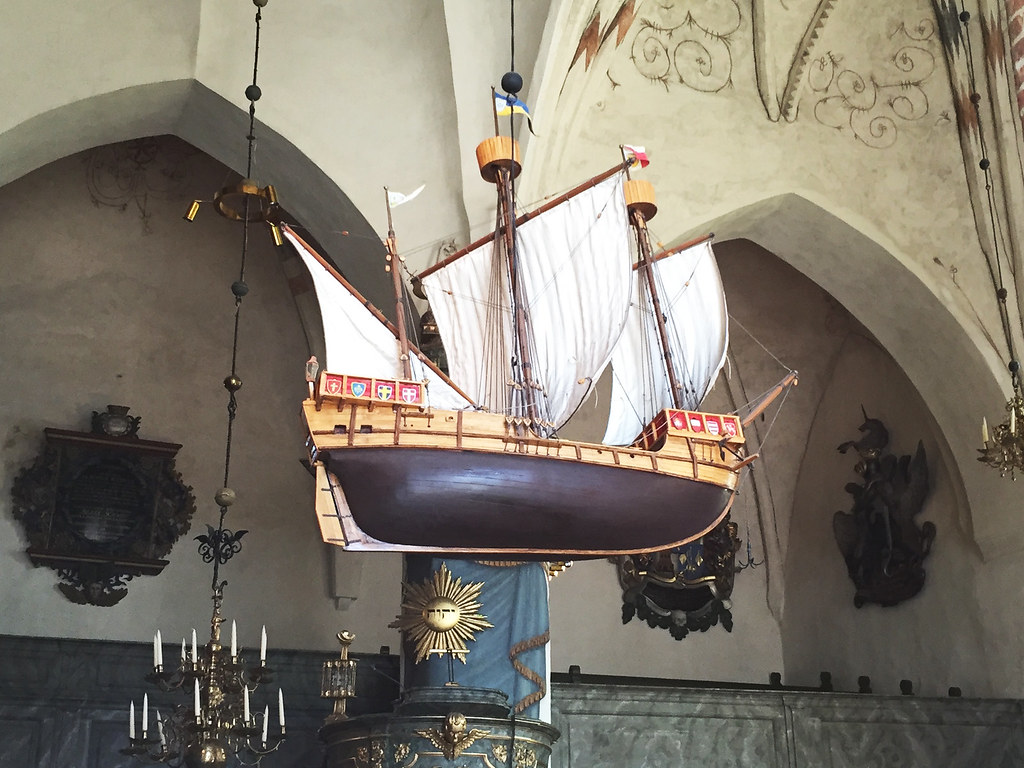
Really neat eh?!
I wonder how many of you had never seen or heard of these models.
Anyway, my trip back was uneventful, just stopping to take meals. I remember thinking on my way back how much I was going to miss my trips driving in Europe and I was right. Bosnia was a disaster for my outfit. I did a great job getting our equipment down to Pecs Hungary, but the rivers were so swollen we couldn’t do anything. The bridges were quite literally medieval and so we started to build our own. Initially one of the generals got the bright idea of trying to cross the Sava river using the fording kits on the Bradley fighting vehicles. That was a disaster. Damn things flipped over in the drink and drowned a bunch of poor guys.

Once we got in we had no tank support because the roads couldn’t handle them and everything was water-logged. I felt so guilty because I had orders to leave to go back to my advanced course since I was being promoted to Captain. Just as all the fun was beginning with mines blowing off guys legs and snipers shooting friends I had known a long time, I got direct permission from the General that I could leave. He reminded me before I left that he could F**k me if he wanted to and make me stay – but that I had been a “good guy” so he was gonna let me leave….. and back I came.

After I got back I was told that a lot of bad things happened in my outfit. My partner in crime through thick and thin – a senior black Sergeant First Class, went nuts after I had left. We called our chiefs of Firing batteries – “Chief of Smoke” or “Smoke for short”. Most of the men would address him that way because it was like a title.
A conversation might go, “What the hell you think your doin son? That .50 is not correctly oriented to the sector on your range card? Do you require some remedial training soldier?” response, “No smoke, sorry smoke (pointing the weapon onto the sector correctly), I got it!”
Me and him were the perfect team. We knew what one another was thinking and had the highest regard and respect for one another. His nick name back home on the block was “Junebug” and mine had been “Rock”. When we knew the men couldn’t hear us, I would call him Junebug and he would call me Rock. “what’s up Junebug?” “Oh nuttin much Rock.” One of the funniest things I ever heard was from him – he had a great sense of humor.
In the Army we have an old saying that whenever you’re tired in the morning or just can’t get going, it’s called “draggin ass”. One morning I saw he hadn’t gone out to check the gun line yet and it was almost light. I came up to his hummer and asked him “what’s up Junebug, why haven’t you gone out to the line yet?” He replied, “Sir, I got the Chinese disease this morning.” I chuckled not knowin what the hell he was talking about. “What the hell’s the Chinese disease Smoke?” He smiled and paused for a second and then said “You know, the Chinese disease – I got THE DRAGONASS cause I’m draggin ass!” Took me a second to put the joke together with the whole oriental dragon business, but I got it and laughed my ass off. I’ve used that joke ever since.
Junebug was found miles away at some lake. He was lucky he didn’t get his leg blown off because plenty of other men had with all of the mines everywhere. They found him fishing with a pole he had made himself and a bottle of Wild Turkey – how he got the hooch I will never know. Maybe he had brought it with him from Baumholder and kept it squirreled away for a special occasion. I heard they busted him and sent him back to the states. I should have volunteered to stay. I’ve always wondered what happened to him after that.
I’ve been back to Europe many times since then, but only for a few weeks at a time and mostly for work. It’s never had the same magic it did back when I was that young inspired leader of men. I thought I could do anything. Boy was I ever wrong.
I have found myself at times day dreaming about driving that old slightly beat up black 1987 Mercury Lynx 5 speed manual that I had bought for $600 dollars from a young soldier (a mechanic) who had worked for me and had orders to return to the US. That car was awesome – it ran perfect. I remember one time I got a flat tire in the middle of Austria and pulled off into what looked like a rest area. It was a historic site. No one was there. The signs pointed to this rock that was elevated above the ground on a little mound facing the road. The rock was not carved really. It had a sort of weird natural shape of a huge chair.
It was called the Königsthron and the explanation was that way – WAY back – German tribal chieftains would gather there and their highest leader would preside over a council of warriors and chieftains there. I sat in the seat and imagined. No one else was there. I thought to myself that a German tribal war chieftain from the dark ages or pre Christian era Sutton Hoo culture would never have been able to imagine the road that now ran in front of the old stone seat and would really never have been able to imagine my crappy old Mercury Lynx. I chuckled to myself imagining that I was the war chieftain – and then I walked back to my jalope and changed the tire.
I wish I were back on the autobahn in 1992 right now.
MK
Posted in Historical Sailing ships, Model Sailing Ships by modernknight1 with 2 comments.
A Most Murderous Monument
Sometimes things are not what they seem on the surface. Indeed in my study of history I continually discover buried truths which were hidden purposely for one reason or another.
People have a way of only wanting their point of view represented even if its hundreds of years after the fact and most people do not give even the slightest care about the matter any longer. Often when we travel we find monuments to the past. Sometimes they simply stand to commemorate some great event or person. Sometimes they are exactly what they purport themselves to be and nothing or little more. However, sometimes I have noticed, monuments are much more than just what they appear to be on the surface.
Take our current subject. On the surface it seems a column which commemorates some great event of the past. This particular monument labelled La Consulaire sits just outside of the French Naval Arsenal in Brest France. It appears to be a monument to celebrate a French victory over the Barbary Corsairs – a bombardment, invasion and successful seizure of the city of Algiers. But in fact this monument is so much more.
Recently this monument has been the source of some minor controversy because it is not just a column of French military triumph over the Barbary Corsairs – in fact it is not a column at all. It is in fact – a HUGE cannon turned upon its cascable with its muzzle pointing into the sky – resembling a column.
The reason for the controversy is that the government of Algeria would very much like to have their cannon back as a matter of preservation of their national heritage – the return of a great artifact of historical significance to them. If one reads the news articles on the subject, the French come off as being somewhat imperial or mean spirited because they refuse to give up this artifact of the past. In fact there is so much more to this story than the news reports tell us and when you find out the bloody history of this relic, I think you will agree that the French are very much justified in keeping this old piece.
The gun is much older than one might imagine, forged thirty years before the great allied Christian victory at Lepanto in 1571 where the Ottoman sultan and his Barbary allies were defeated in the largest naval battle in history. This turned the tide of almost unopposed Muslim domination of the Mediterranean for the preceeding several centuries. Spain and the Italian city states had stood as a bulwark against the Ottoman naval onslaught. The struggle had been long with the Ottoman Empire slowly wresting away island after island and fortress after fortress away from Christian nations and knightly orders piece by piece.
The powerful “Dey” or Sultan of Algiers, Hassan Agha, had become rich off of Christian European ships seized by his pirates and the sale of both their cargoes and thousands of enslaved Christians. Huge wealth was gained both from ransoms and/or the sale of these European crews into slavery. To show off his great power to the world Hassan Agha wanted Algiers to be the most fortified city in the world. He wanted its defenses to bristle with as many great guns as he could acquire. As the center piece in this great new defensive armament he wanted a great gun to be made for him personally which would be more powerful than any other gun yet made in the world. He turned to a master gun maker from the world famous Arsenal in Venice LINK
I have been unable to unmask the identity of this gun maker. I will keep digging. The back story to this is probably fascinating in itself. A simple gun smith might seem to be unimportant to history on the surface, but remember that the history of the world would be much different now if not for one particular Hungarian engineer/gun-smith – the famous Orban the Hungarian Orban LINK .
His invention brought down the walls “that had withstood a hundred sieges for a thousand years” – the great fortress city of Constantinople renamed Istanbul because of his guns.
Venice was known at this time to have the best gun works in the world. How would a master gun-smith be enticed into employment to the Dey of Algiers – who was considered a nefarious enemy of Christendom and the son of the great pirate lord, Barbarossa himself?
Was he approached by a secret agent of the Dey in a clandestine meeting and offered more money than he could possibly refuse? History always triggers my imagination beyond the best work that fiction can offer. I hope to someday find out what actually happened. Another historic mystery I will add to my ever growing list of inquiries.
This gun was cast in bronze and was bigger than any gun the Venetian Arsenal had ever produced. The gun barrel itself weighed 12 tons and was 7 meters (or 23 feet) long. It’s massive bore was 10 inches and it could hurl a stone or 92KG (203lbs) ball of iron round shot almost five kilometers (3 miles) – an almost unheard of range at this time.
This gun could target ships outside of the harbor long before they could bring their own artillery to bear upon the city. This unholy war machine was named Baba Merzoug in Algerian Arabic. This can’t be translated well into English. Merzoug which is a popular Algerian name has been equated with luck, but in my study of the word a better translation would be harmony, balance or equality.
So the gun’s real name would mean Father of Balance or Father of Equality – In other words THE GREAT EQUALIZER would be how the Dey wanted to have his gun thought of. Indeed, the gun was everything it was meant to be. I have not been able to find accounts of its accuracy or its war record before the unfortunate events which have branded the gun with its newer and current French name of La Consulare.
As a professional artilleryman myself (retired artillery colonel and member of the Honorable Order of Saint Barbara), with a large amount of real experience with firing obsolete and antique artillery, I would imagine that this gun was quite accurate given the incredible length of the barrel. I have never seen a gun from this period with this kind of length. It more resembles pieces from 300 years later than those of its own era.
One hundred and forty years after the guns manufacture I imagine that it had fired hundreds of rounds in anger against many opponents. Algiers and other Barbary cities like Tripoli and Tunis had been the focal point of many bombardments and punitive expeditions by numerous European navies by this time. Algiers itself was the focus of regular punitive expeditions: Spain (1567, 1775, 1783), Denmark (1770), France (1661, 1665, 1682, 1683, 1688, 1830), England (1622, 1655, 1672), Anglo-Dutch (1816) all leading naval bombardments against Algiers.
When the famous French Admiral Abraham Duquesne mounted his naval campaign against the Barbary pirates in 1681 he subsequently bombarded Algiers in 1682 and came back in 1683. This is the same Admiral Duqusne responsible for the death of the illustrious and beloved Dutch Admiral Michiel DeRuyter after the Battle of Agosta in 1676. The French navies assault upon Algiers in 1683 was massive. The artillery barrage from the large capital ships destroyed many of the guns of the fortifications as well as reigned death and destruction down upon the city itself destroying many ships, homes, mosques and even the Dey’s own palace.
The inhabitants became so enraged that they rose up and killed the Bey/”Dey” of Algiers, Baba Hassan, for not being able to protect them and not taking action against the French. The Dey’s successor (a corsair captain called Mezzomorto) decided to immediately do something about the bombardment by ordering a couple of dozen Christian hostages/slaves be brought to the walls – among those the better known and most prominent Frenchmen – to include the French Consul(La Consulare) to Algiers who in the previous attack of 1682 had gone aboard Duqesne’s flagship to negotiate a prisoner exchange.
The Consul was well known to Algerians and their leaders and had been held in the highest esteem (even among Muslims) for decades. Only two years before he had been instrumental in negotiating the payment for and release of thousands of Christian hostages/slaves. Often these negotiations would invlove a prisoner exchange as well with many captured Barbary pirates being released into Algerian custody. Numerous captains made names for themselves in these exchanges.
Just decades before, the great DeRuyter who was just a young captain (not the famous admiral we remember now) was busy aboard his own privately owned merchant warship, “The Salamander”, exchanging hundreds of prisoners and then taking the released Christian prisoners back to their homelands. In a time of rampant politically correct revisionism where I myself have been chastized for my admiration of many of the great navy and privateer captains of this time on the grounds that they were infamous slavers themselves, we find in DeRuyter – not a villain – but a hero who released slaves, There are statues and streets named after the man in other European countries besides his own because of his actions early in his career. I digress.
The French Consul to Algiers was named Father Jean La Vacher. La Vacher had been assigned to perform missionary and hospital work within the cities of the Barbary Coast. He was first assigned to Tunis in 1647 by the famous (Saint) Vincent DePaul to aid and comfort Christian slaves during a plague which had broken out there. His work and compassionate aid to both Muslims and Christians alike earned him both a reputation of being a healer, and also an intercessor and mediator. He had caught the plague himself and was expected to die – but he lived. In 1652 the Vatican named him the Vicar to Algiers and the Barbary cities.
According to common Muslim law, Christians were allowed to meet and worship. However they could not build churches or maintain the existing ruins of churches – so Vicar La Vacher would hold services in the open air and had no real church or office within Algiers (other than the prison itself) to call his own. He became instrumental to the French Conul L’Ange de Martin who La Vacher himself had healed. The Consul asked La Vacher to replace him as the French Consul upon his death but La Vacher was reluctant. With the later death of de Martin, La Vacher recommended one of the French merchants to become consul, but the Dey Baba Hassan when hearing about La Vacher’s reluctance, insisted that he become consul.
So now back in 1683 and three days into the second French attack/bombardment upon the city of Algiers on July 29th, we find a dead Baba Hassan and an empowered usurper Mezzomorto (which amusingly in Italian means Half Dead or partial death). According to the old stories/narratives of the events that come down to us, Mezzomorto labels La Vacher a traitor to Algiers and informs him that he is to be blown apart by placing him in front of the muzzle of the great cannon Baba Merzoug while its fired.
Subsequently his remains would be stuffed into the cannon and blown out onto the French ships in the harbor in its next firing. He was given a chance to live if he would simply renounce his Catholic faith, become a Muslim, and “don the turban”. La Vacher responded “Keep your turban, and let it perish with you. Know that I am a Christian, and at my age, one does not fear death. I abhor the false law of Mohammed and I recognize only the Roman, Catholic, and apostolic faith as the one true faith. I profess it, and in its defense, I am ready to shed my blood to the very last drop.”
With that rebuff, Mezzomorto responded “Let it not be said that a Muslim took this man’s life”. He offered money to a group of Jewish merchants if just one of them would take up the botefeux with smouldering match and light the touch-hole of the cannon to set it off. The Jews refused. The same was offered to the Christian prisoners who were told their lives would be spared and that they would be given a sum of money.
One French Christian prisoner took the deal and set about to do the work he was charged to. When he took up the botefoux he became paralyzed. This was seen as a miracle among the Christians and no other could be made to take up the match stick and light off the great cannon. An angry Mezzomorto then ordered one of his own men to set off the great gun. As promised, the now mangled and shredded consuls body consisting of remaining pieces and parts, arms and legs, etc, was stuffed back into the gun and blown out upon the French attackers. The next 20 French Christian prisoners followed La Vacher into death with the same grisly fate.
Death by cannon was not a new thing. In my story of the first battle between East and West in Asia at the Battle of Diu in 1509, we find the Portuguese naval commander dispatching his Muslim prisoners in the same way (LINK to Article). At the great siege of Malta in 1565 (LINK ), Jean de Valette, Grand Master of the Knights of Malta responded in the same way and ordered the Muslim prisoners beheaded and cut into pieces so they could be blown out upon their Ottoman attackers.
As I have always maintained, atrocity begets further atrocity and I don’t think Valette would have taken such action if he had not witnessed the Muslim Ottomans make a mockery of the crucifixion of Christ by crucifying dozens of Christian prisoners on the beaches in direct view of the defenders to attempt undermining their will to fight. It had the opposite effect – stoking their anger into the grisly counter reaction which occurred.
Our story ends with the French finally becoming fed up with Barbary piracy and the rogue city of Algiers. They not only bombarded the city once again in 1830, but they subsequently captured and held the city as a lynch-pin in their expanding new colonial empire in Africa. Algiers would stay French for over a century after.
Admiral Duperré confiscated all of the old impressive artillery (which was a common practice at the time and into the next century) including the great Baba Merzoug which had by this time received the name we know it by now – “La Consulare” – because of its use as a tool of heinous execution in the death of the benevolent French Consul in 1683. Admiral Duperré, very aware of the old story ordered that the great gun be dismantled and taken to the Royal Arsenal at Brest and made into the monument we see today.
Atop the muzzle is now the sculpture of a metal Rooster or Cock balancing upon the old artillery piece with an iron ball under its foot. I have not been able to find out what the intended symbolism behind this rooster was or is – so I can only speculate. The first thing I thought of is how Christ told Peter that he would betray him three times before the cock crowed. Here we see the martyr La Vacher who was steadfast in his faith and even when offered his life would not shirk or flinch in his beliefs. In Biblical tradition we know the Cock is a symbol of gallantry and honesty. One of the titles of the Priests of the old Temple of Hashem was “Rooster” which I think was meant to mean watcher of truth.
In an old southern European and Iberian story that comes down to us from folklore we find a weary traveler accused of the theft of food upon a table at an Inn. When he faced his accuser he claimed that the Rooster who stood upon the table intended for him to eat of the bountiful feast upon it and would loudly crow as soon as they put a noose around his neck.
The judgemental man ignored the warning and intended to hang the traveler then and there. True to the man’s testimony, the Rooster stood up and crowed, telling the people of their terrible error. Thankfully a poorly made knot kept the accused from dying and he was given his freedom to travel once more in peace. In southwestern Europe the Rooster continues to represent truth and equity, particularly in matters of law. I can only imagine that this rooster atop the monument in some way professes the truth about what happened regarding this ancient and impressive implement of death.
….sometimes all is not what it seems on the surface – and now you know, the rest of the story. From MK, Good Day.
Aaron R. Shields (a.k.a. MK)
Posted in History of the Golden Age and tagged cannon, martyr, monument by modernknight1 with comments disabled.
The Future of the Storm 2.8 Game Engine
Hi All, MK Here,
Well today I want to talk about something near and dear to my heart. The Future of the Storm 2.8 Game Engine.
I have heard it criticized time and time again by numerous people. However, I really think these same people actually have very little knowledge as to how game engines or simulations core software work in the first place.
Let me give you a little background. I have been responsible for a lot of old sims software professionally over the years. Just because something is old, does not mean its bad. On the contrary, the military often will keep very good and efficient software around for decades. Think about a hot rod. If the core design is really really good and does most everything I want it to, I may just upgrade the motor to a new cutting edge higher horsepower version and add some modern electronics and gauges to the dash and interior. However, the core design of the car is still there.
It’s largely the same with sims software and game engines. Some of the best sims I’ve worked with were thirty plus years old – however at their core they were extremely reliable, mathematically much more complex, detailed and even more elegant and beautiful than their modern counterparts. They always produced “repeatable” results which is something that a lot of modern engines and sims cores cannot do – because they simply are not “mature” enough yet. So we simply upgraded those old sims, sometimes taking over a year to build a version in a different computational language even. To say that they will not support modern graphics is just ignorance. Good solid source code can always be expanded upon to support better physics or more modern graphics – its just simply a matter of know how.
A few of us in the small Age of Sail/pirate video game community have said that the Storm 2.8 engine has never been brought to its full potential. There is so much more that can be done with it. PO:TEHO is another example of this. It is vastly different than its predecessors and cleaner with many more things that can be done. When one looks at the shatter effects on the ships and masts alone, you can clearly see the improvements. When video of PO:TEHO was first released critics from PA! immediately pounced, exclaiming critically that it was still using DX9 graphics.
Lets examine this from a marketing perspective. If I knew that a majority of my customer base were still using older computer platforms, would I upgrade the engine to support newer graphics? They were going after their own national market first and the global and western market last. Face it, these kinds of games just aren’t as popular in the west unfortunately.
Lets look at the Naval Action effort. They are clearly targeting the western market with an MMO. Therefore they know that the majority of their customer base is going to have the best equipment out there that can support the newest graphics.
I see no impediments in the future to modern upgrades to the Storm 2.8 engine that would allow it to support many more functions to include modern graphics. Who knows if there could be even more Storm 2.8 engine based games offered in the future by Russian developers. I think it is very possible and hope it happens. I would love it if the next game in the pipeline simply blew the minds of its critics and especially a certain community that “threw out the baby with the bathwater”.
To illustrate visually the points I was making above, please take a look at the following videos of enhancements made to the STORM 2.8 Game Engine. I think the future is VERY bright indeed for the Storm 2.8 Game Engine!
MK
Posted in Uncategorized by modernknight1 with comments disabled.
Latest developments in the GOF Eras 2 mod
20 OCT 2014: Hello All. Here is this weeks progress. I have mainly been reskinning and reclassing Merchant vessels to better balance encounters. Flickr.com I am also working on a couple more Spanish warships. The Neptune is coming along really nice and I am more proud of her than anything I have done yet. You will see my work on her later this week. This adds a distinctly mid 17th century Spanish warship to the game. When I get my
Dutch Yacht finished in Maya I think I may take on the “Nuestra Senora de la Concepcion”. Flickr.com https://www.flickr.com/photos/49225014@N05/sets/72157646545564043/ I have found excellent surviving plans and models of her. She is HUGE and VERY GOLDEN AGE/17th century.
The pics up right now are of the new merchants. The version of the Pinnace that I made to represent that type of ship in continental merchant fleets really turned out nice. One of the skins I call “El Sol”(the Sun) turned out so nice and is an homage to the late famous tattoo artist Greg Irons. I added his famous picture from the Pirate Book on Flickr so that people can compare. Iron’s Pirates Flickr.com I think I did pretty good. Flickr.com
So I made some really interesting discoveries on my contining research of 17th century ships. Once again relying on Spanish sources rather than English I discovered a neat little ship called a “Zabra”. Over the course of history in the New World there were quite a few times when the Terra Firma and New Spain Flotas (Treasure Fleets) would be so damaged by storms or threatened by enemies in the area that the King of Spain would order the Flotas to stay in place and make repairs or wait. When the fleet was very heavily crippled which happened quite a few times it could take a year to repair and get on its way. This was not acceptable to the Spanish Crown that relied so heavily on the income from the treasure fleets. So the King would dispatch small fleets of Zabras. Zabras were of a specifically Catalonian design with a Flemish influence. Often these ships were commissioned to be built by the King himself and constructed by the best Catalonian and Flemish ship builders available in the employ of the Spanish Crown.
Zabras were already used as couriers and could make the Atlantic passage in as little as 20 days. This is remarkable when one considers that the treasure fleets took three to four months to make the passage. The Zabra was not only one of the fastest ships in the Spanish Navy, but she was also well armed for her size which averaged around 250 tons (vice the average galleon that weighed between 500 to 1000 tons). By sending fleets of 3 to 12 Zabras, the King could get a sizeable amount of treasure in his coffers in less than two months time from the moment he gave the order to sail. So I gathered as much information I could find about the Zabra and found that she had the lines of the Flemish/Dutch pinnaces combined with features of the English and Spanish fast galleons. She was in use from the middle of the 16th century up to the last quarter of the 17th century. So I chose a model that would look most like her 17th century incarnation. I will probably eventually model one based on some woodcuts I found, but for now thought she most resembles the little Pinnace from POTEHO that I morphed and called English Pinnace. So here for your pleasure is my now Spanish version of her called the Zabra. I hope you like her. I made her very fast, distictly Spanish flavored and I think she is a pretty little vessel!
So now as to why I have not put the website up yet and distributed the mod out to you all? – you ask! So the primary reasons are that I have been very busy. Things have not been going as well as I would like. I have been travelling more than usual and I have not only been very engaged with personal and professional responsibilities, but on top of it all I have been injured…again! All this to say that I have been delayed with getting the mod finished and the website finished (although it IS almost ready!).
There have been good things happen as well. I have added several really cool new items. I fixed a bothersome bug with the Indian(Erikson) showing up instead of a new skeleton that I made for the encounters with Flying Dutchman raids on towns. Everything is fine now and you will never again see that pesky unrealistic Indian in the game ever again. I also fixed a bug with the additional fighters. I have tested four successfully and am now pushing to get five fighters.
I think four may be enough though. That extra fighter really gives you an advantage in quest fights. Two additional may be a little much.
I still very much appreciate your encouraging emails but I have to comment that negative nagging does not help me to finish. Also please do not say that I made promises or broke promises because that is just not so. I will remind everyone that I made this mod for ME and my closest family and friends. The only promise I have ever made is that I will get a website up and will release the ERas mods to you. I will honor that promise, but I have a problem meeting projected timelines and probably always will. I always have the best of intentions but I get sucked into so many distracting responsibilities or problems. I am sorry its not ready yet however I want to remind my fans of some reasons why I will not release yet….
*** When I initially released the mod I was still heavily involved in some transitional code involving
flags, weather, and sound. I should have never released it until I had it sorted out. It is of course
perfect now and does not crash during large battles, you have a better variety of flags than ever before than any pirate game existent, and there is no further graphical glitching or anomalies. However, becaue I felt so pressured by fans, I released anyway. What a mistake! While so many of you enjoyed it anyway, there were others that just raked me over the coals. In fact one of the staff members at PA! who I regarded as a
friend (Hylie) called it a “buggy mess”. That really hurt. So all that to say that I will not release it
until I have it just right and you guys will be in heaven when you play it. We are very close!
So on to the website, It is so close, but there are still a couple of subject areas I am trying to get
finished up and I am trying to finish one of my stories as well so that you will have the whole thing up
front.
I also plan to very prominently display a statement of forgiveness to all those that wronged me at the top of the site that explains the reasons why I was driven to create this new site in the first place. When all
that business was happening I told them there was no reason we couldn’t cooperate but they weren’t
interested….now they will see what a true Historical Pirate Genre website SHOULD look like!!! LOL! I know
many of you that are my friends or fans, left PA! after what they did to me and I appreciate your loyalty.
I also must apologize that I have not got the new site up and running yet so all of you COAS junkies like me will have a new Forum home.
Even though I still feel horribly wronged and unfairly villified – and those of you who know me, know that
I am who I have always said I am. I am a retired US Army Colonel and sims/ enterprise expert. I am not a hacker – never have been – and I am not at all a bad person – OR all of these other people that I have been accused of being – (any person who really wanted to take it upon themselves to dig for the actual truth, could see who is me and who is not based on IPs and location traces.). They banned all of my interested
relatives and friends that I had encouraged to join and contribute and had at one time or another used my netbooks (IPs) or my main 10 port CAT5 router IP. Most of those folks just signed up on PA! as a favor to me and it was really no big deal to them, but it hurt me anyway and it especially deeply hurt me personally
because of all the time, effort and love I put into PA! for so long – and – as I don’t think I deserved
that kind of treatment after so much contribution….I will say again that I was never warned.), I am still going to offer the statement of forgiveness regardless and offer the olive branch because I want to see our hobby grow (why can’t we all just get along) and the interest in our great game COAS to expand.
I’m not a monster…I am a dedicated Age of Sail and Pirate historian, afficionado, and video game
hobbyist. Otherwise why would I have this blog page and my Flickr site? Why would I spend so much time writing on this subject and crafting a historically authentic mod with correct period ships, characters and weapons? Would a troll and hacker do that? No…but a dedicated hobbyist would…..which is what afterall….I truly am…..and anyone with a brain in their head can clearly see that.
I think I can safely say that everything will be up and running and ready to go (and the mod released)
before Christmas(probably much sooner), but I DON’T WANT to MAKE ANY PROMISES. OK???
I will make one limited offer however….while I have my new modeller friend hard at work on some things that we will enjoy next year, for ANY modellers (including guys I already know) that want to join me or contribute new models to my effort, once I have received an agreement with you – and new model(s) have been received, I will give you a working link to the current working version of ERAS2 to play. So just contact me at my email and lets talk!
PAX, my friends! MK
9/26/14: Good week! Lots of new screenshots on Flickr Flickr.com These are some good ones. I continue to reskin ships on my improvement list and they are just getting constantly better! I have played to level 43 with no problems or issues. Everything is working great in Eras2. I have played through all the quests personally except Austin. They all work. I have found a few small bugs along the way and fixed them. Your emails have not fallen on deaf ears. I will find a way to release Eras2 publically when the website goes up in a couple of more weeks. A way which will ensure only interested people get it and my content is safe. I almost have a solution. Just wait till you see the new site!!!
9/15/14: More breakthroughs! Good week. Many more photos like the ones above posted to Flickr! Flickr.com
9/02/14: Many more pics posted to FLICKR Flickr.com Thank you for all of the supportive emails after the last announcement. Not one negative one! I can’t believe it. A new modeler has joined me and he is more talented than any I’ve ever seen. So I am hoping for great things!!!!
8/30/14: IMPORTANT UPDATE: Most of you will not like what I’m about to tell you but I must. I have had a GREAT year concerning my personal life and my professional life. Lots of new opportunities have presented themselves and I have sailed oceans, climbed and skied mountains, floated rivers, hiked trails and seen many people I love dearly. ====
However, one of the companies I was working with has gone back on our original understanding. Instead of developing a commercial Age of Sail Game they want me to go in a different direction and I am not interested. So the gaming division that I have built will continue on without me in the driver’s seat. The good news is that much of the support, backing and talent I have put together are only interested in my original ideas. Having said that I will very likely start my own Gaming Development Company next year at some point.
As far as the new website is concerned and my hobby of video game modding goes, these things will continue, however not as I originally intended. The website will be stood up and offer the best content on the web with regards to historical articles about the Golden Age, the latest Age of Sail news, models, simulations/games, trivia, etc. Mods will also be offered. I will offer mini mods for members.
HOWEVER, I am sorry to say that GOF Historical ERAS Mod 2 will only be offered to a select few that are trusted friends, Beta testers, and family. There are some very important reasons I am taking this drastic decision. The primary reason is all of the character assassination of myself and accusations made by individuals on other web sites that work in the genre of video game modding. I have been accused of taking ships and material without permission. I can assure everyone that 99 percent of ERAs content was taken with permission and 100 percent of the content has been recognized giving credit to where it came from.
Now let me explain myself concerning the 1 percent I took without permission. Everything I took was from mods or material that was offered on the web for free. Everything I took was modified, often extensively from its original form. The people I took these items from had taken items from versions of the CMV and from GOF without asking permission from the GOF modders, so I followed in turn thinking that we had an open understanding considering they had taken content from us. Considering that Luke159 and myself are the only members of the original CMV and GOF team left around, permission should be asked of one of us…..but it hasn’t been! So if they make these accusations at me, then I turn them right back around on them.
So what does this mean??? Well it means that I will be releasing many mini mods of my Characters, my Items, and my retextured and morphed Ship models. However I will not release ERAS2 publically because I do not want to give away my best secrets. My new harbor clutter behavior implementation will remain secret, my multiple fighters implementation will remain secret, my dozens of new islands and new locations capability will remain secret, my new multiple sail texture implementation will remain secret, my new multiple flag implementation will remain secret and my lower boarding deck implementation will remain secret. The way I implemented the multiple flags and the lower decks is much different than how it was done in POTC New Horizons or in the Russian mods, so no one is going to figure out how I did it.
The good news is that when my new website comes up public, you will be able to DL many of my new characters and ships for any version of GOF. However, since everyone in the community seems to have become so prudish and selfish I will follow suit. Anyone who wants to use any of MY content in their mods must have my express permission before they can use it. On top of this I will upload GOF ERAS Mod3 (the late era) on the new site. Since this mod will not have any new ships in it, I will allow complete downloads of it since it does not have any of the AWESOME breakthroughs in it yet that I achieved for mod two. It has a bunch of new late period characters that I have made that I don’t care if people steal them from me anyway. So the encounters will be all late era ships that look correct for each nationality just like in ERAS2.
I must apologize to my fans for such drastic action, but the pirate game community has been very unfair to me this year and this is the result. I have been accused multiple times by several individuals of attacking and hacking. I will state to everyone that I AM NOT, NEVER WAS, AND NEVER WILL BE A HACKER! In fact on the contrary I am the one that has been attacked, banned unfairly without warnings, and hacked by several members of these communities that I have been able to trace and identify because of my background and through some of my friends in the industry. Only one of these attacks was successful and it did not set me back that much.
All of this is really unfortunate because I was hoping to work with some of these people when my website went public and I was even going to prominently showcase the German work there. Oh well, what a shame. The good news is that I have made many new Russian friends and the Russians are doing such great work. The future of the Storm Games is still very clearly with the Russians and I will promote and help them all I can on my new site.
The only way my decision on this stand will change is if some of these people come forward to work with me and reconcile with me. However, I very much doubt this will happen because 1) they don’t care, and 2) they have formed cliques that are only concerned about a couple of little pet projects. Many of these folks have become prudish, judgmental, selfish and are really simply just hypocrites. They have NO interest in sharing or working with others to really make some great stuff. So if you want to blame someone, don’t blame me – blame them. If they wont openly share, then neither will I and that is why only my most trusted friends will continue to have access to ERAS2. I will continue to post pictures of my work on Flickr and I will continue to make all of my sets available to the public even though I know some of the people I just spoke about have used these same pictures as reference in helping them to construct ships which they do not wish me to have access to. Hypocrisy I say.
These pictures will continue to visually show off my progress but unfortunately for most will only remain “eye candy” unless something changes. I would like to thank all of my fans for their many views on my FLICKR Photostream as my FLICKR photo sets just reached 1.4 Million views as of last month! WOW! I never thought I would reach so many people! Thanks and I am really sorry to have to do what I must. Sorry Folks. Keep your stick on the ice. MK
8/26/14: Hi all. Very busy. I posted a few new screens here and a bunch on Flickr. Flickr.com More will be going up soon and I am happy to say I have some new videos as well. So I will be opening my YouTube channel back up again soon once the remaining PA! content is stripped out.
For testers waiting on the latest dump I am sorry I have been delayed but when you see the few new ships and items you will think its worth it.
I have to comment that my occasional surfing of PA! always gives me such a laugh. No one can answer COAS questions and the comments by POTC moderators and admins continue to offer no guidance and are often laughable. I’ve heard them say that they have all the best ships in New Horizons and that couldn’t be further from the truth. Hilarious, but they don’t even know because none of them play or are familiar with COAS mod work.
I also find it very humorous that they have switched their HOO effort to Unity and they are now soliciting donations. What hypocrites! LOL! I recommended both of those courses of action at the beginning of their discussions but was shot down. Too funny. Their deletion of a fine modelers work that I commissioned to build the Zeven Provincien has driven him underground. Yeah so I paid him a thousand bucks. Big deal…I was planning to share the model with everyone – and it was almost done. What a shame! I still have all his files so I could finish it later as I continue to progress in modeling or find someone else to take it on.
Due to heavy work and family commitments the website is delayed to September or October. I could go public now and I am tempted to because of all of the COAS questions that don’t get answered. It such a shame that folks think they still can’t buy this game. For those that read this, Micro Center in Kansas City, MO, USA (look them up on the web) has hundreds of very cheap copies of this game ready to go. There are other sellers as well.
When the site goes up people will set up and take notice – simply because of the rich historical and subject content that is already very mature and ready to read – as well as the fact that the site will offer 50 times the surfing enjoyment for the Pirate and Age of Sail aficionado than PA! offers. So just stay tuned a while longer.
For those fans of my stories, the ones that were unfinished will be picked up again and there are new ones as well. Also I will return to offering a serial episode of the latest story every week again.As far as Eras2 goes it looks better and plays better than ever and we will continue to grow and expand it into its full potential.
7/26/14: I will continue to post progress screens of what I believe to be the best and most historically accurate Golden Age of Piracy Simulation on the planet: Flickr.com
Beta-Testers have been selected and contacted. Two I have been unable to contact successfully. Beta-testers: The link for the mod will only stay up for 48 hours so please Download immediately as soon as you receive your link. Keep in mind that the link is protected and you can only unlock the mod link by providing the email address that you provided to me when you asked to become a beta tester. Please do not share the link or the mod with anyone.
With stability now near perfect, all major bugs fixed and all quests now working, I am looking at this point in time to root out all small bugs so that the game will be polished to near perfection. I am also looking for recommendations on additional characters, ships, items, weapons, etc. I think I have figured out quests enough that I am finally ready to start implementing my own unique quests. So we can discuss these ideas as well.I am very busy for the next couple months. Our progress here will determine if and when I release the mod to the general public.
Posted in Uncategorized by modernknight1 with comments disabled.
